Rome
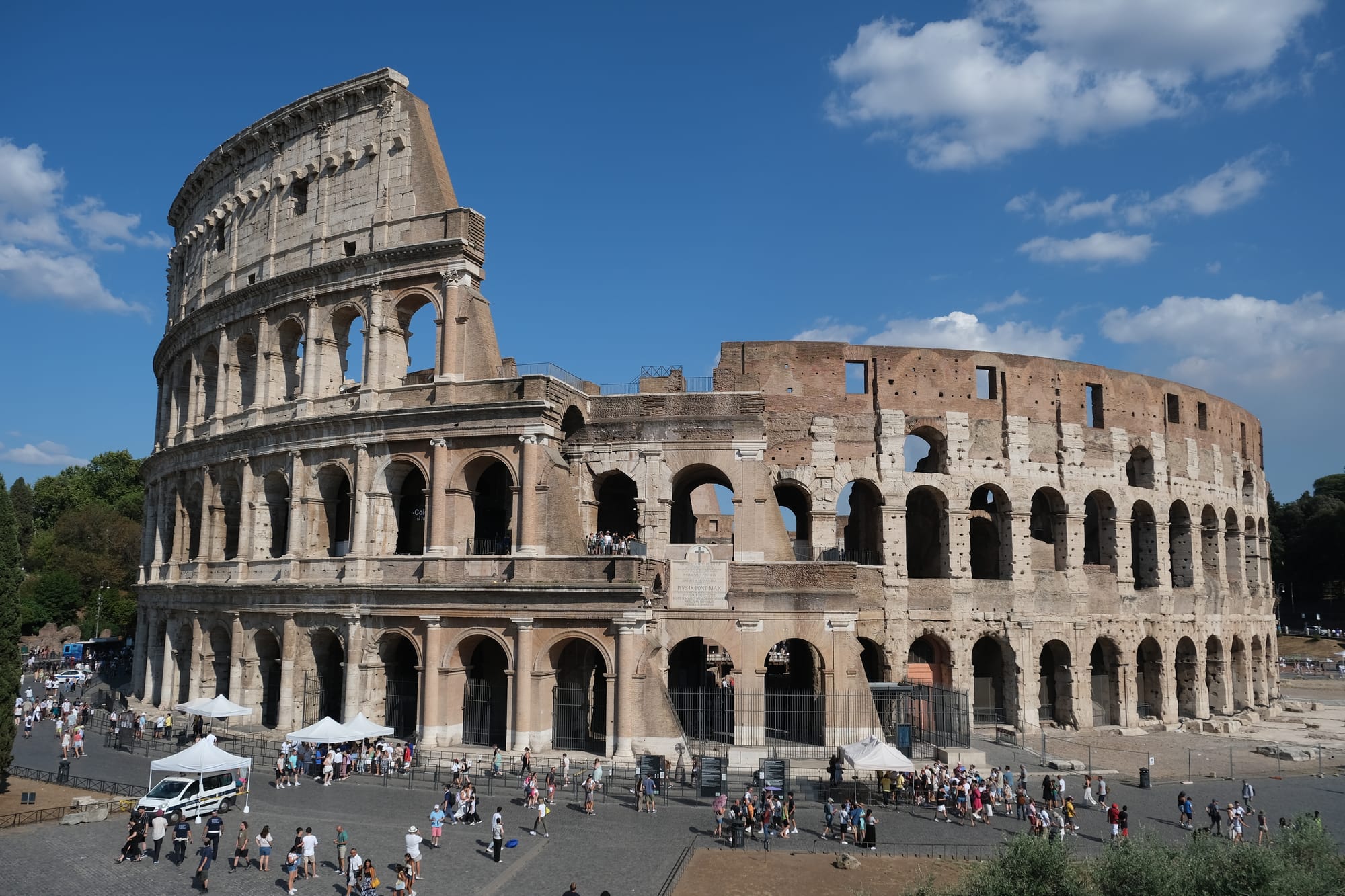
The final destination, in my big trip across Europe with my brother, was Rome. We both have an interest and appreciation for history so, when choosing our destinations for Europe, we wanted to make sure Rome was on the agenda. A big focus of our visit to Rome was seeing the ruins of the ancient Roman capital; we went to the big tourist places, like the Colosseum, but also found some quieter spots. There are so many archaeological sites in Rome that there are heaps of places to visit that aren't overrun by tourists. This was probably what surprised me the most about Rome: some places (the big tourist items) are overcrowded almost all of the time, and yet other sites are virtually empty, and there was nothing in-between, with a medium level of crowd density, it was one or the other.
In our first day in Rome we went for a small walk to: the Pantheon, the Trevi fountain, and the Spanish Steps. The second day was touring the Colosseum and the Roman Forum. On the third day we visited the Vatican and then completed an extensive walk around Rome visiting some more historical sites.
Pantheon
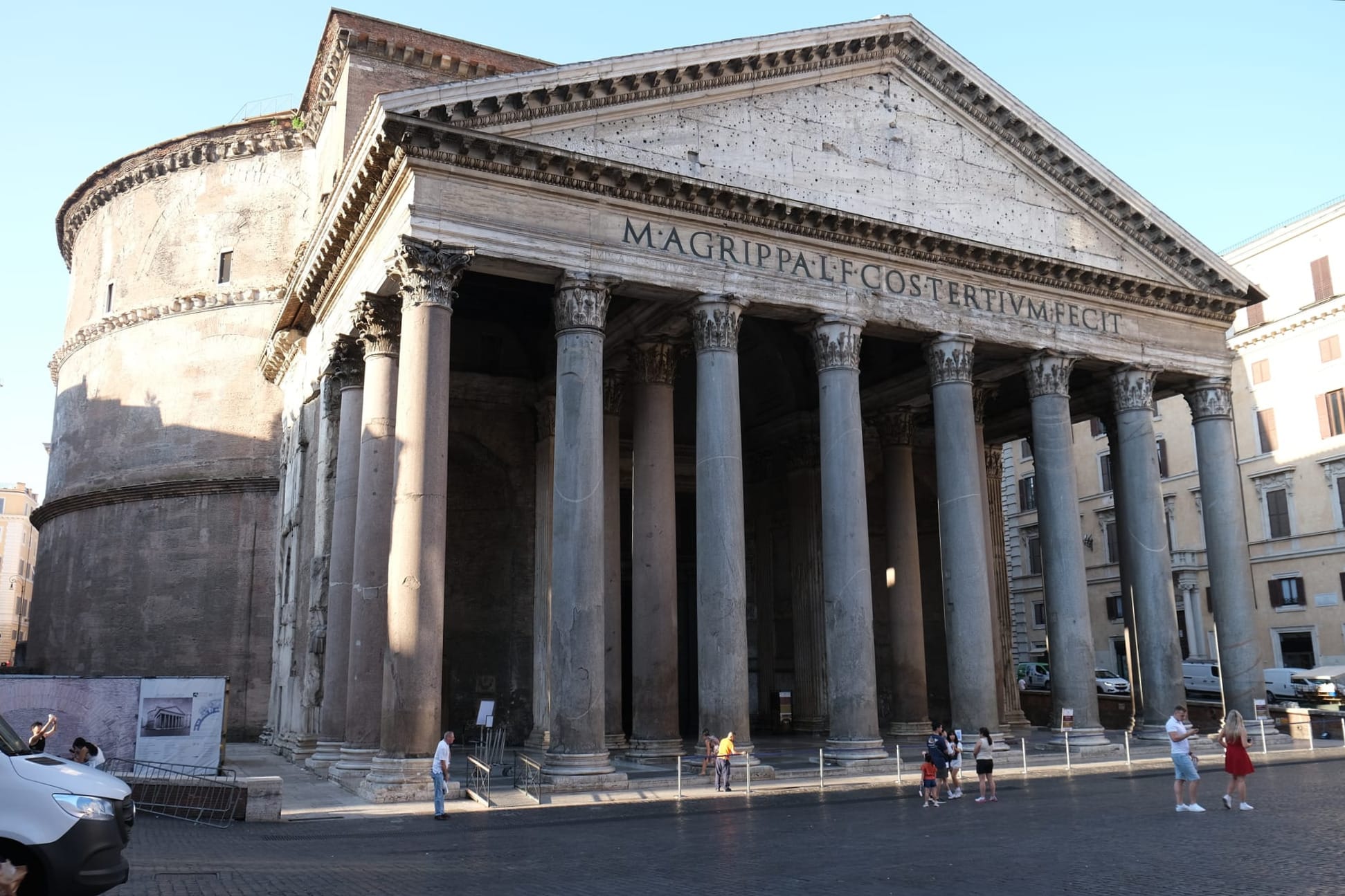
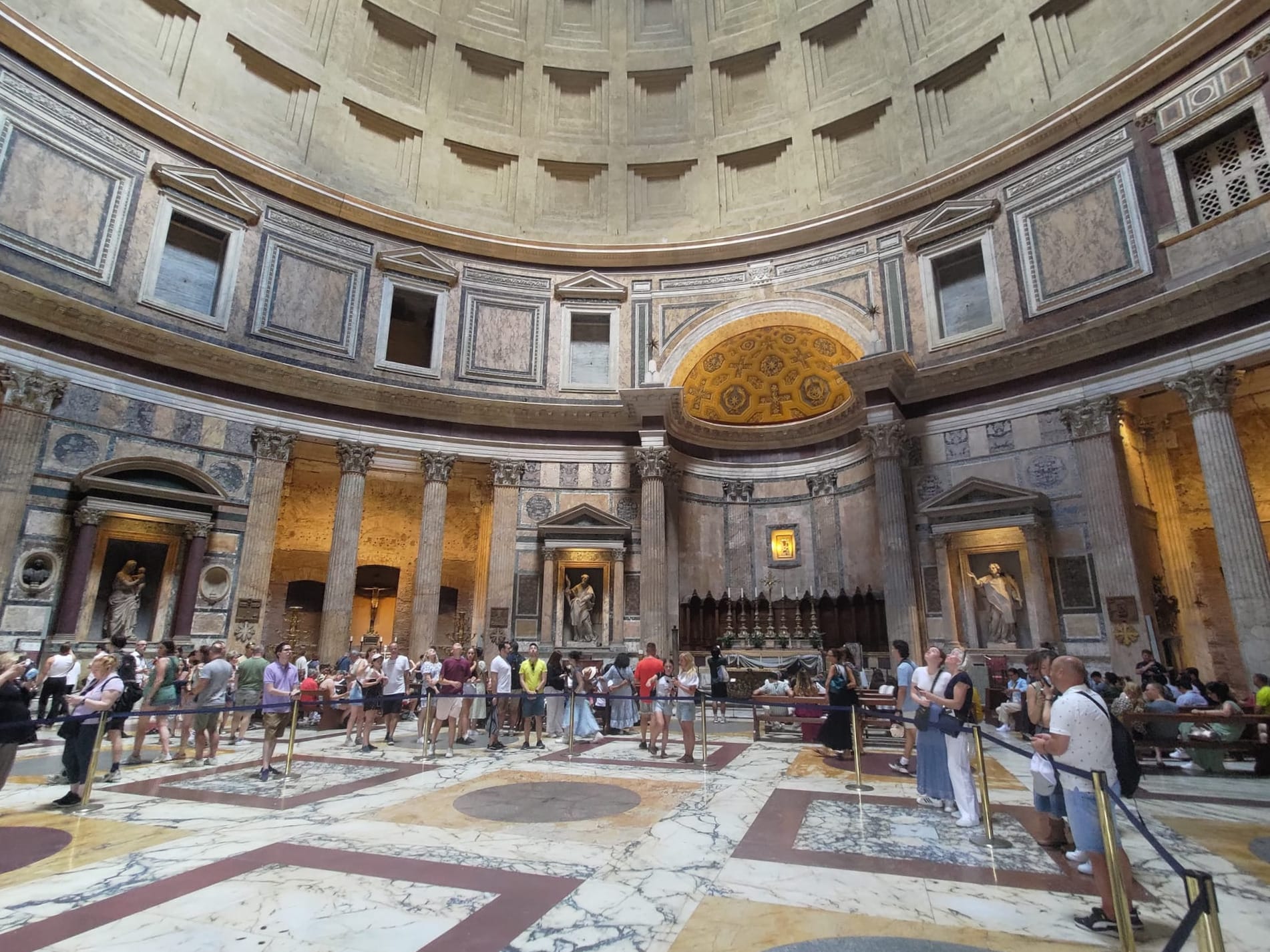
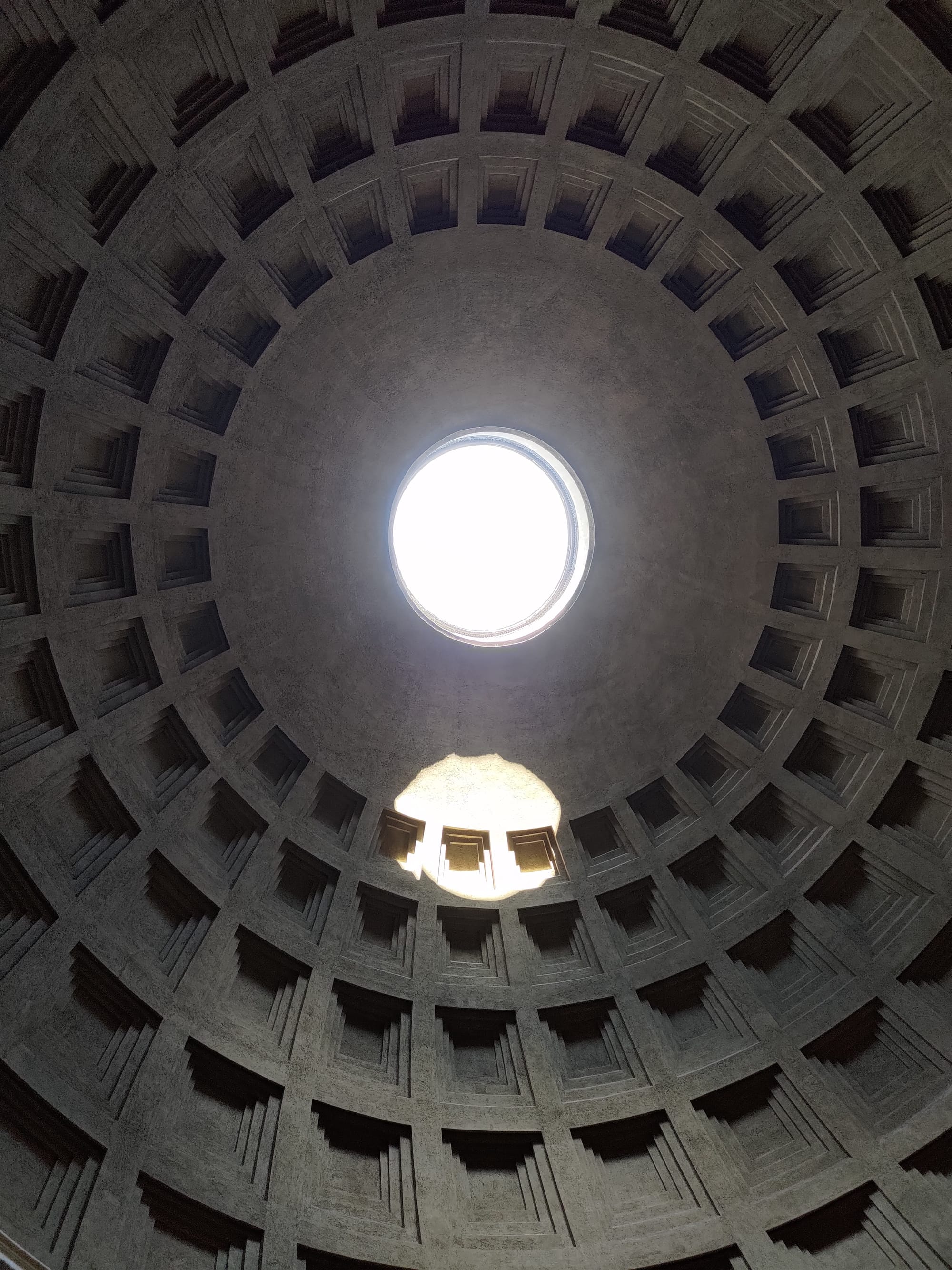
1. Outdoor view taken early in the morning, 2. Internal view taken with a wide angle lens, 3. Photo of the dome interior showing the late afternoon sun shining through the opening.
The Pantheon was once a Roman temple but then converted into a Catholic Church. Because it has been continuously used as a place of worship throughout history, it is now one of the best preserved ancient Roman buildings. The central dome is made of concrete and remains the largest unreinforced concrete dome in the world.
Trevi Fountain

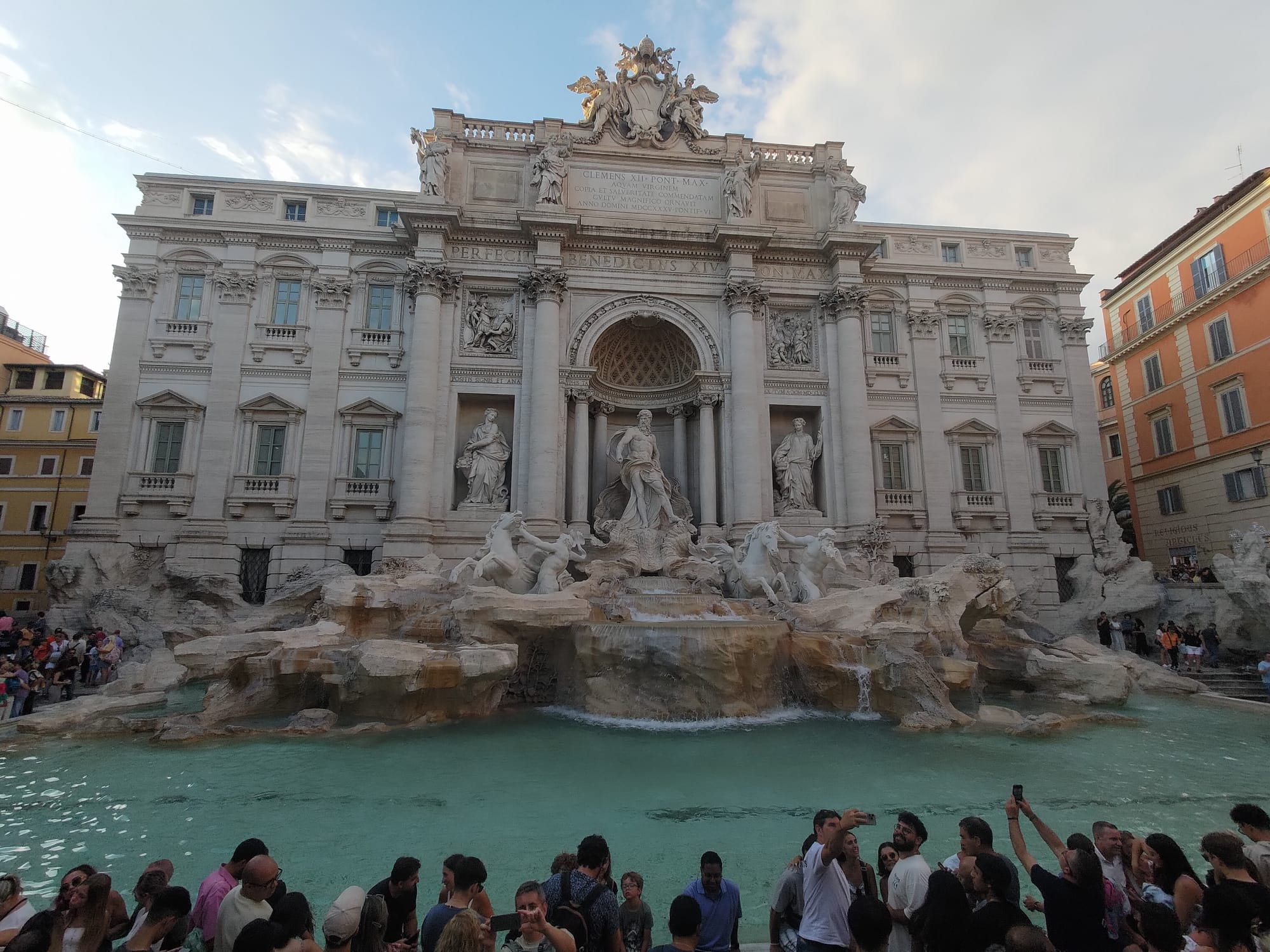
The Trevi fountain was beautiful but perhaps one of the most crowded places in Rome.
Spanish Steps
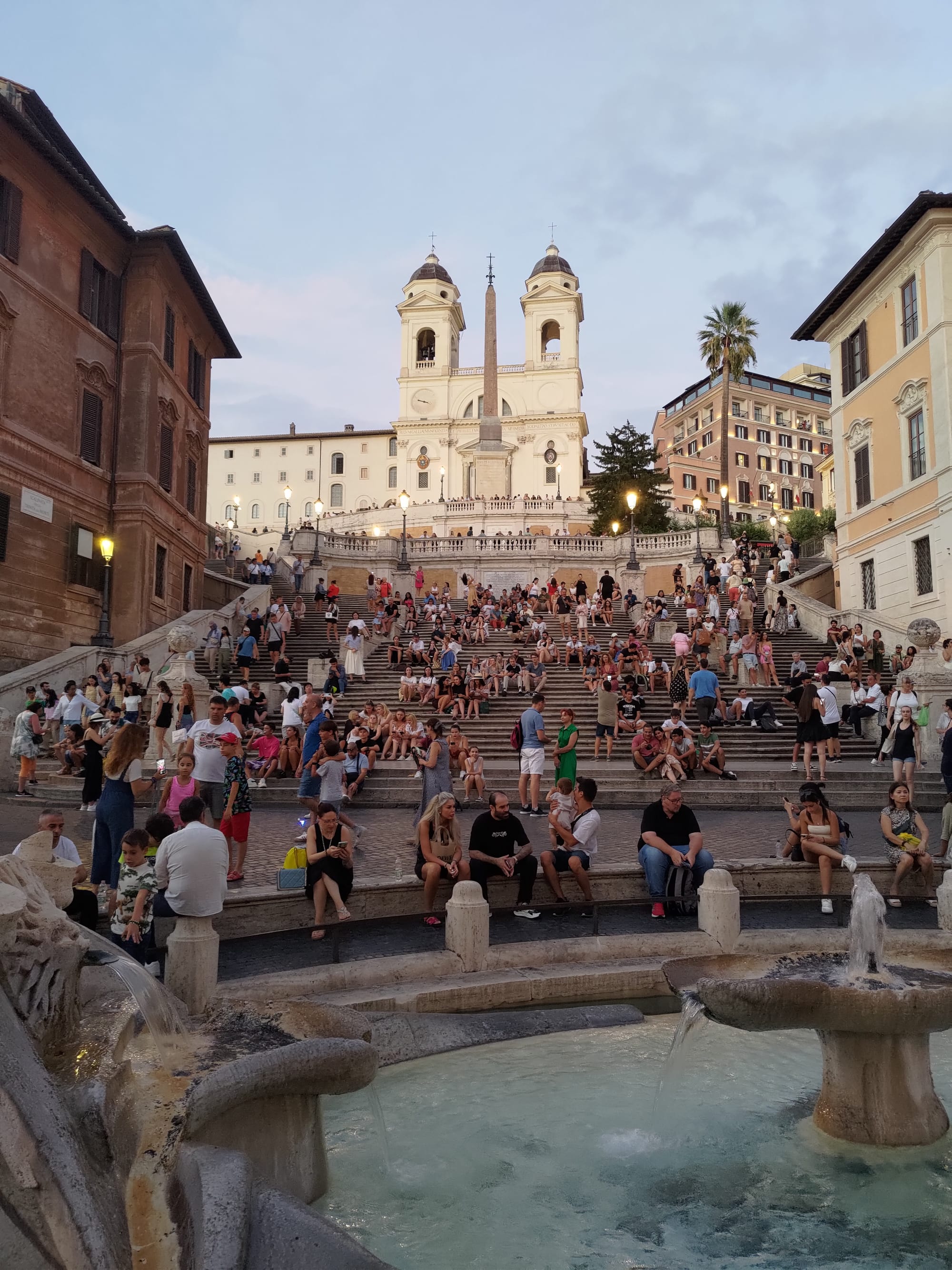
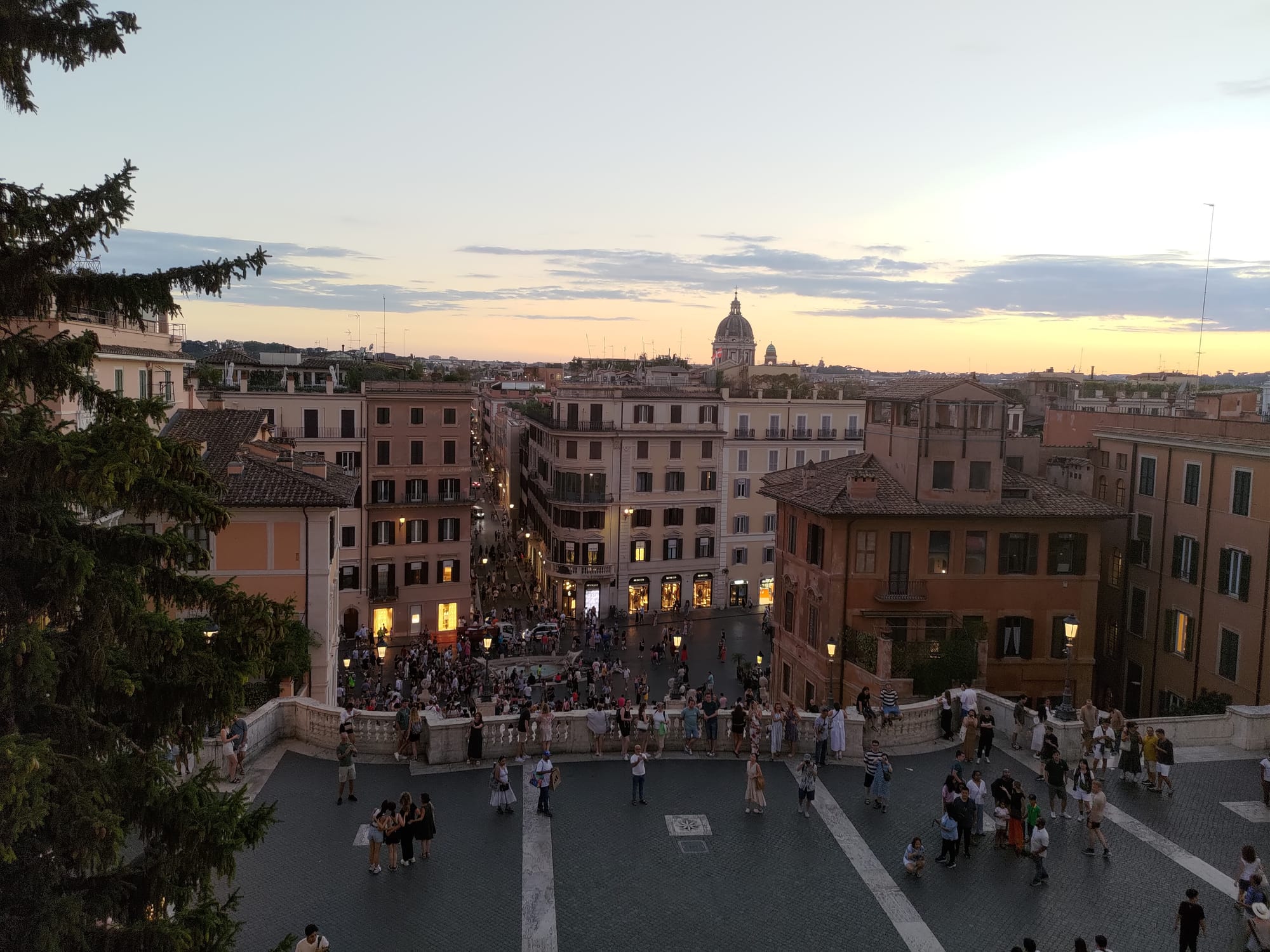
The Spanish Steps. We climbed all the way to the top, which is where I took the second photo from. This was our last destination for the day and these photos were taken at sunset.
Colosseum
We visited the Colosseum twice, first with a tour that included a visited the Roman Forum, and the second time on a tour dedicated only to the Colosseum underground. I particularly liked our guide for the first tour; his name was Eddy, he was very informative and entertaining with a great personality. I didn't take many pictures while on the tour, but did so later when we re-visited the same places we saw previously during the tour, now going at our own pace to properly take in the sights.
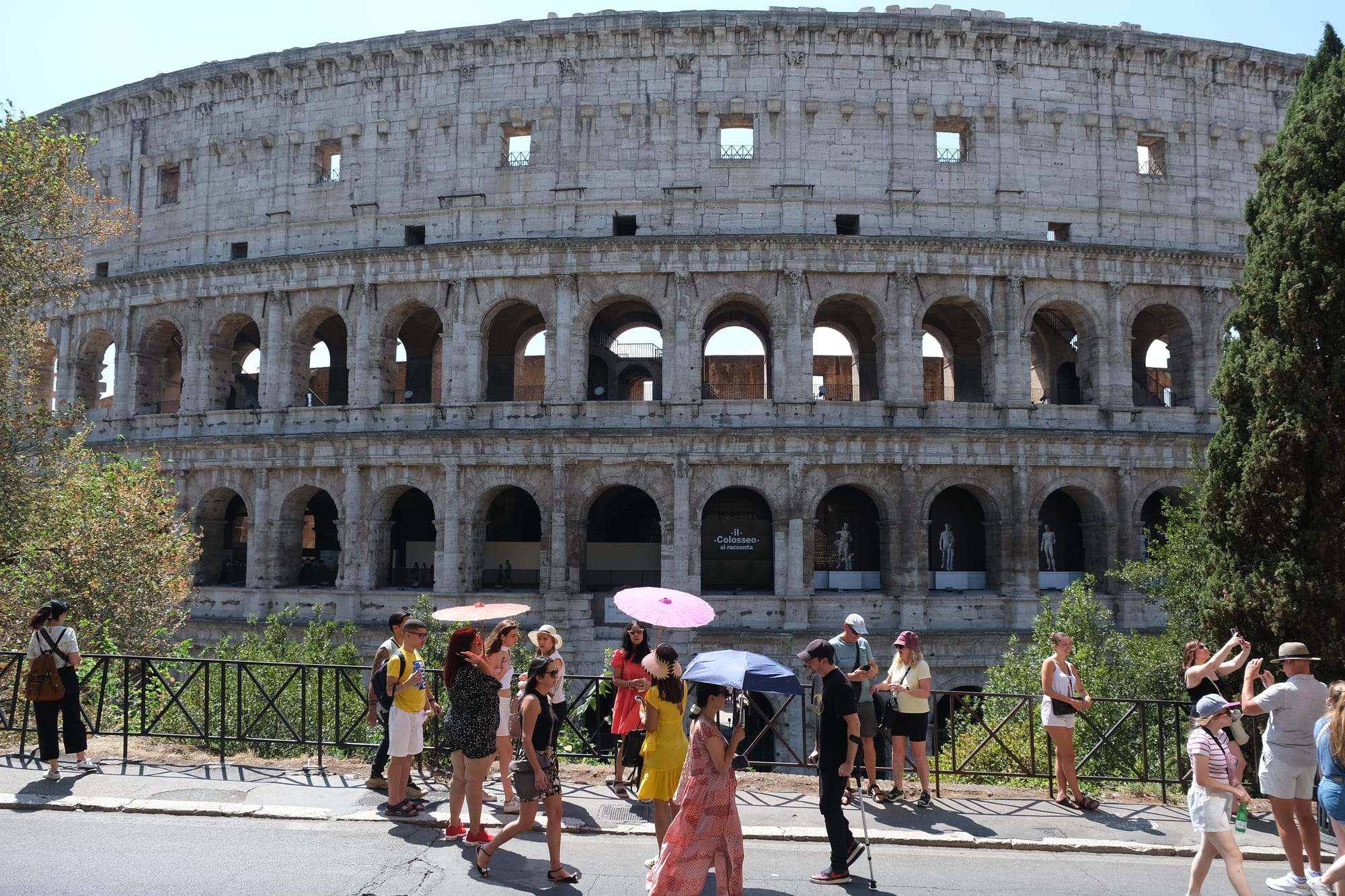
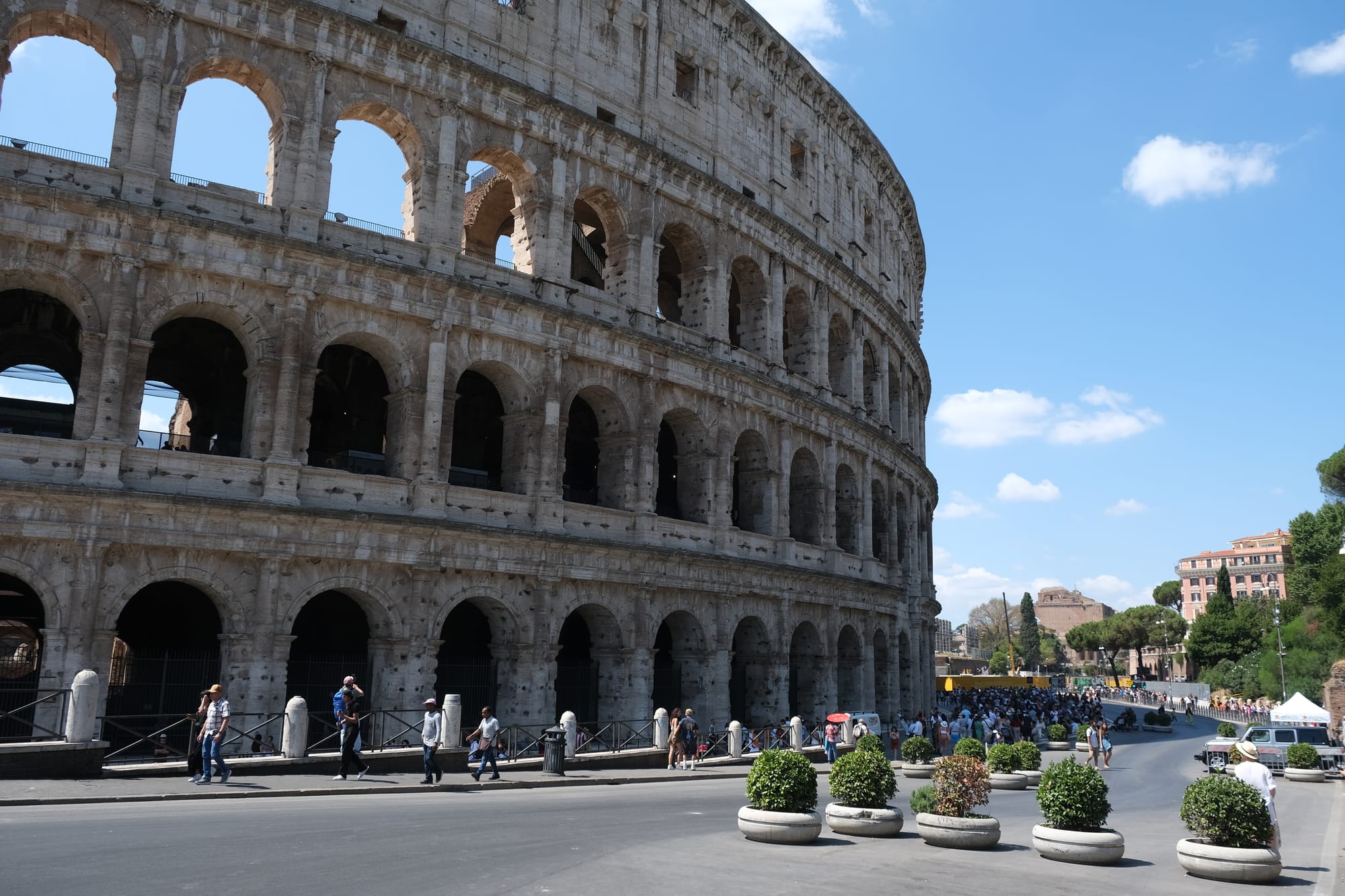
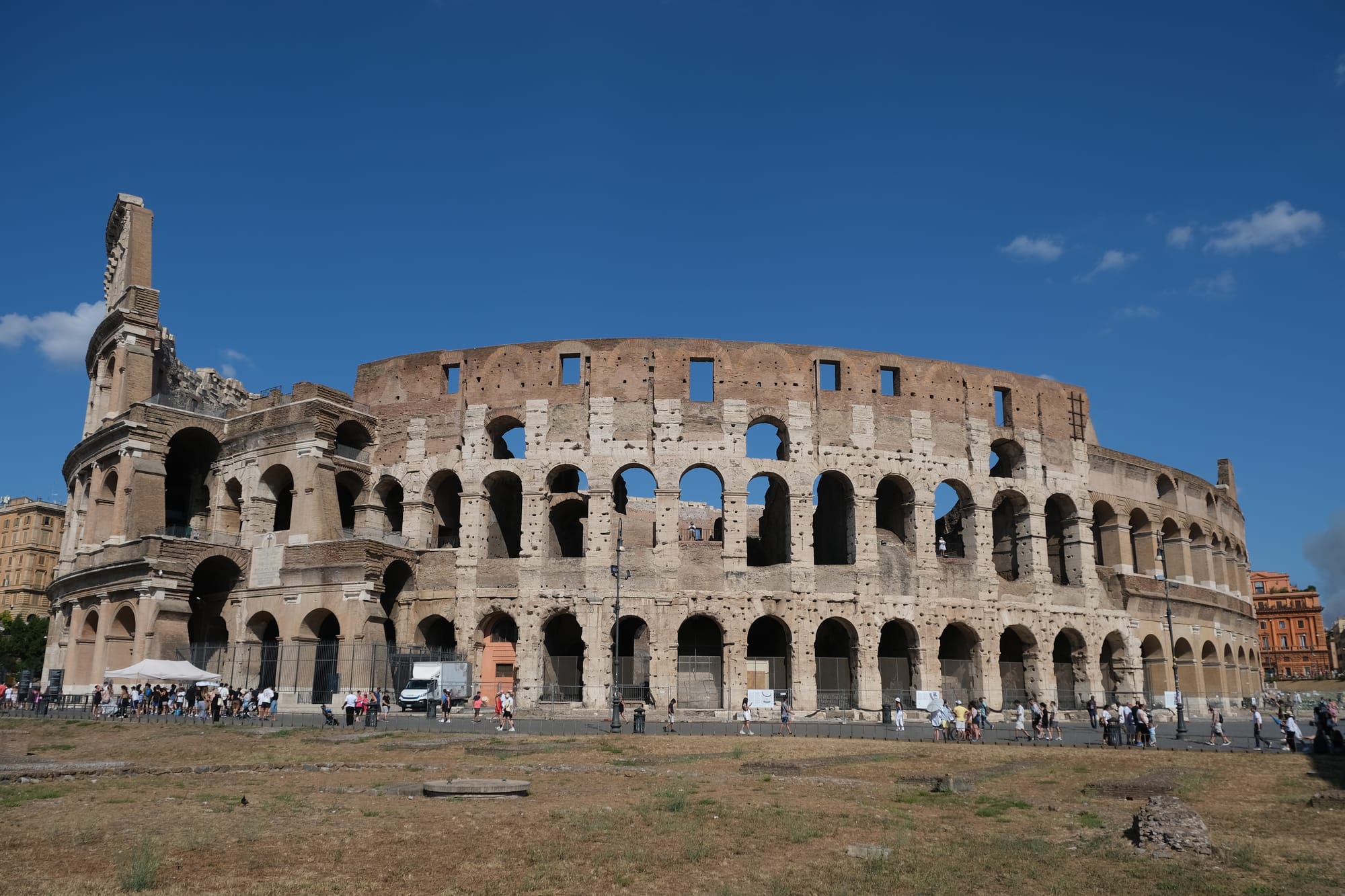
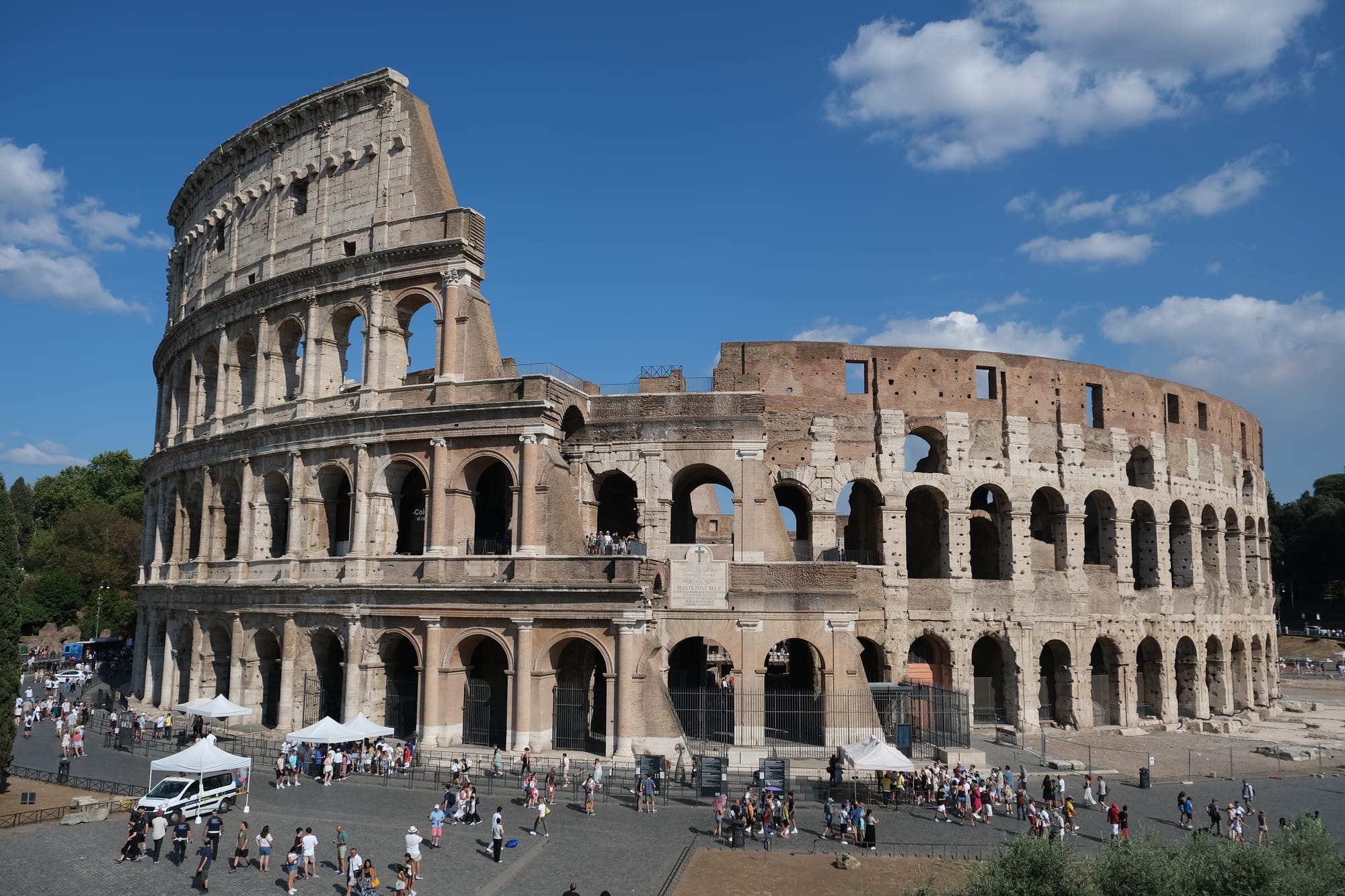
The Roman Colosseum as seen from the outside from multiple different angles.
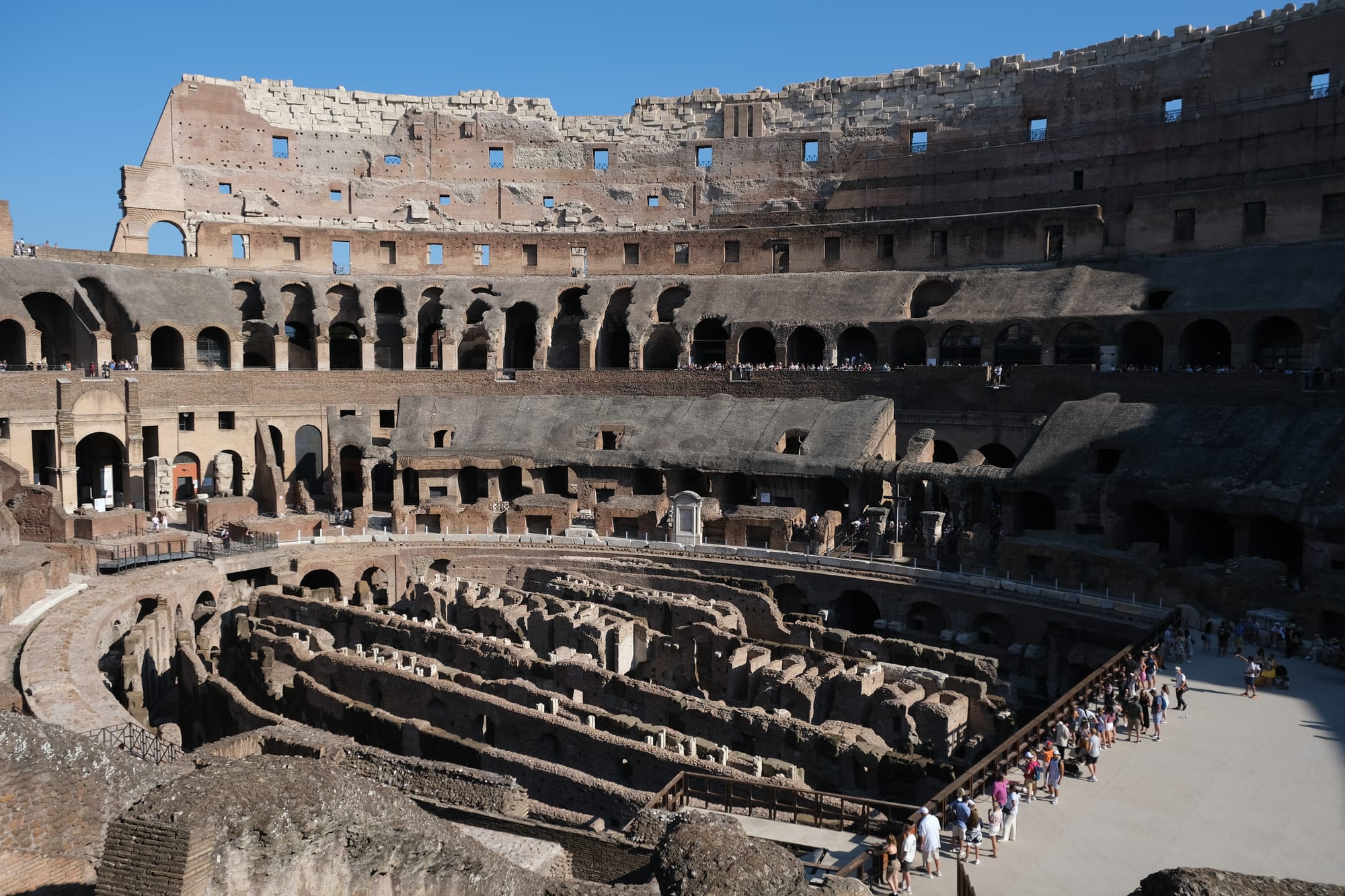

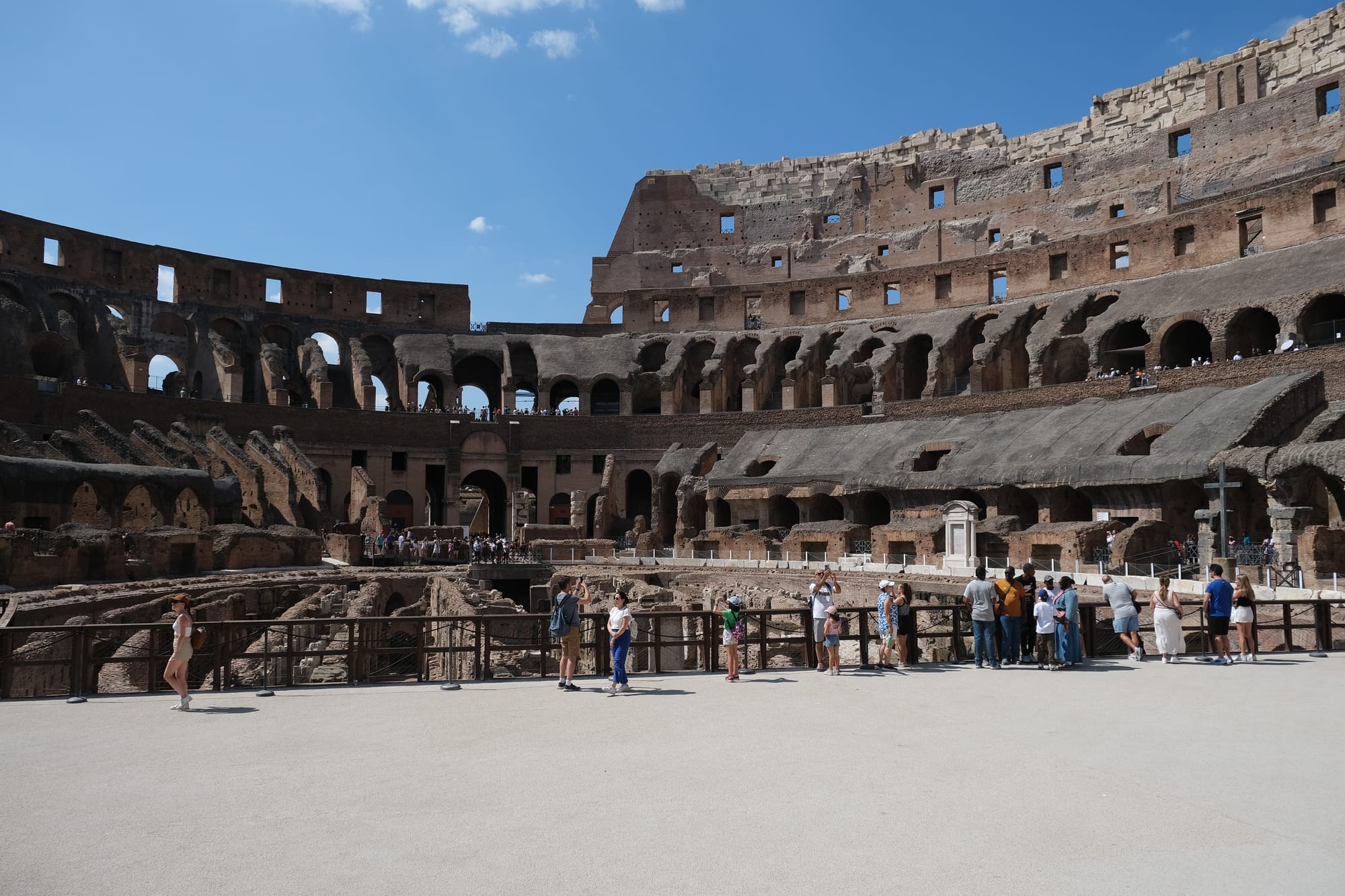
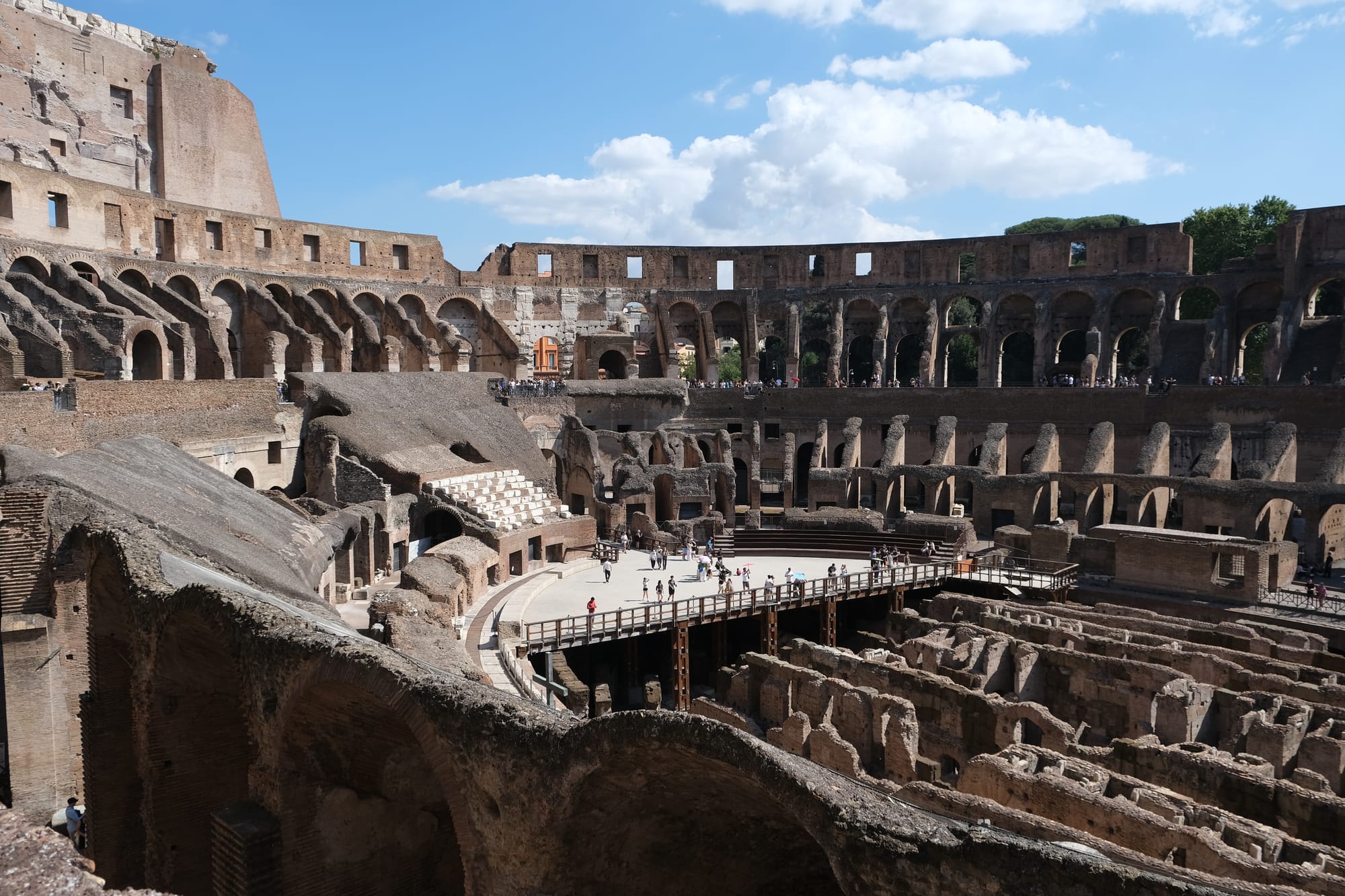
The interior of the Colosseum as seen from different angles.
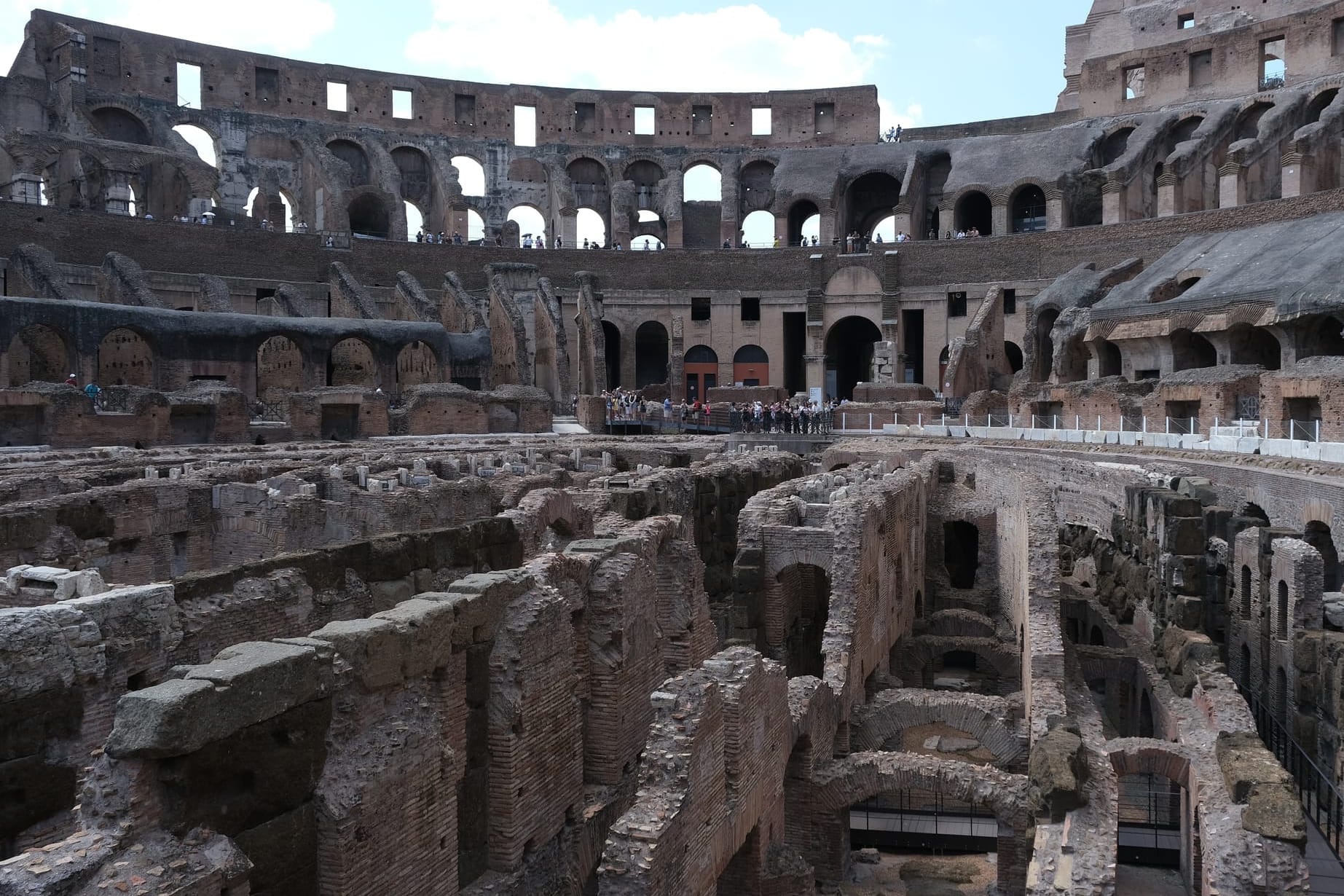
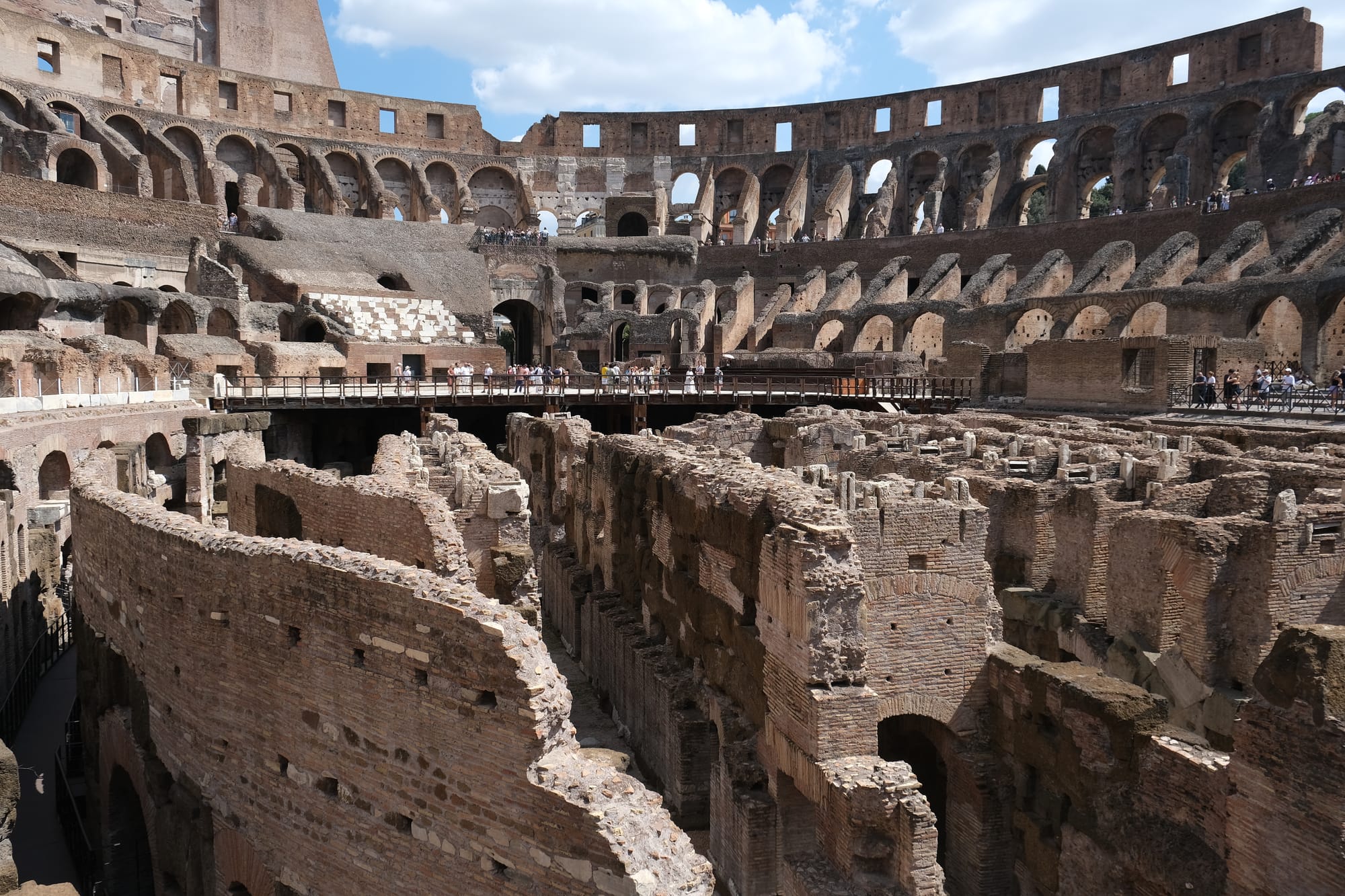
Beneath the floor (or at least where it used to be) is a series of tunnels and corridors that were used to facilitate the ancient Roman games.
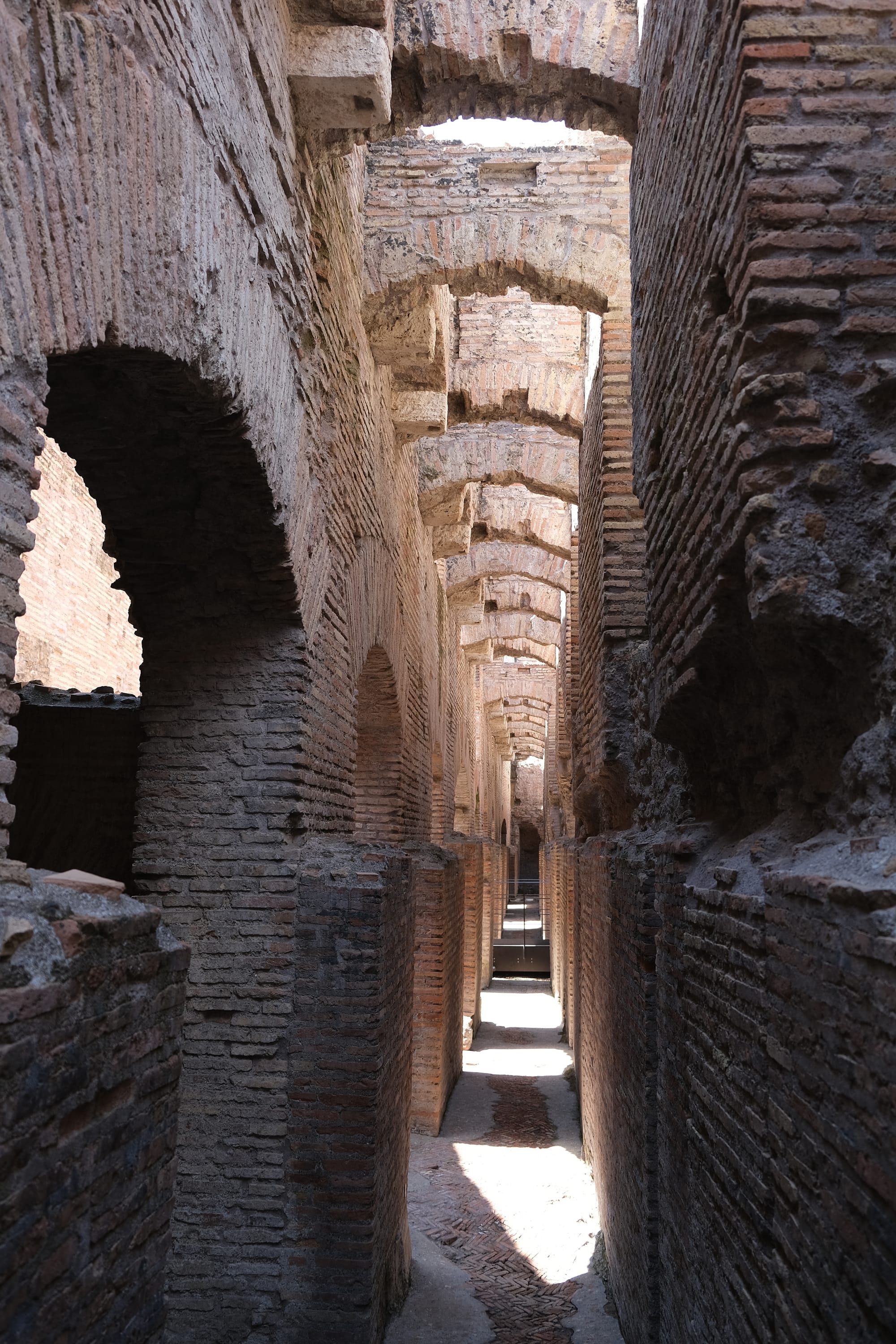
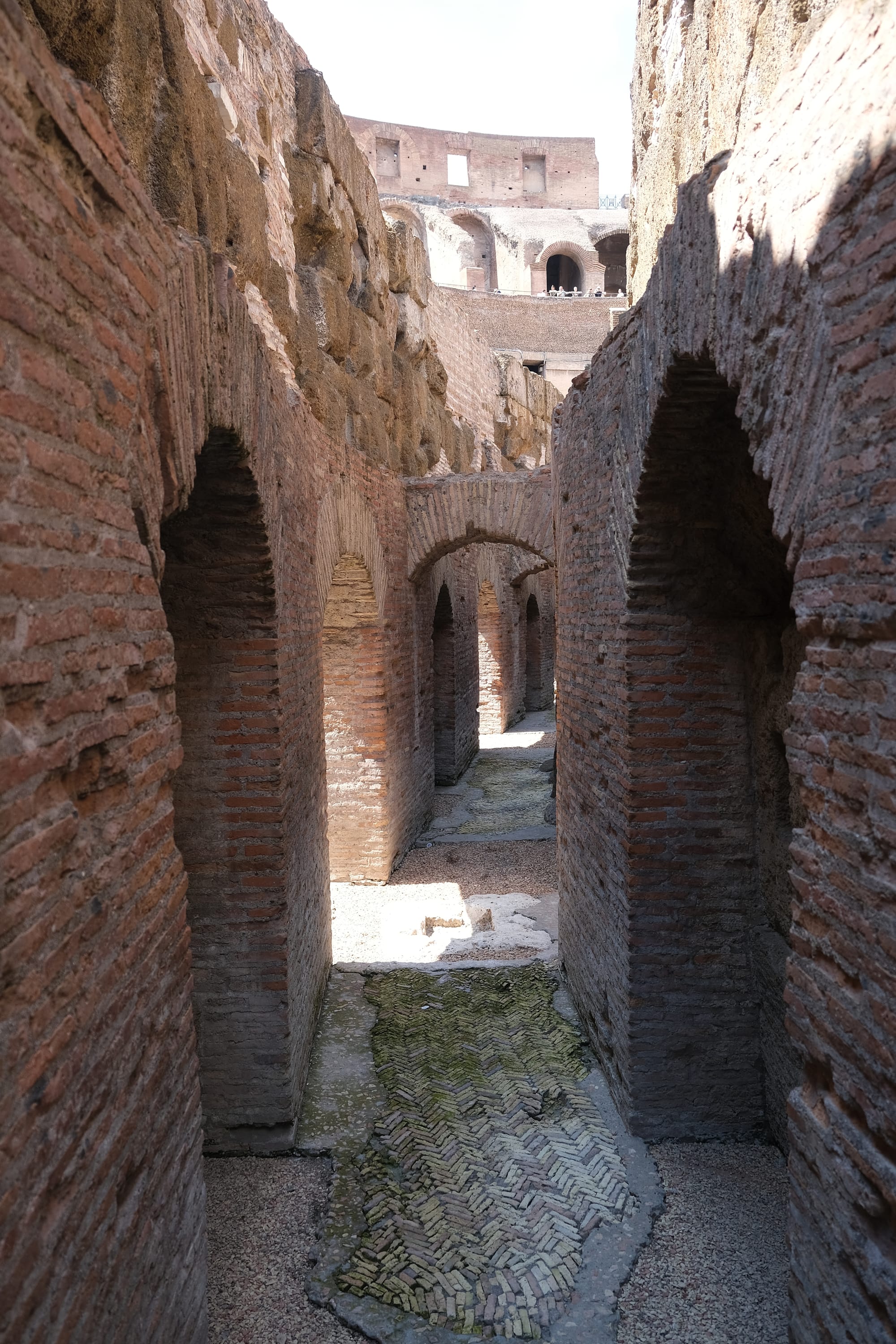
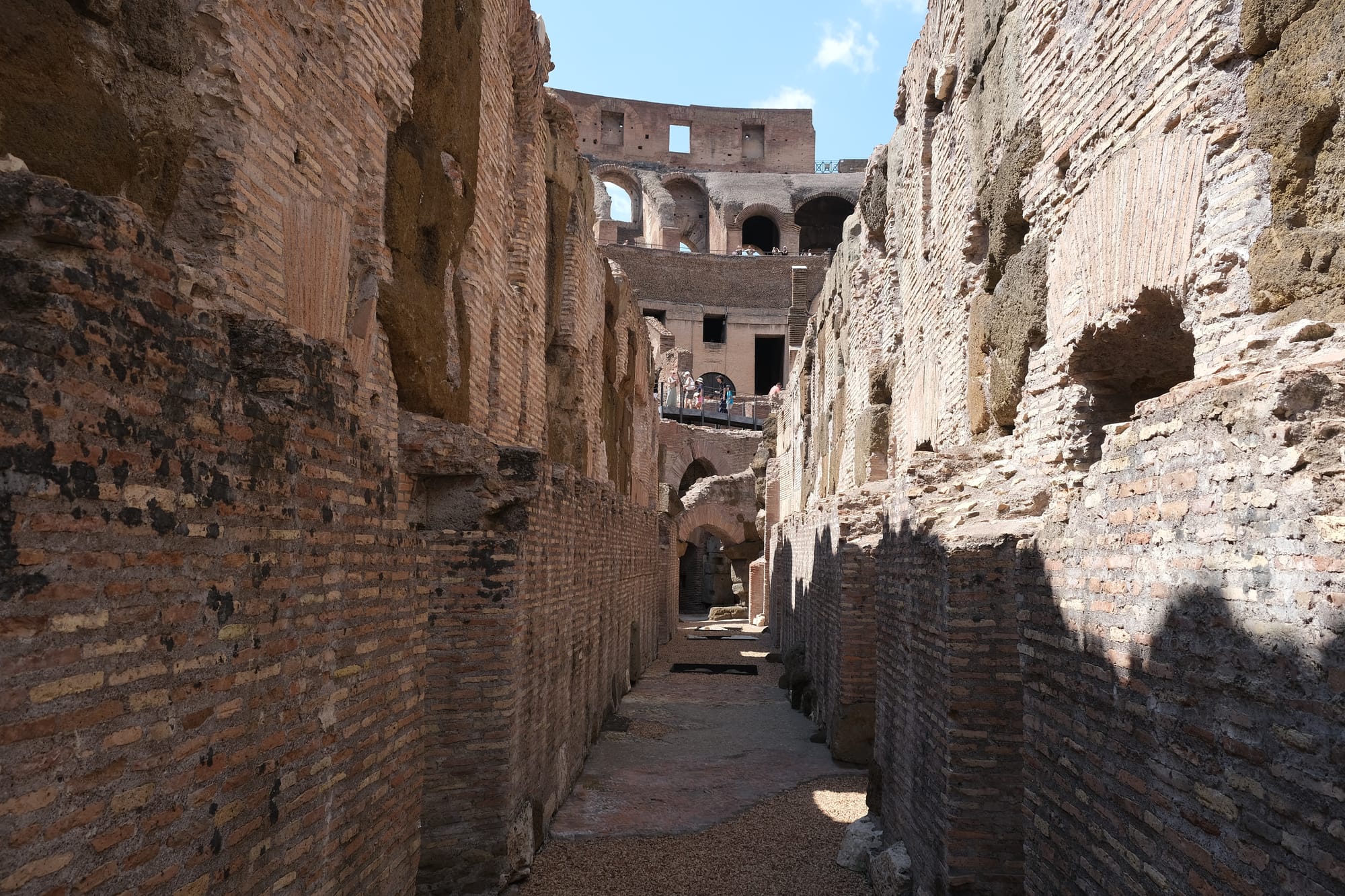
These corridors would contains lifts that connected to trap doors in the arena floor above, that were used to release gladiators or beasts.
The Roman Forum and Palatine Hill
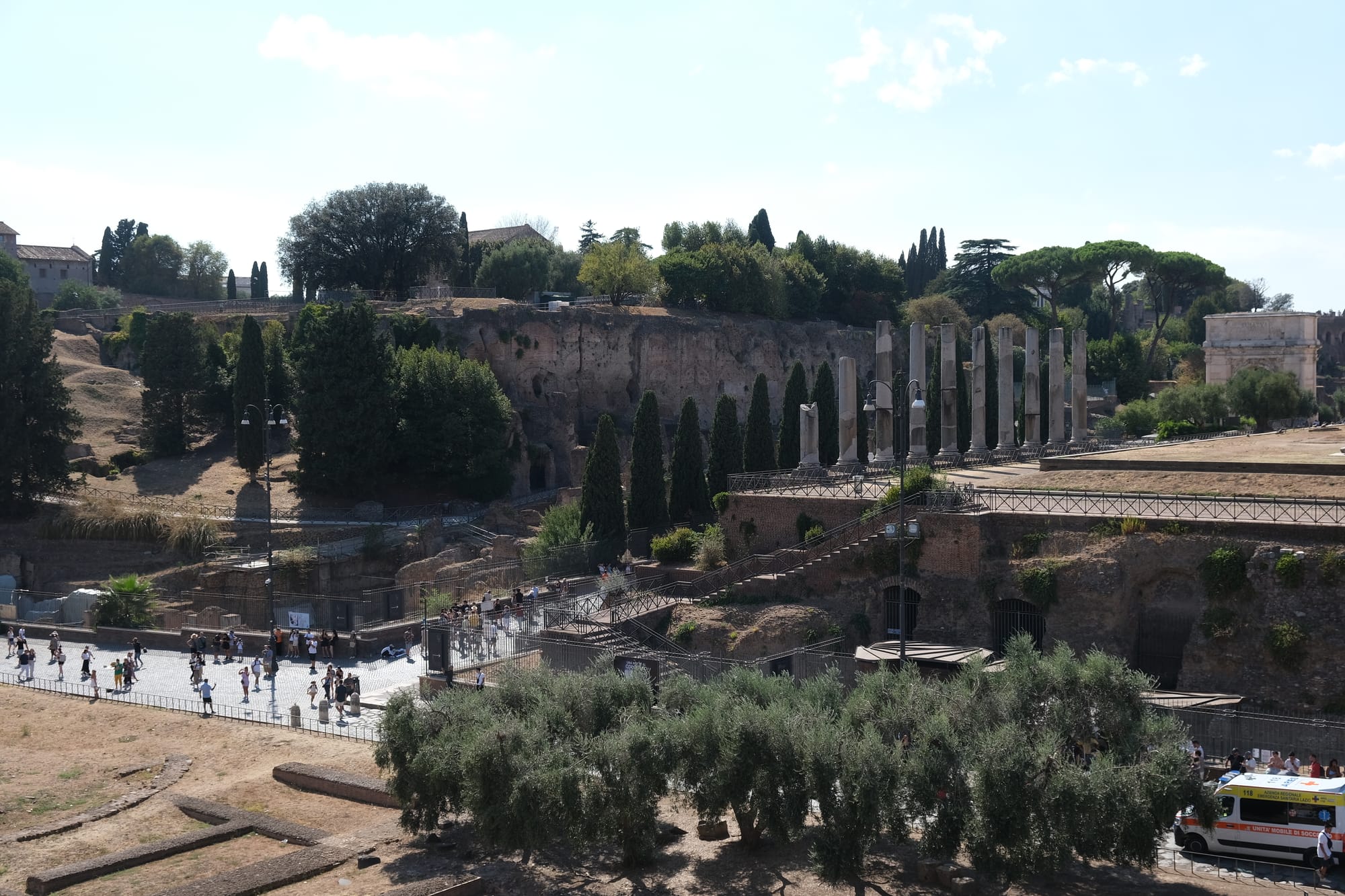
Next to the Colosseum is a vast archaeological park that used to be the centre of the ancient Roman capital. It includes the Forum, a large square that would have been used for business and trade in the city, along with the Palatine hill, the location of the emperor's palace.
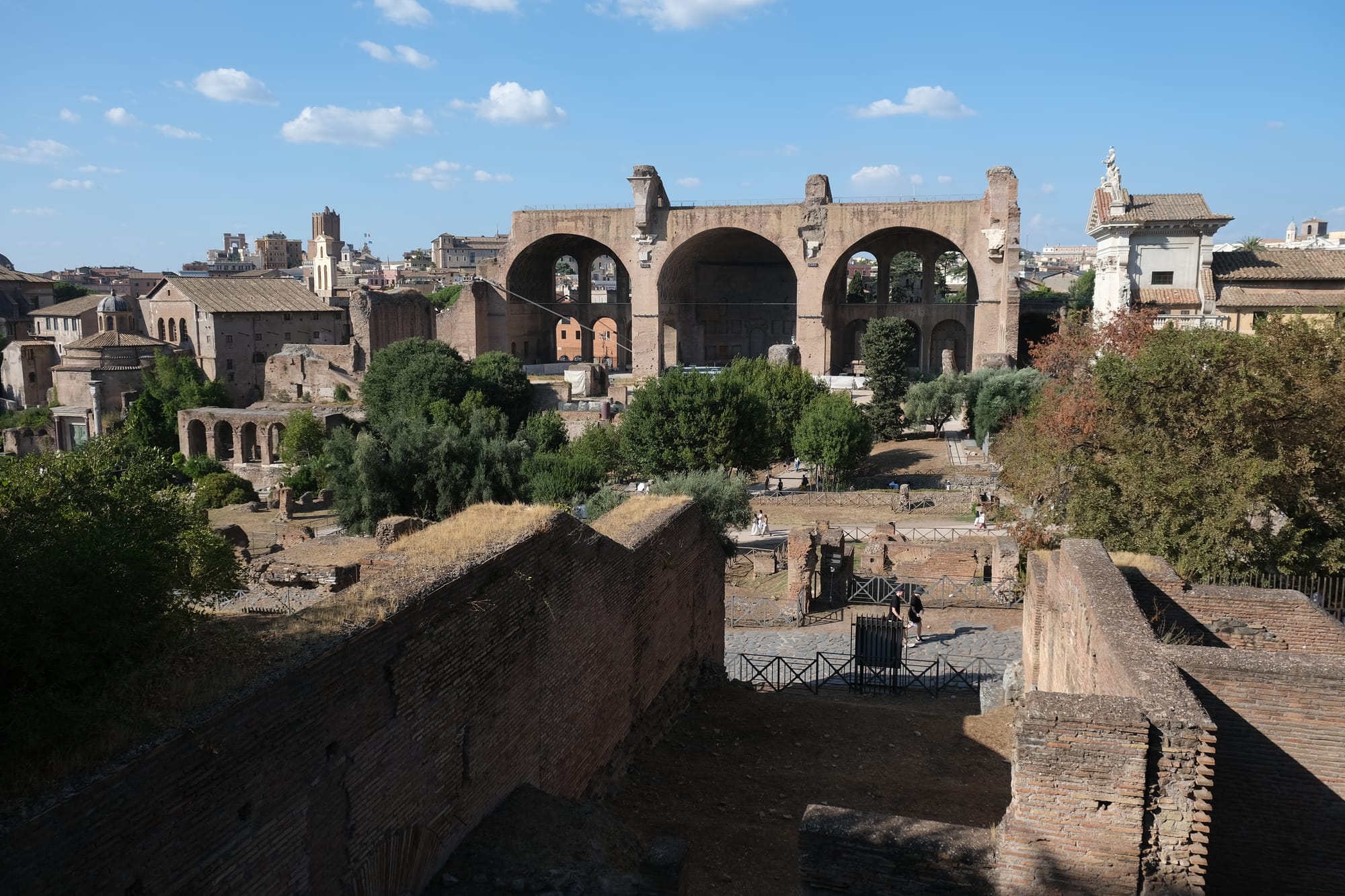
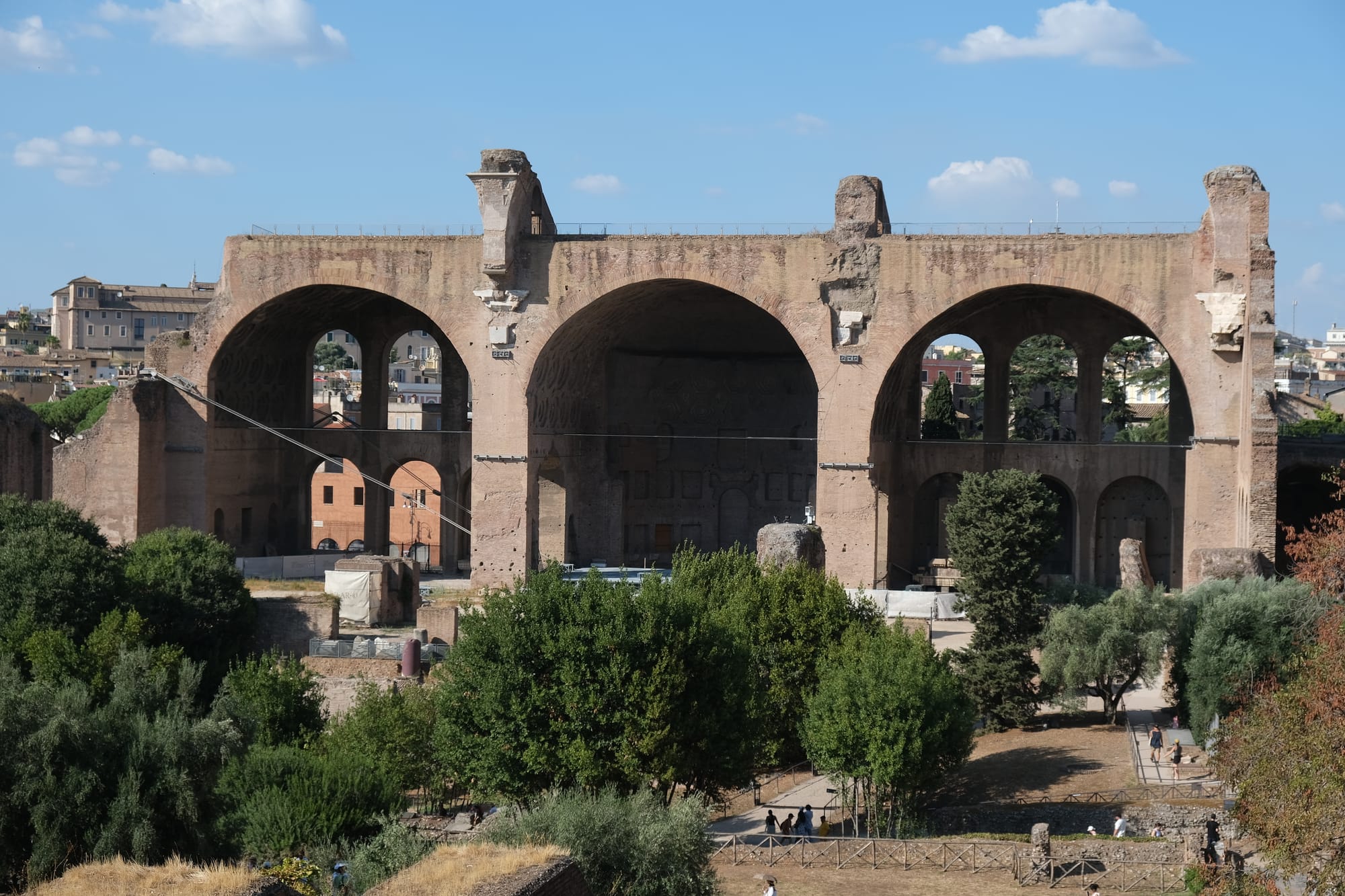
The Basilica of Maxentius. A basilica was a type of roman building used for legal matters with a particular architectural style that was later adopted by many catholic churches.
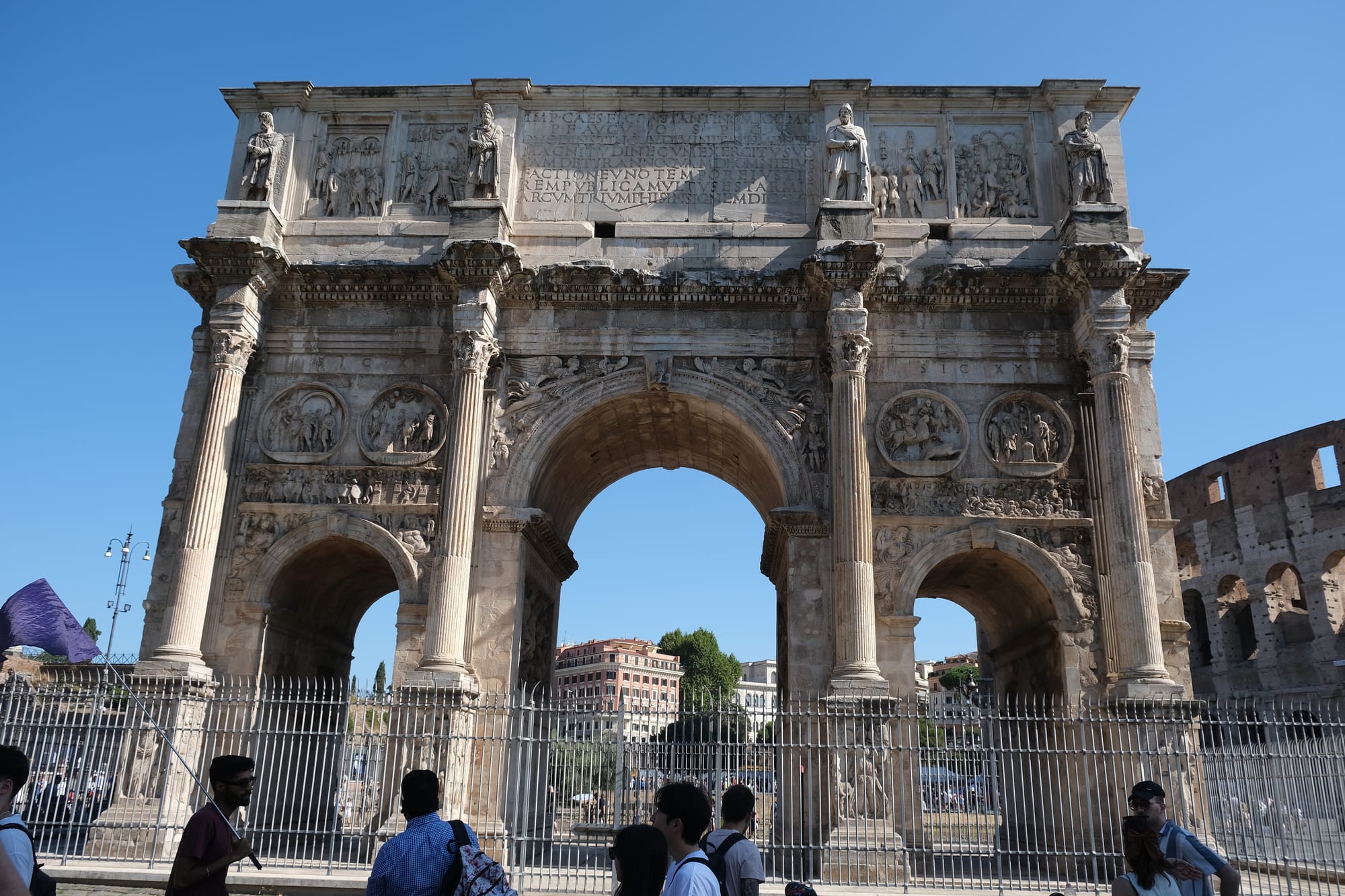
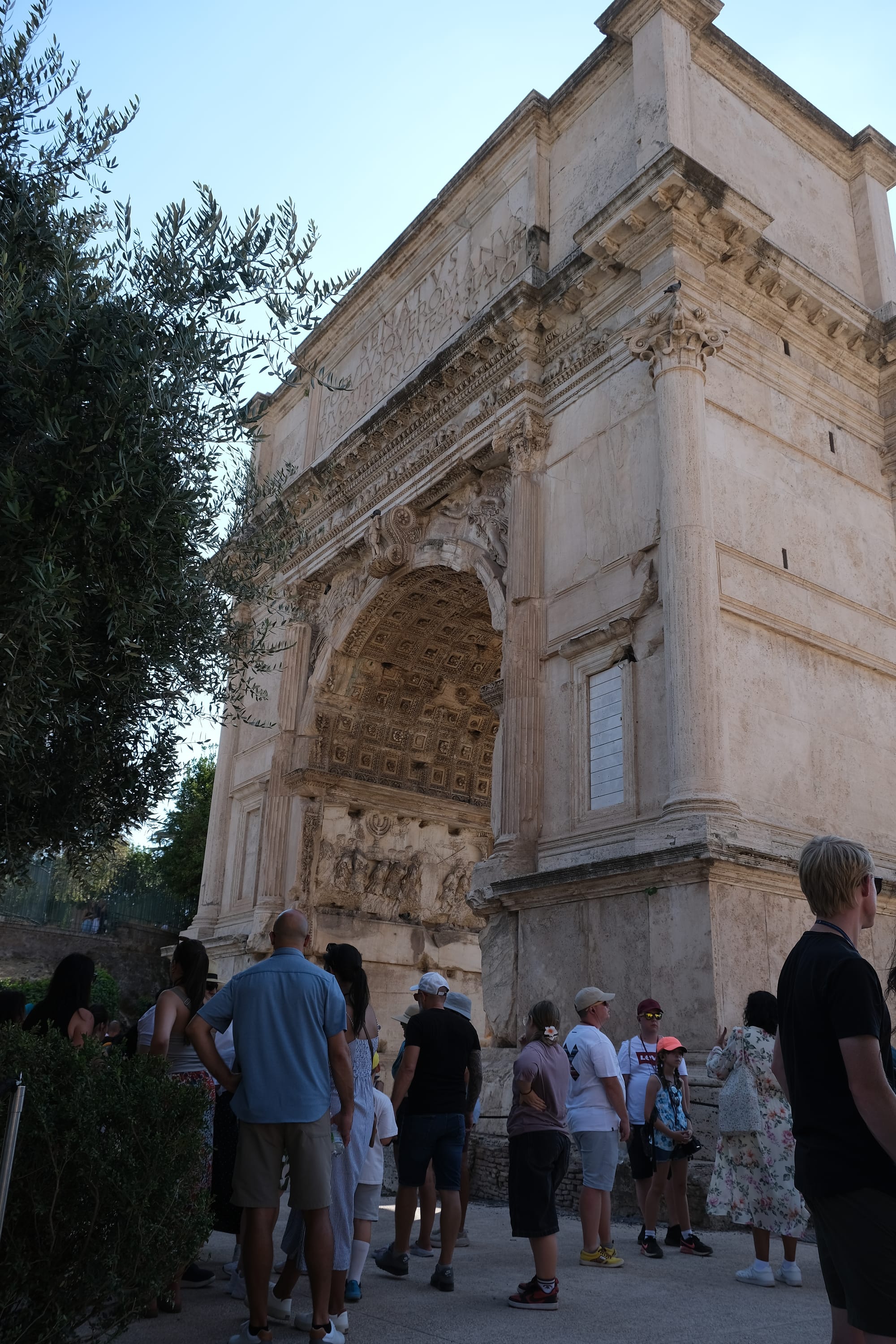
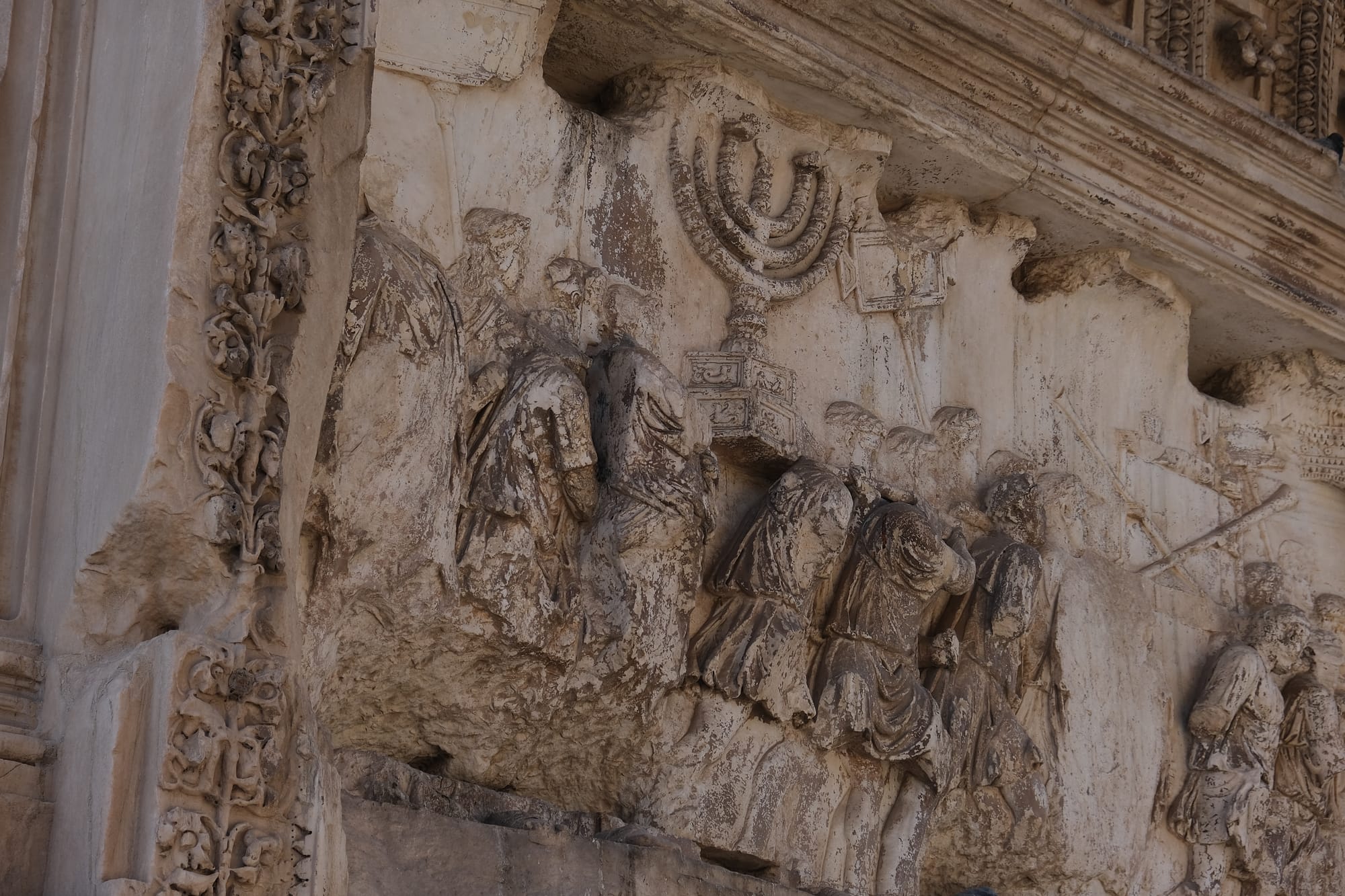
The Arch of Titus. This arch was built to commemorate the victory over the Jewish rebellion and includes a relief showing the triumphal procession carrying the spoils of Jerusalem.
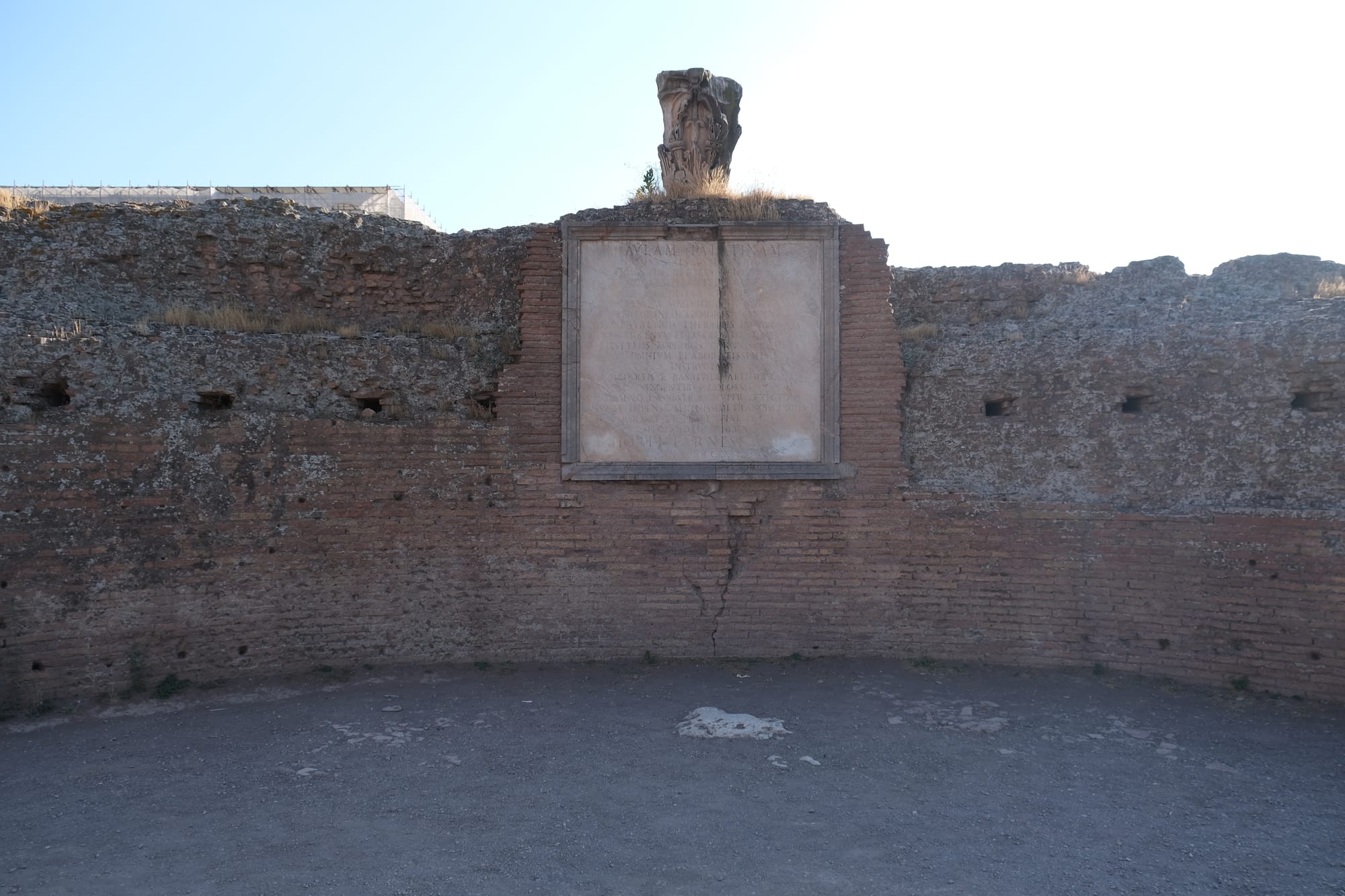
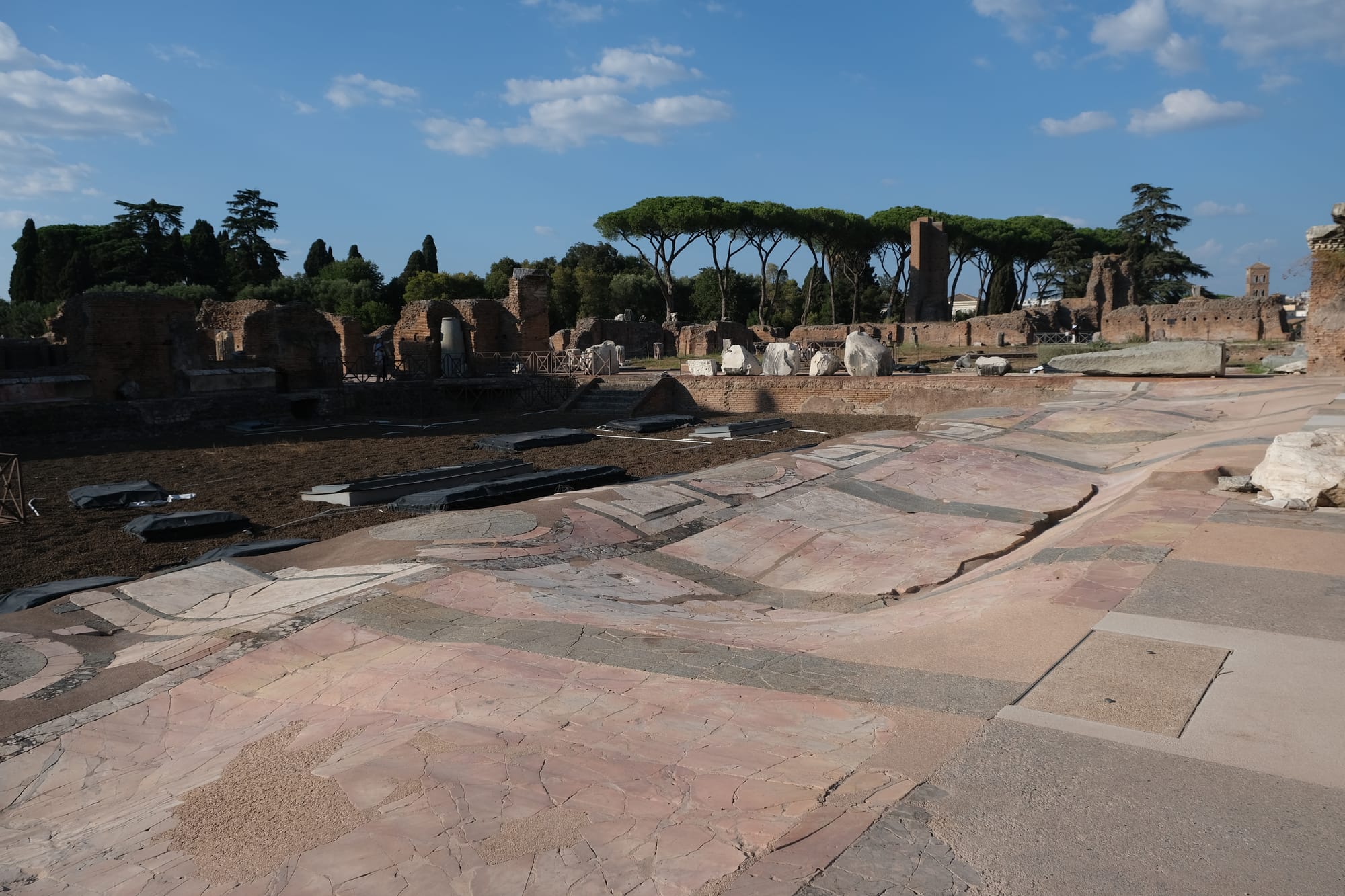

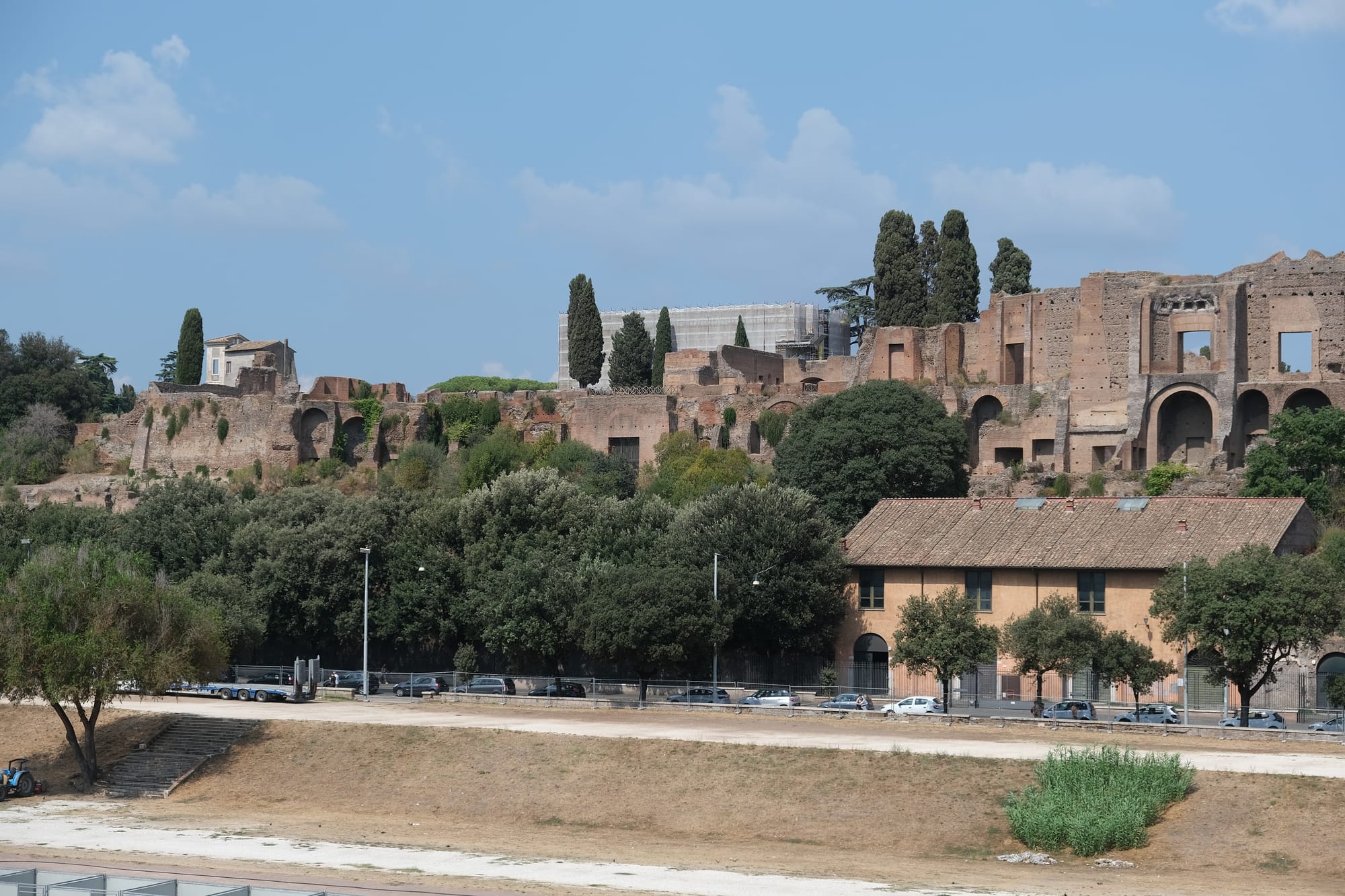
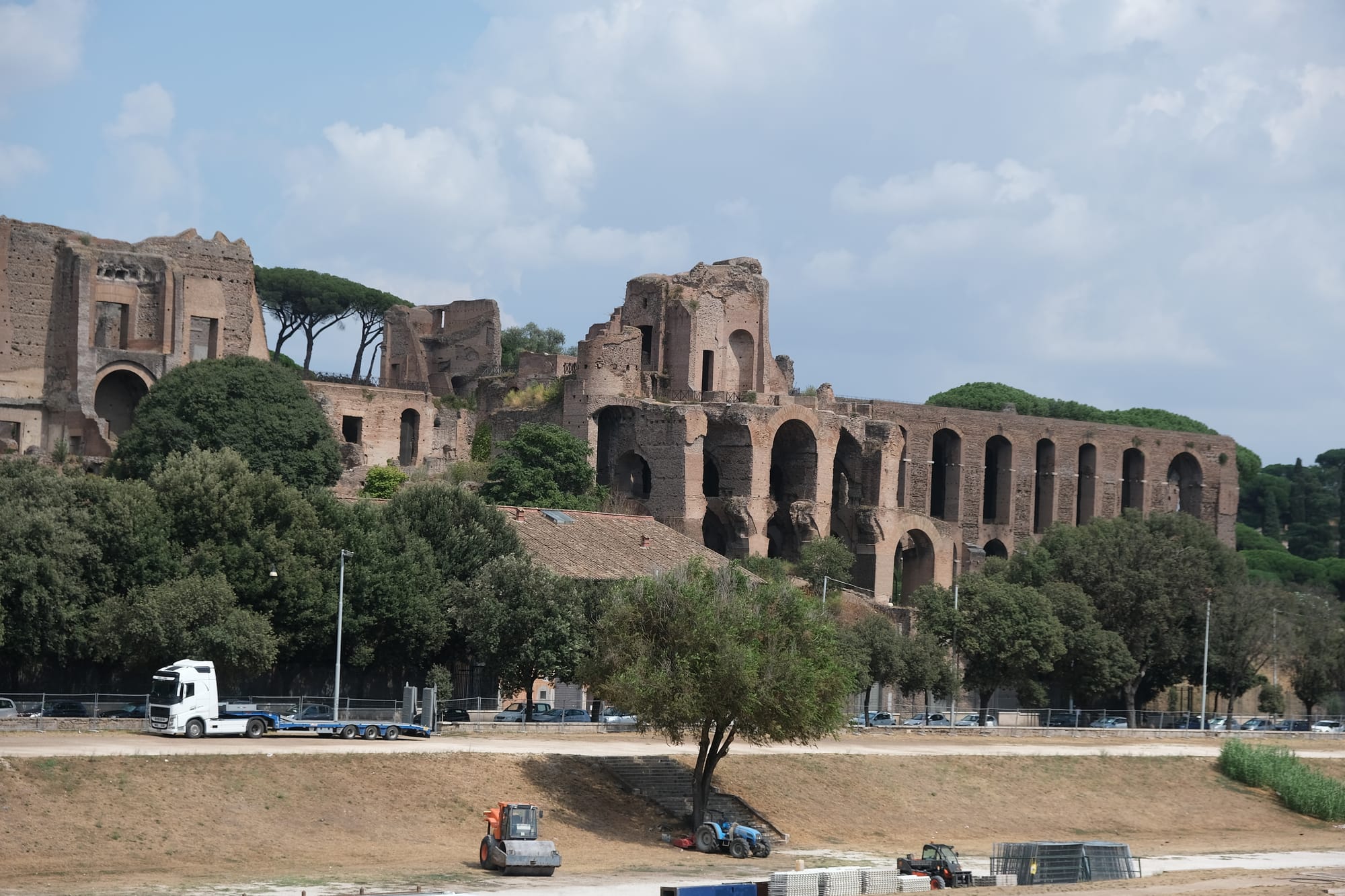
The Palatine Hill as seen from the Circus Maximus.
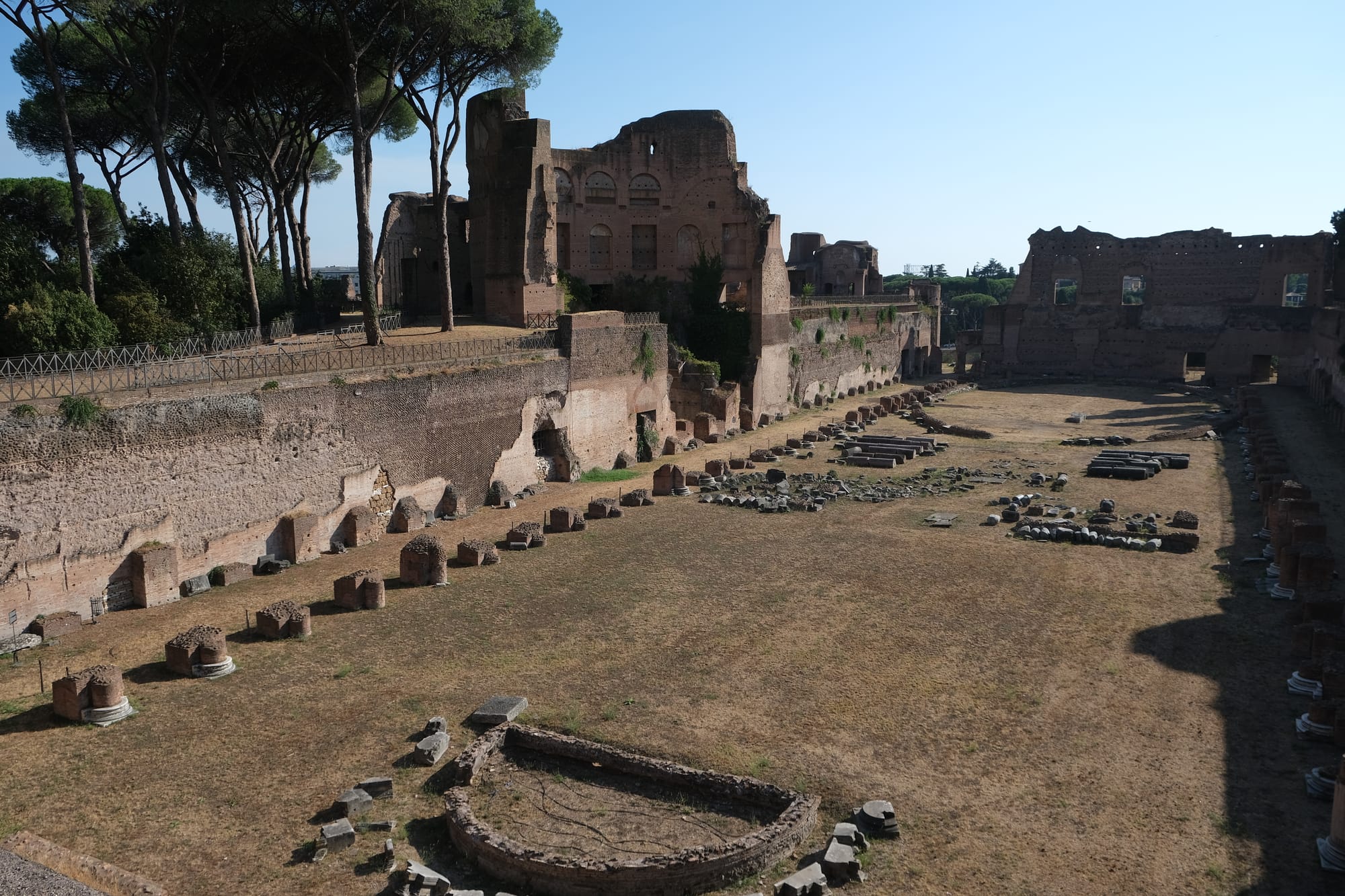
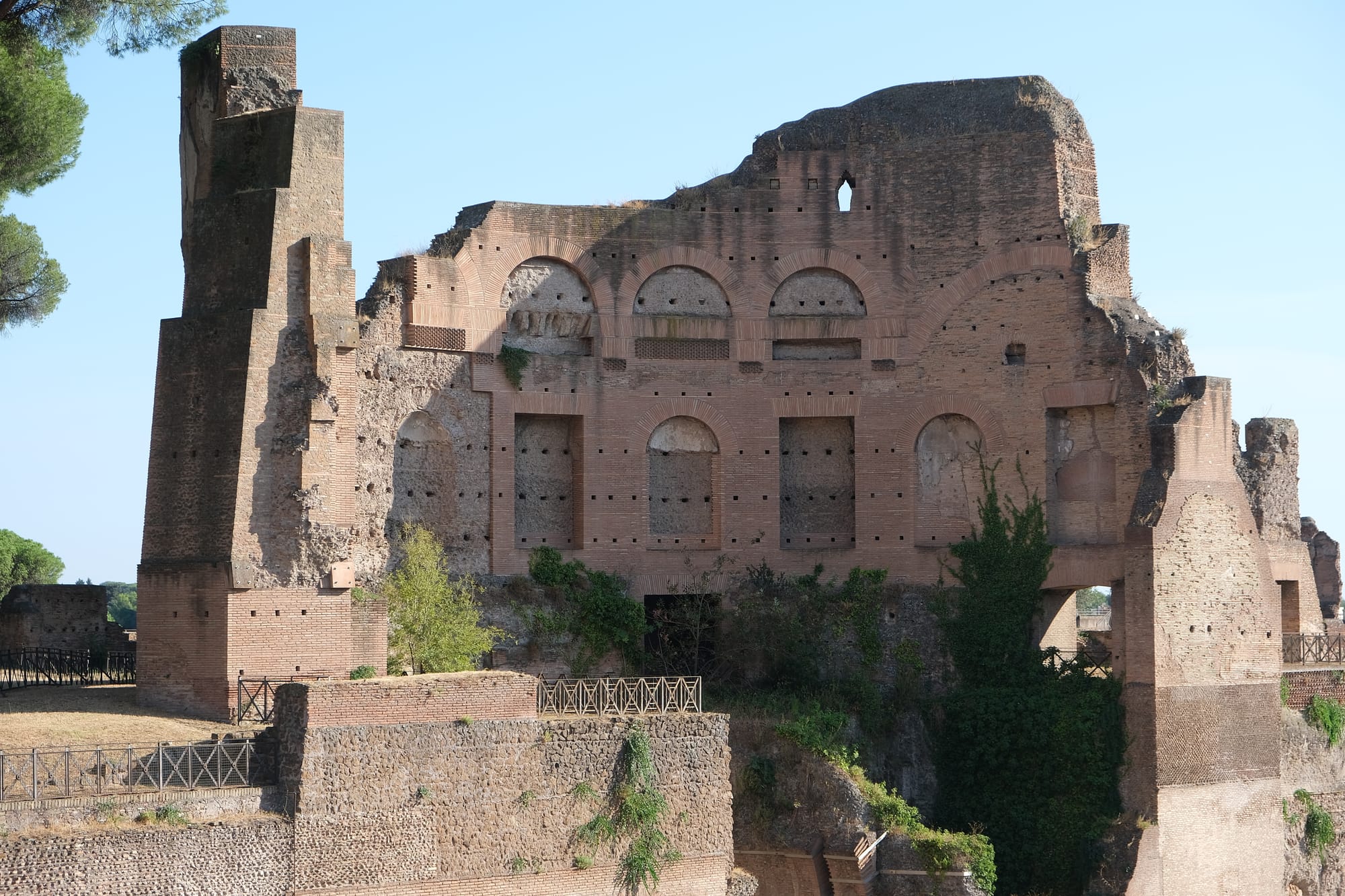
The Palatine stadium, situated next to the imperial palace. These holes, visible on many Roman ruins but especially on the building pictured in the second image, were once used to mount a marble facade, hiding the underlying brick building. All the marble from the various buildings were stolen during the long history of these ruins.
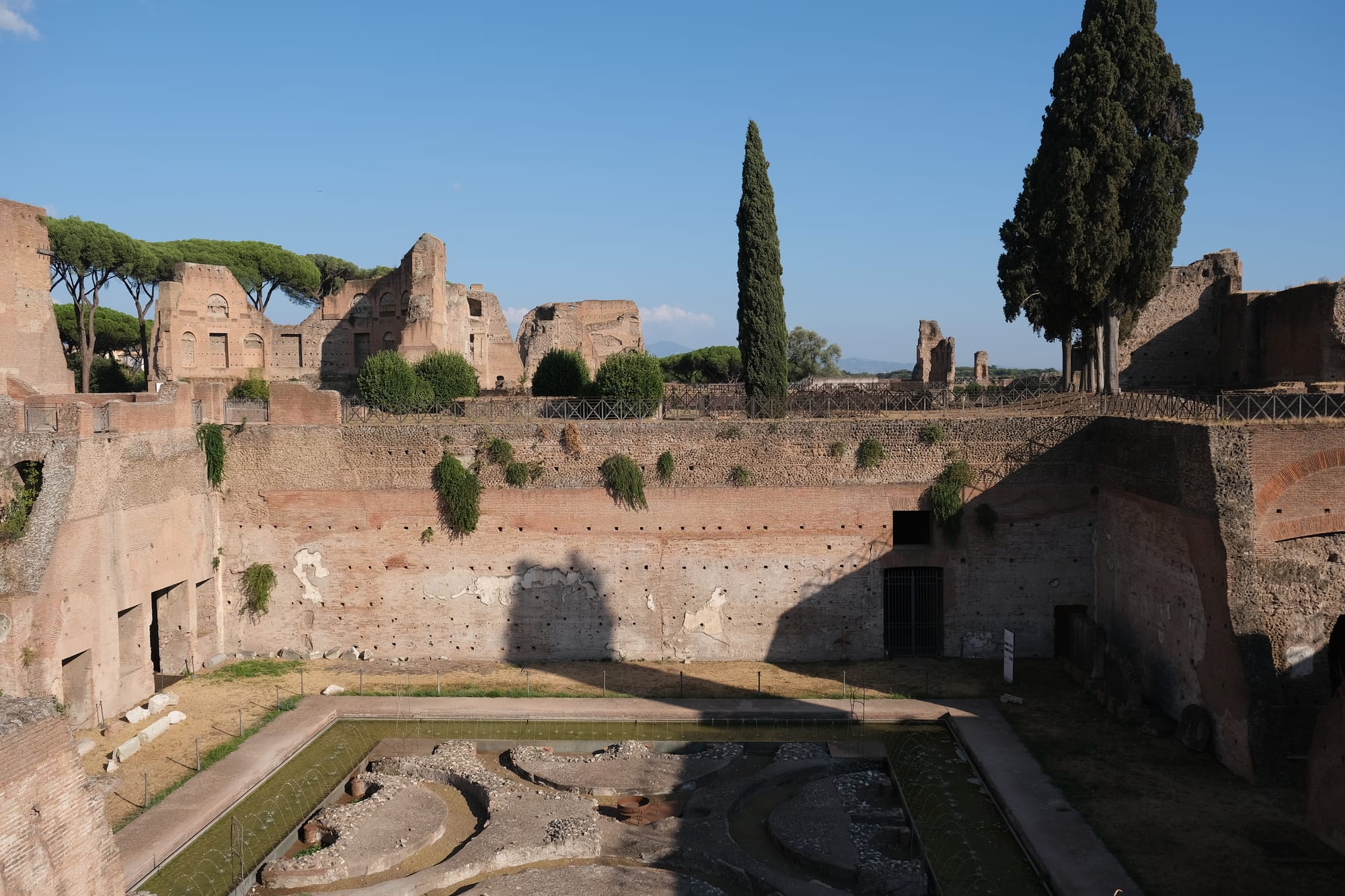
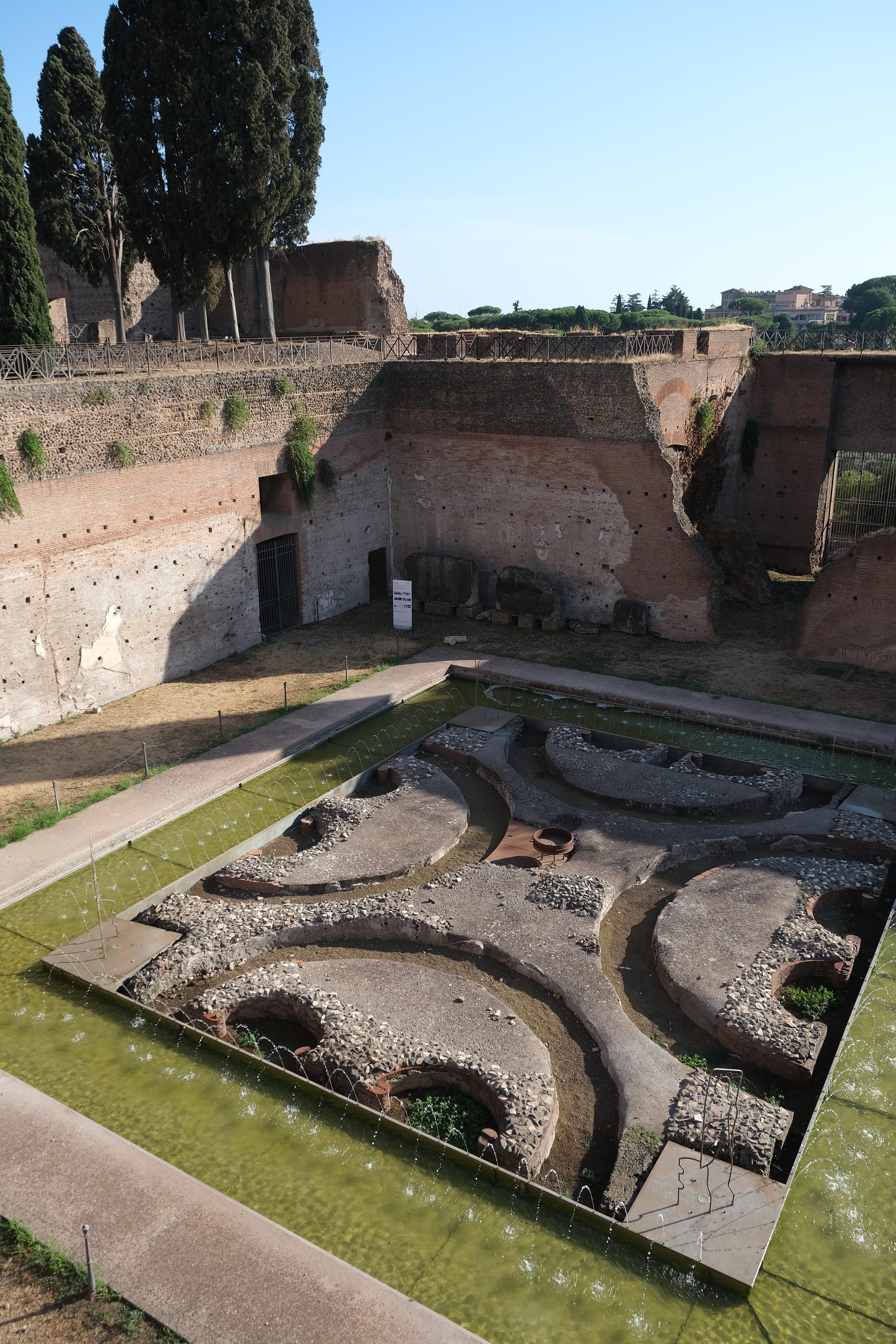
A courtyard within the imperial palace that I must imagine would have once been really beautiful.
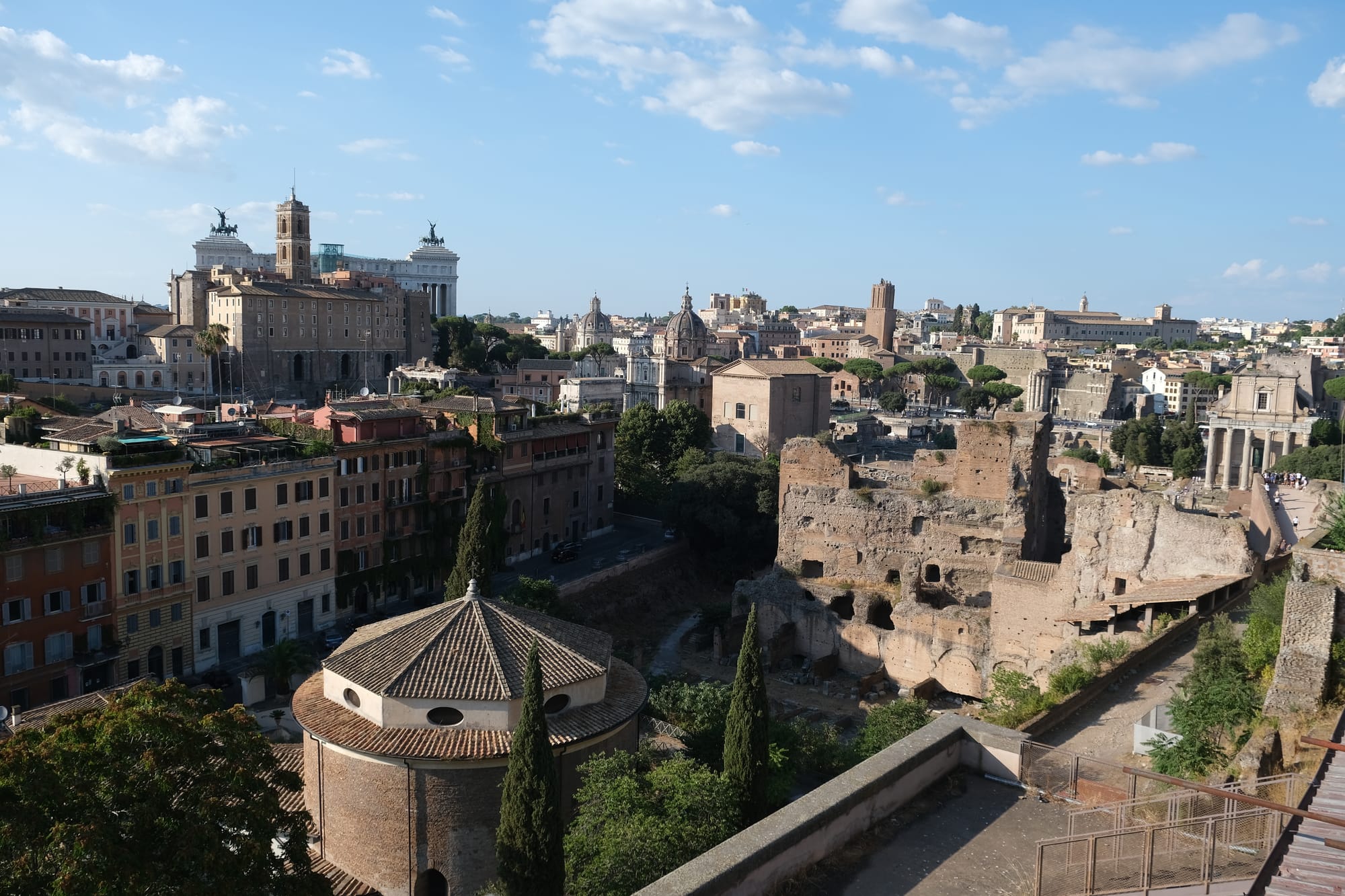
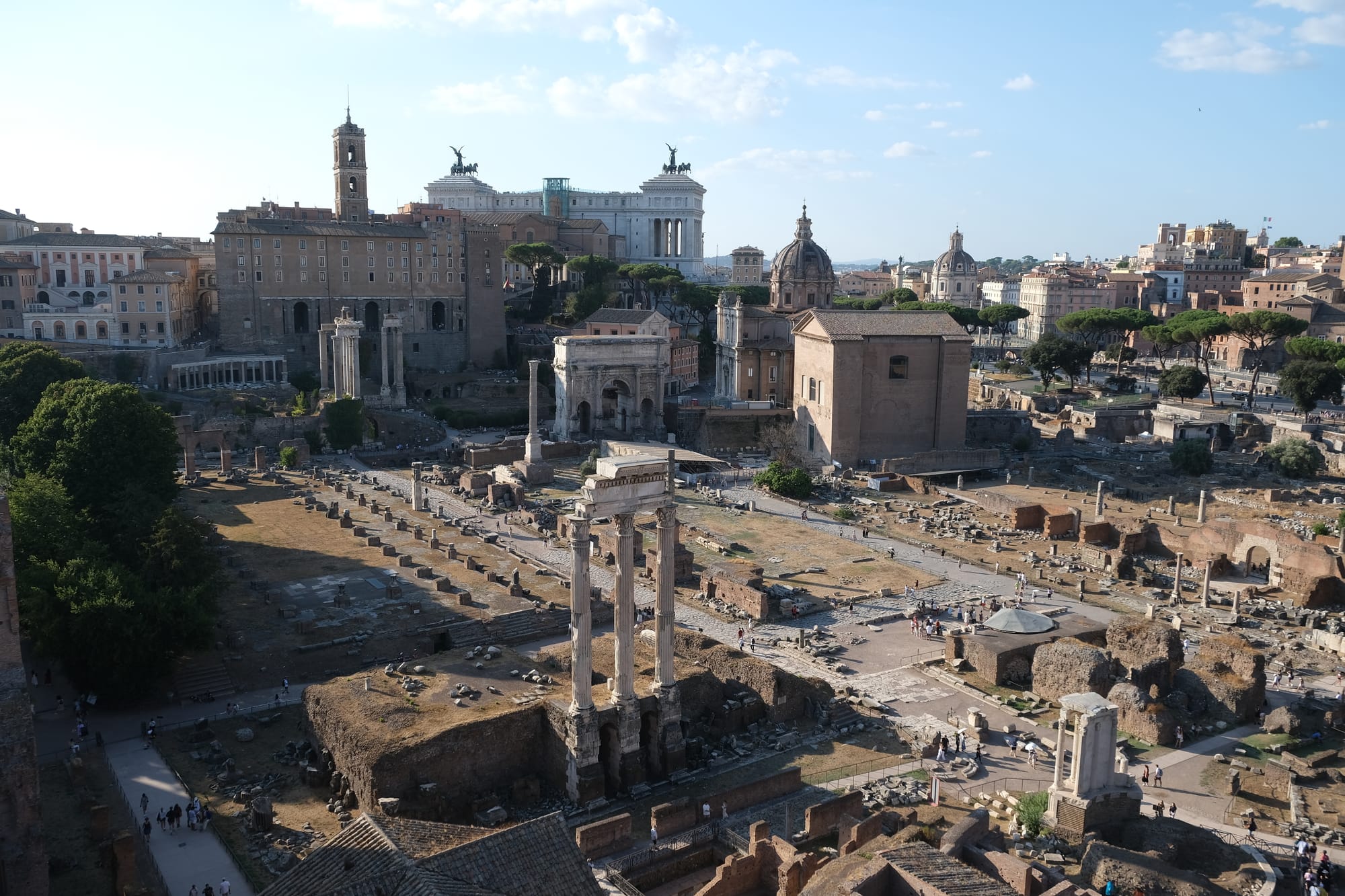
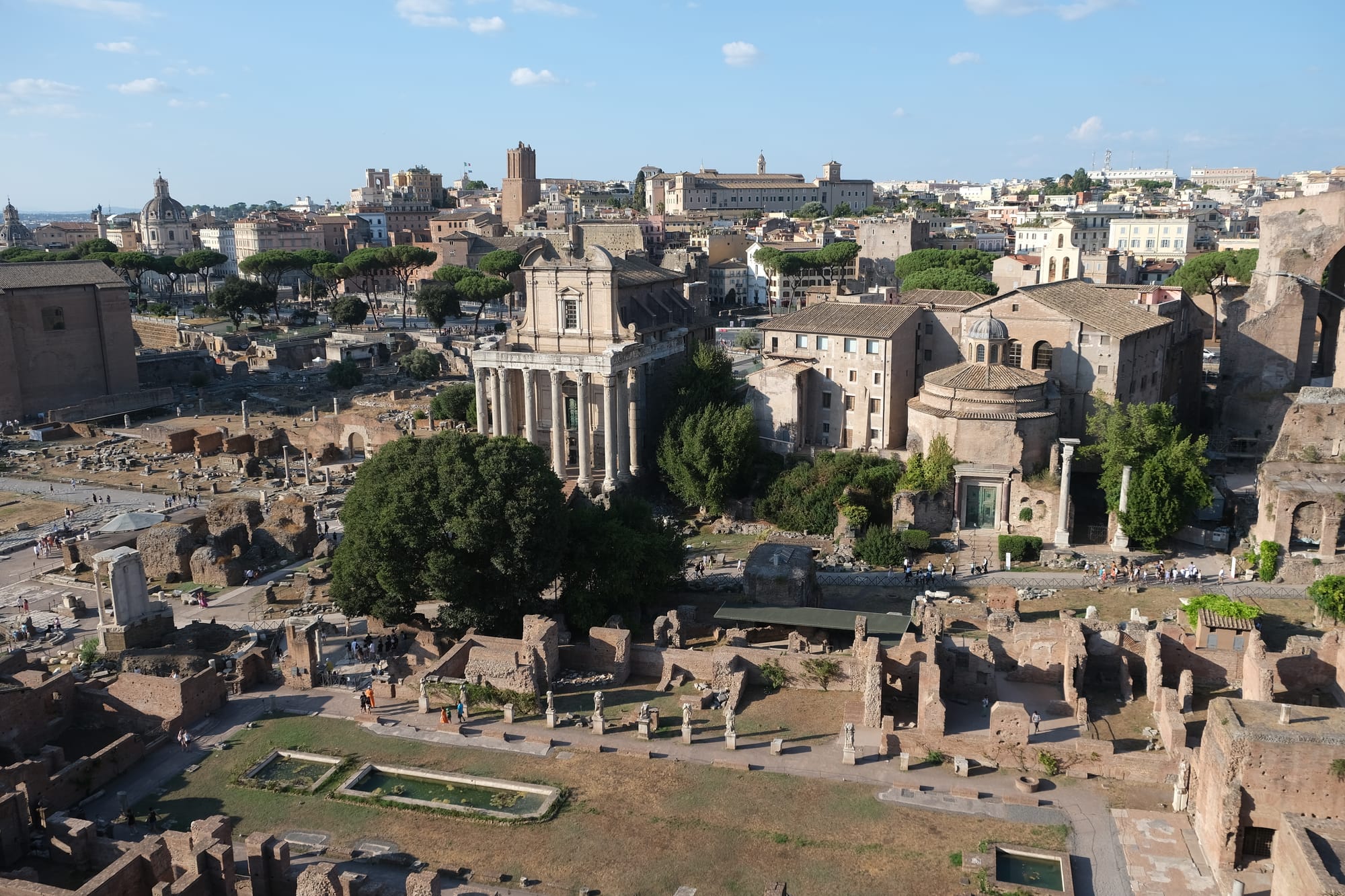
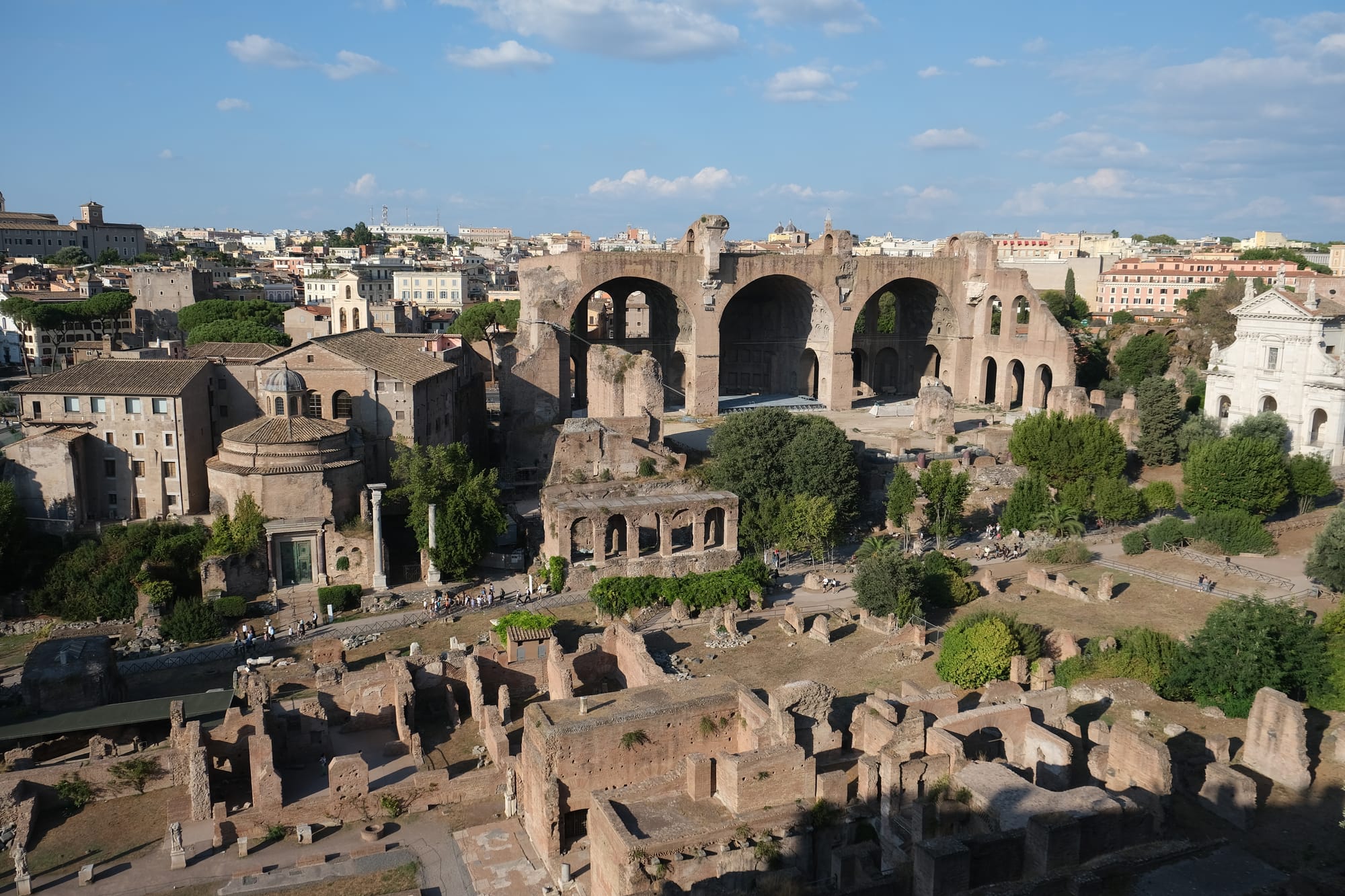
The Roman Forum; with the ruins of arches, temples, and basilicas, as seen from the top of the Palatine Hill.
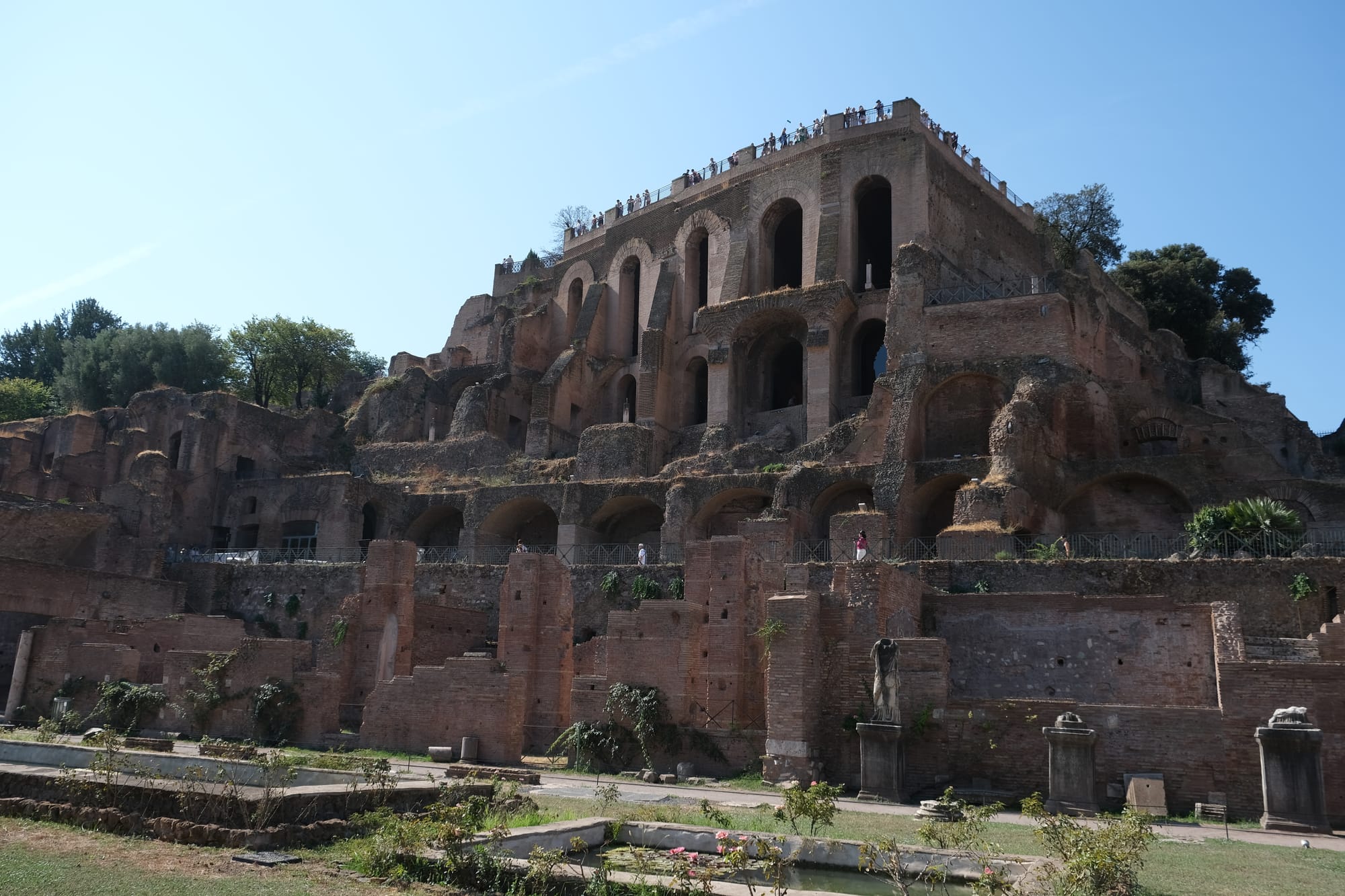
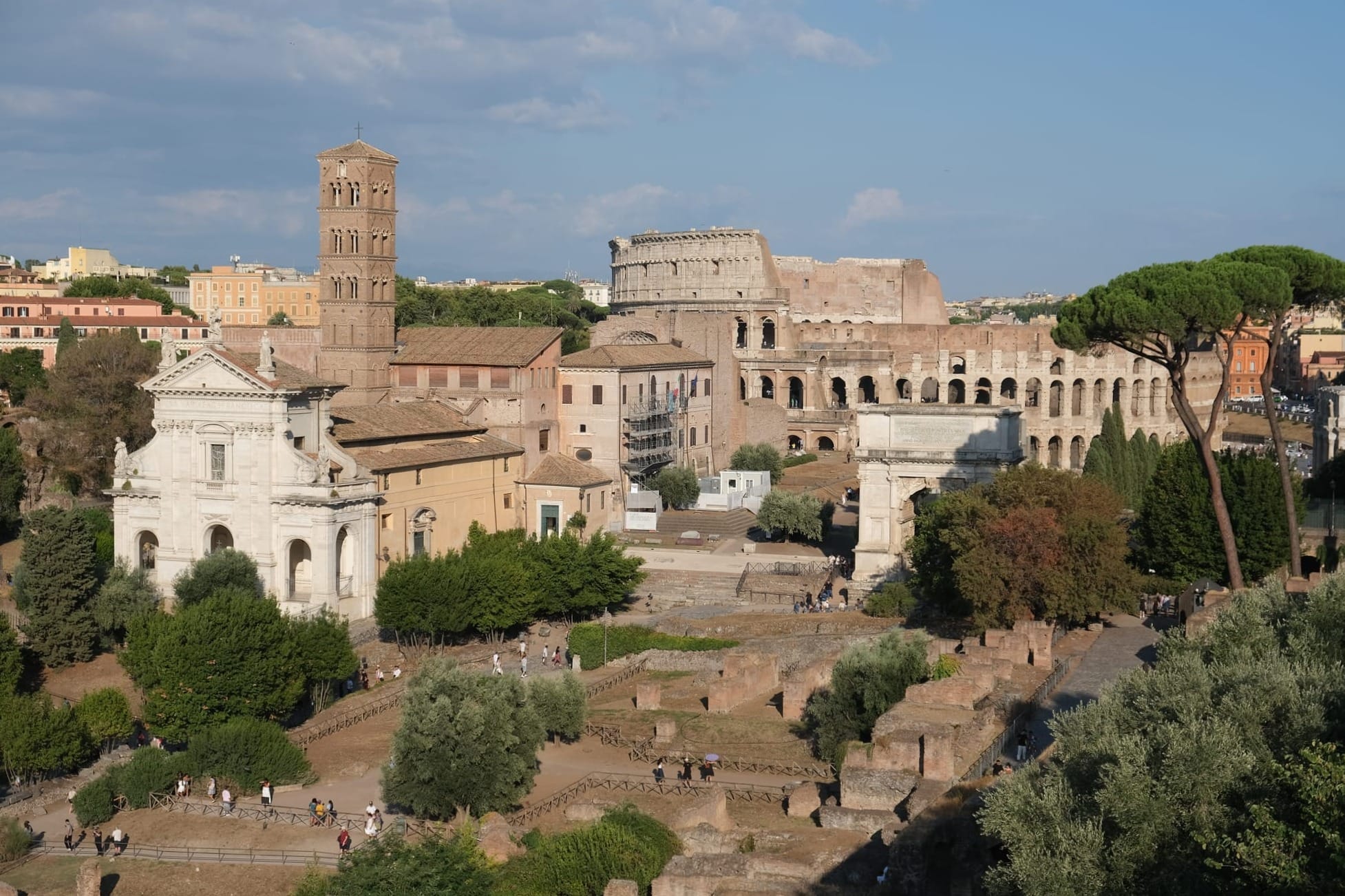
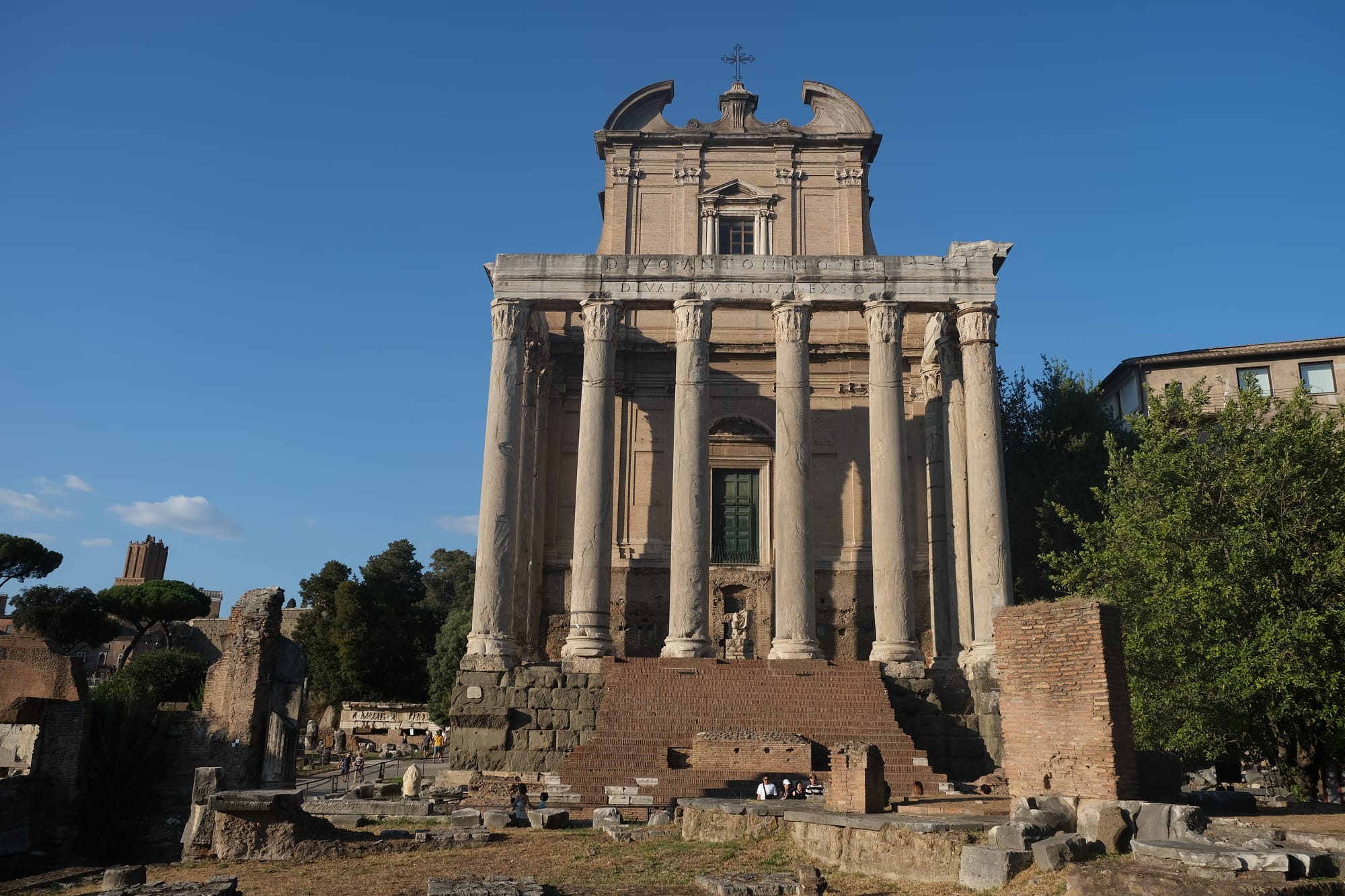
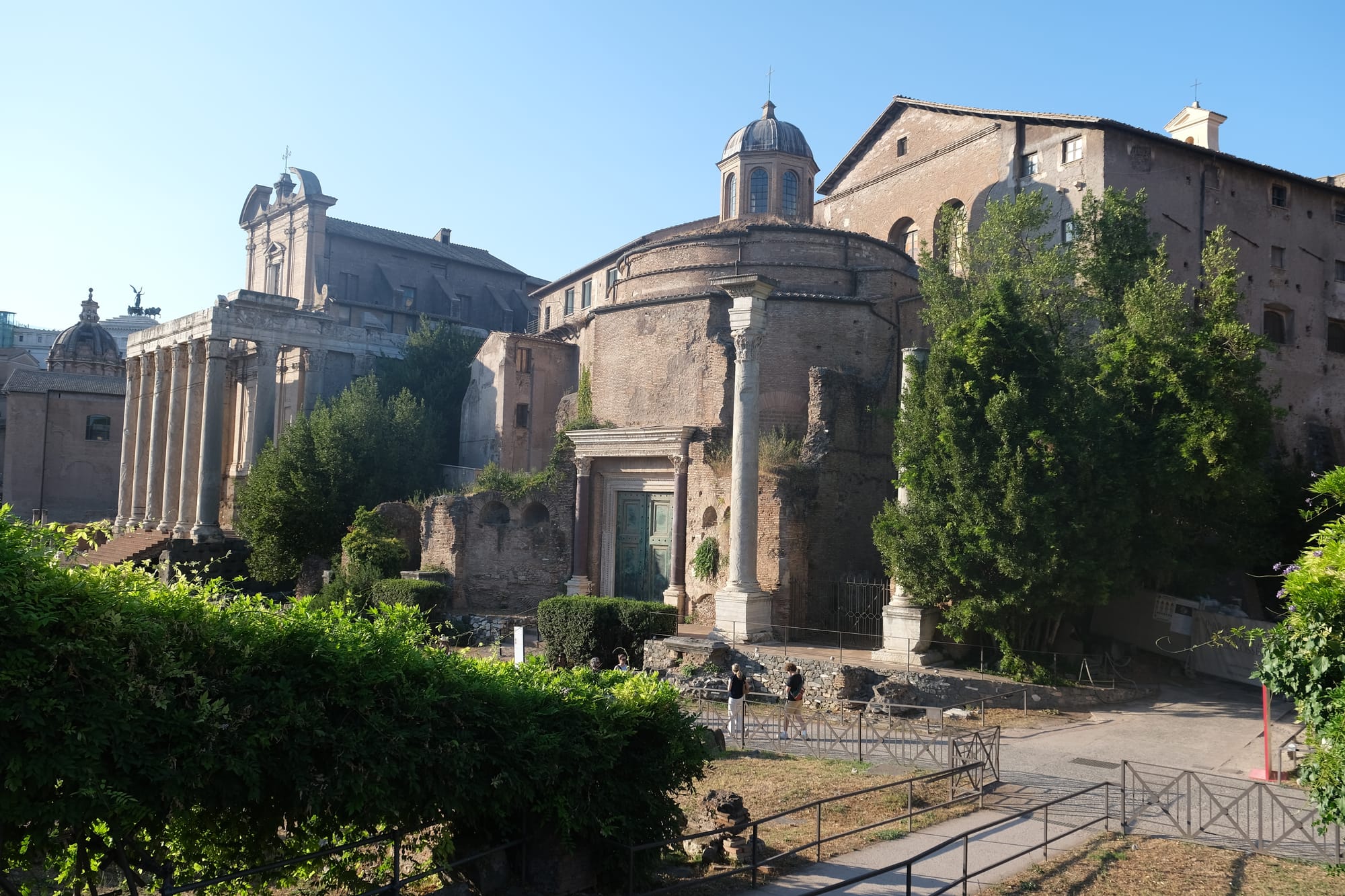
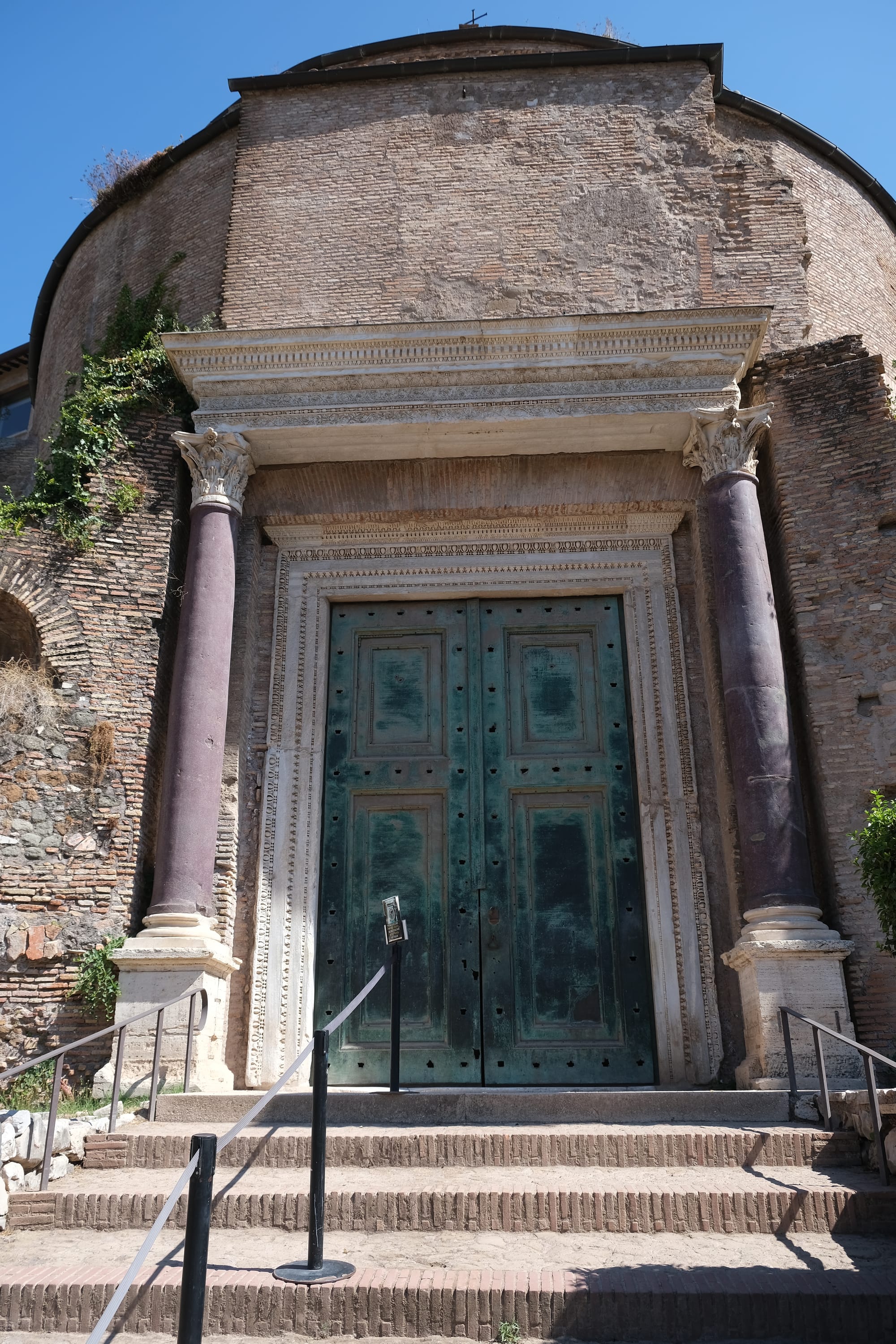
The iron doors seen on this building are original, as they were buried and thus were not stolen to make church bells, unlike many of the other iron doors from ancient Roman buildings.
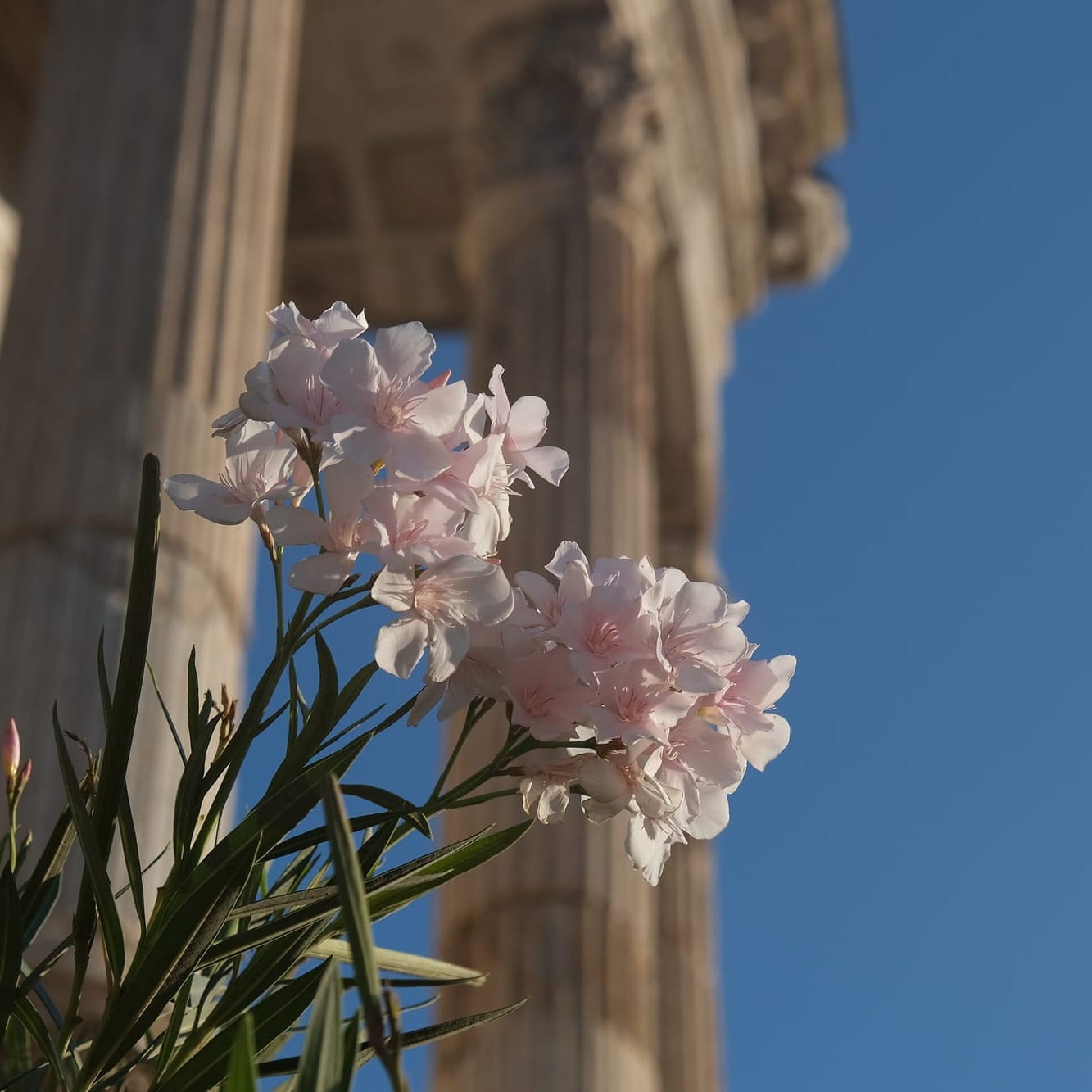
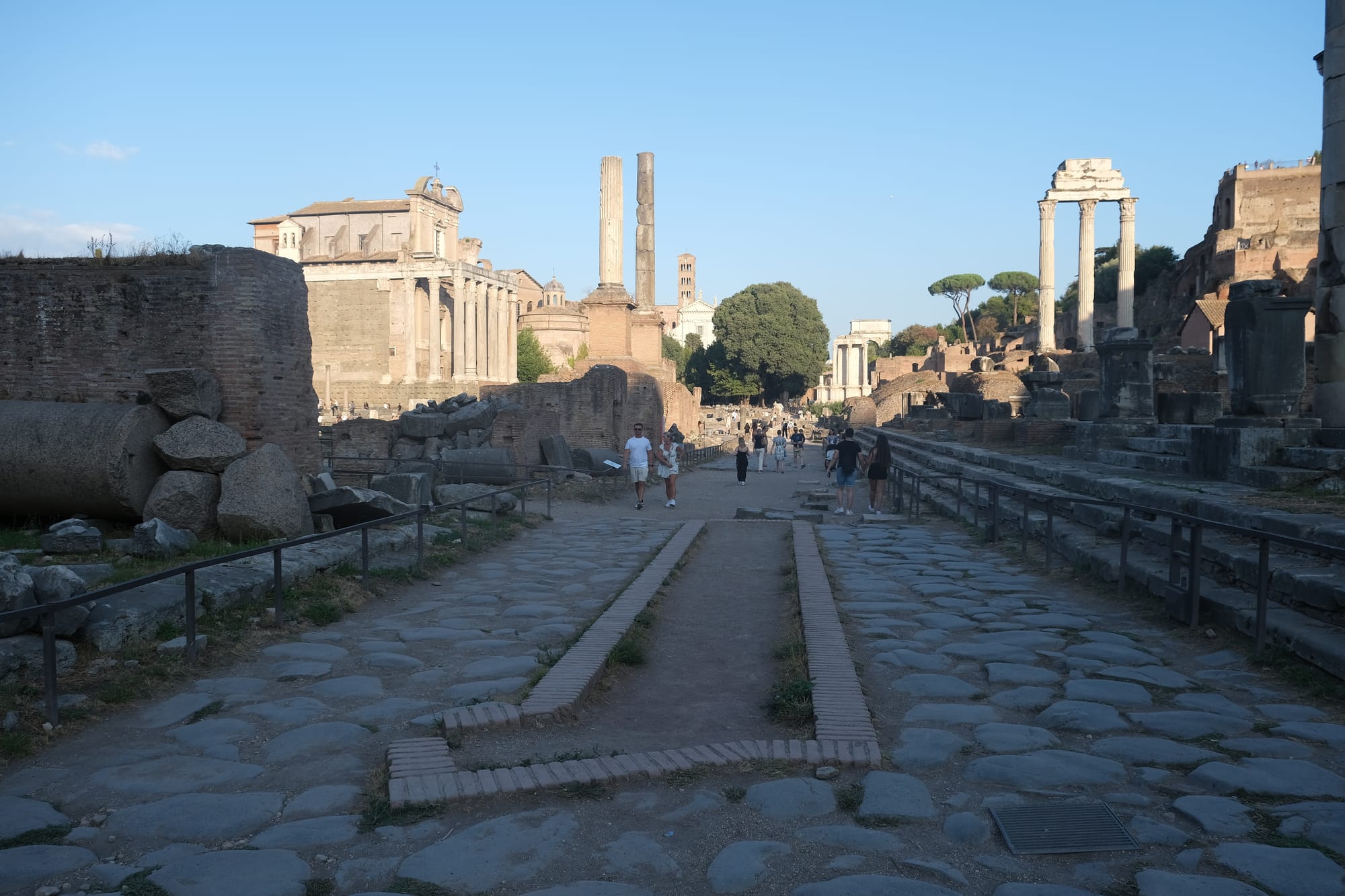
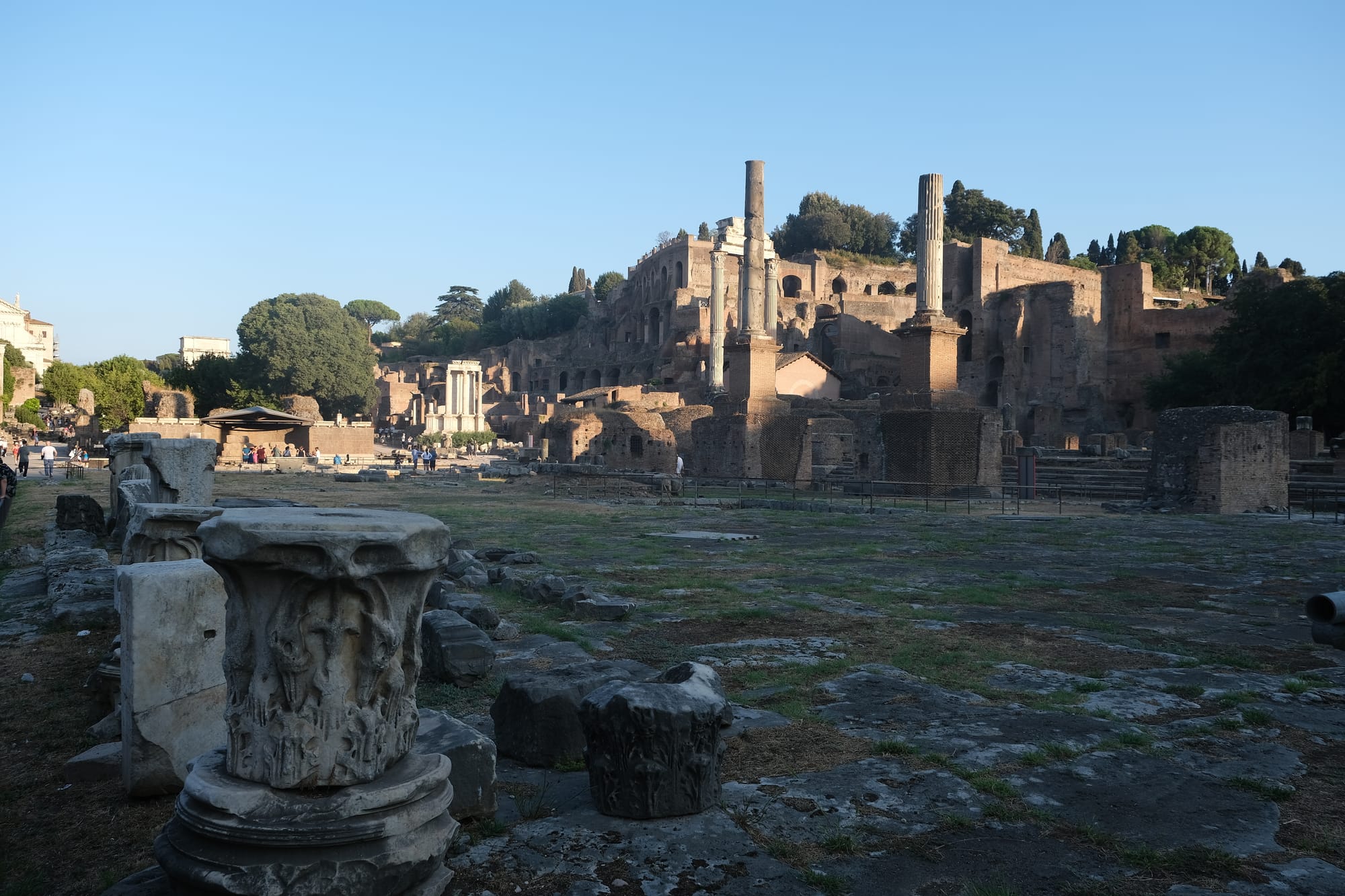
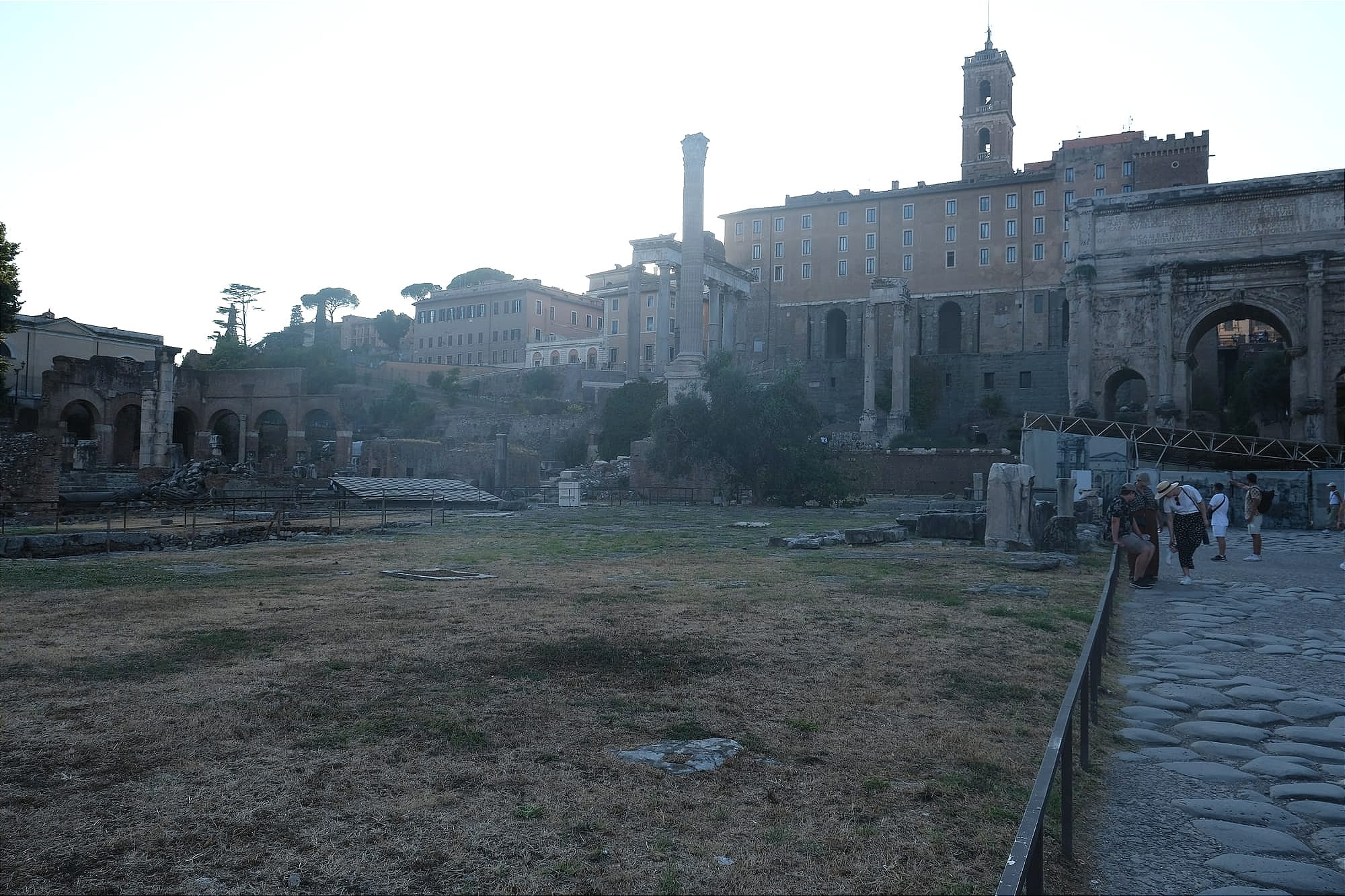
The roman Forum, the heart of ancient Rome; the last place we visited in the Archaeological Park before it closed.
The Vatican
We visited the Vatican Museums while in Rome and saw the Sistine Chapel. I didn't take many pictures here as mostly we perused the historical artifacts and the paintings. The museums were very extensive and we only explored a small part of the exhibits.
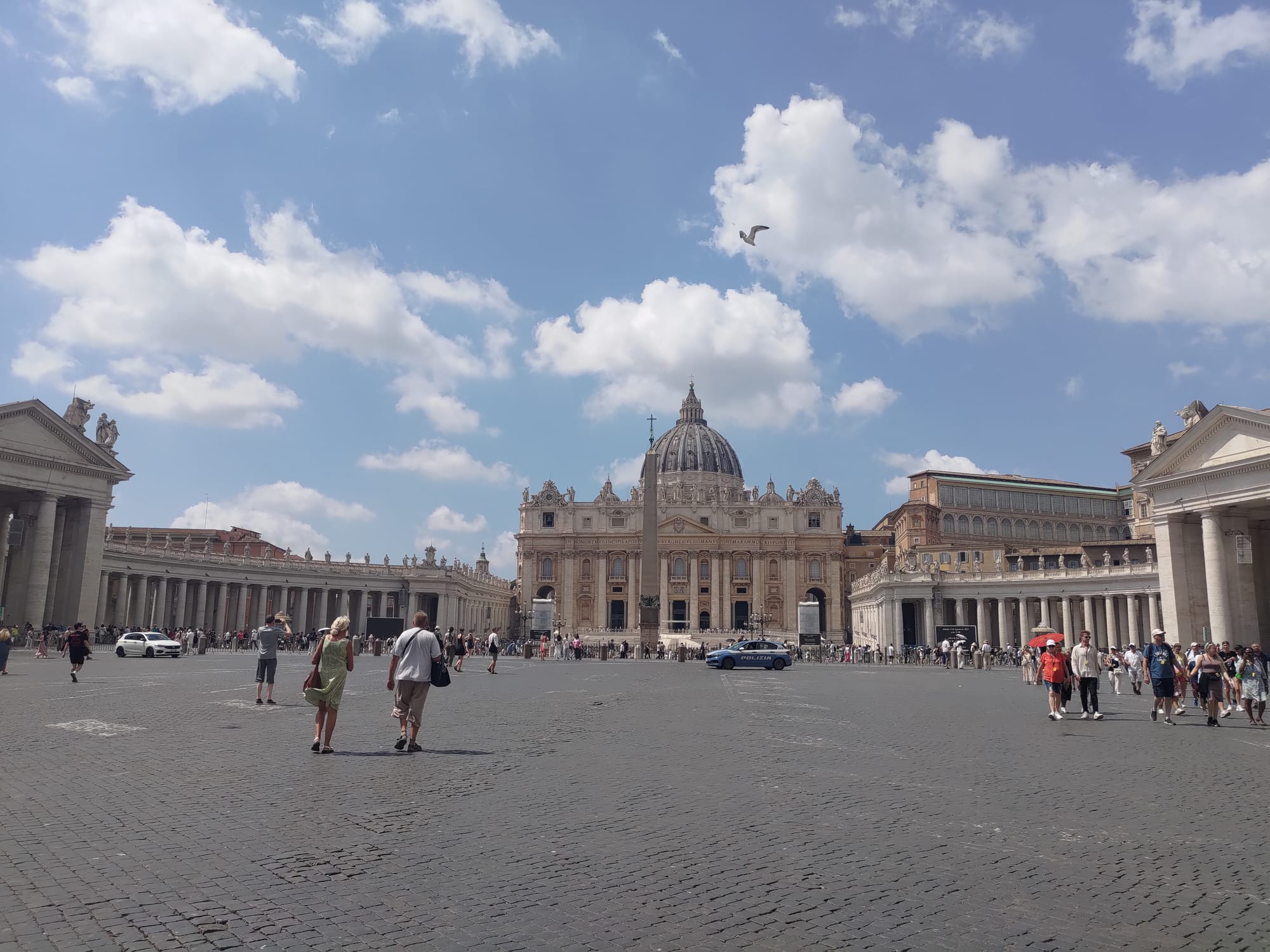
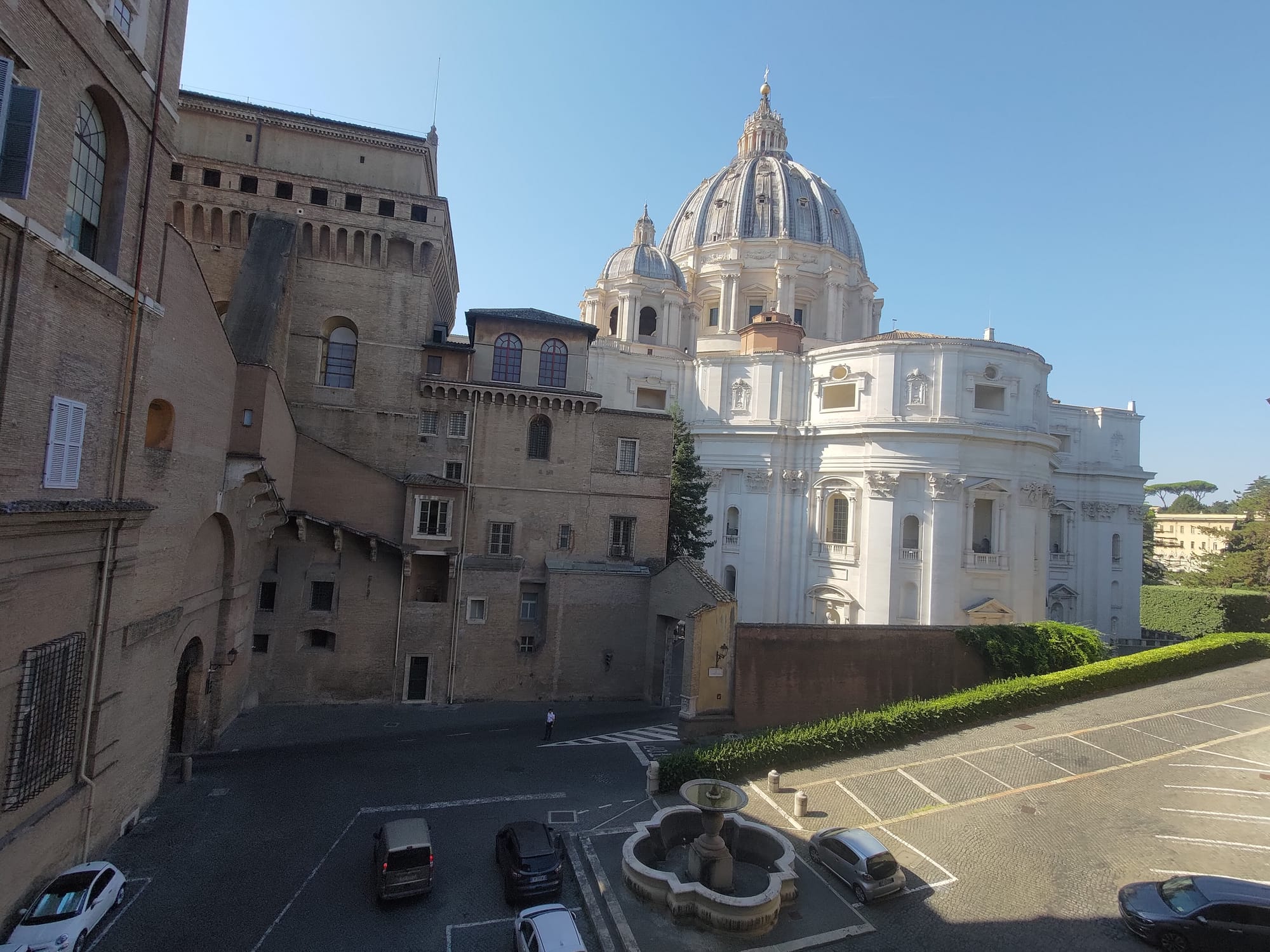
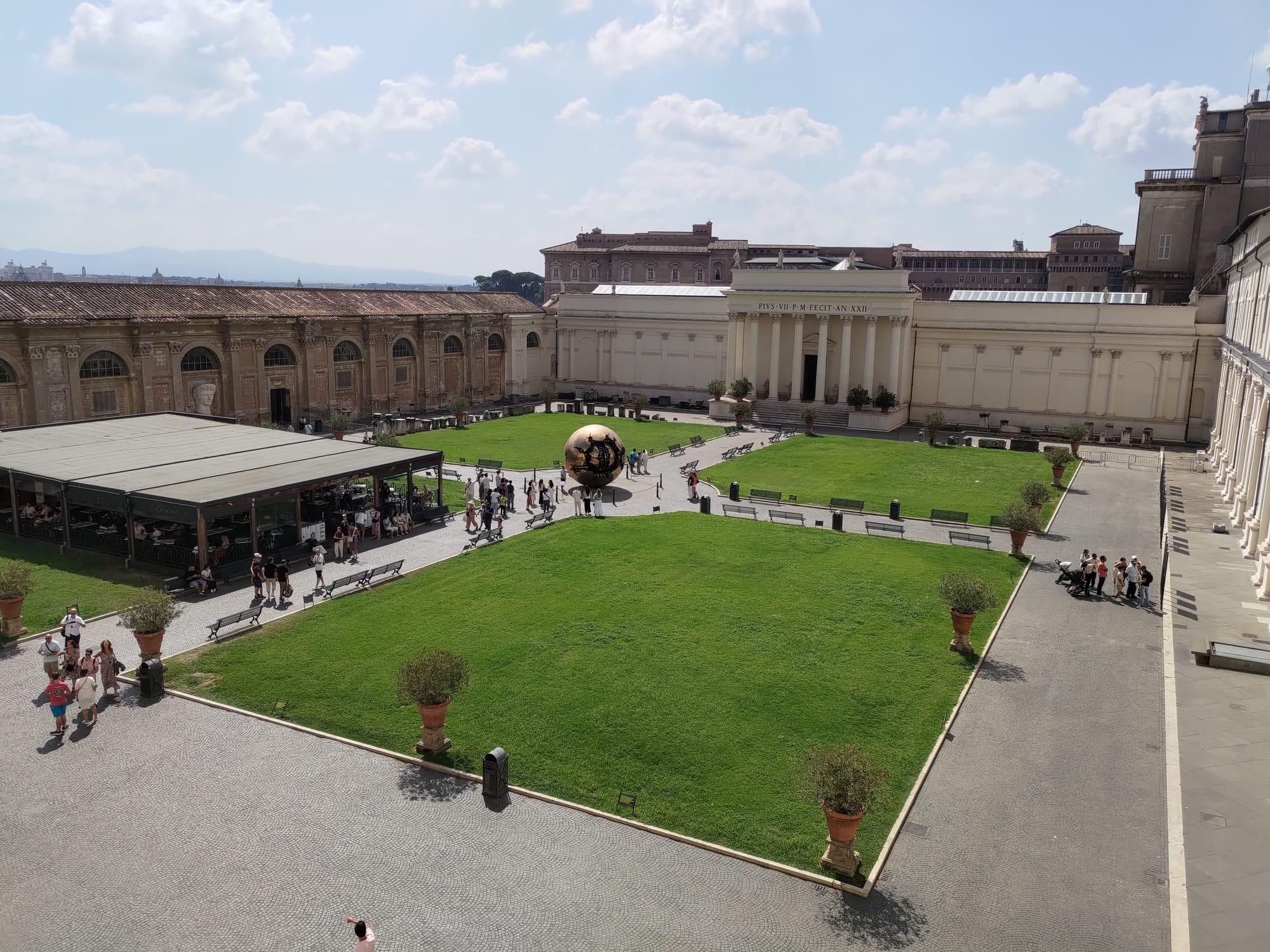
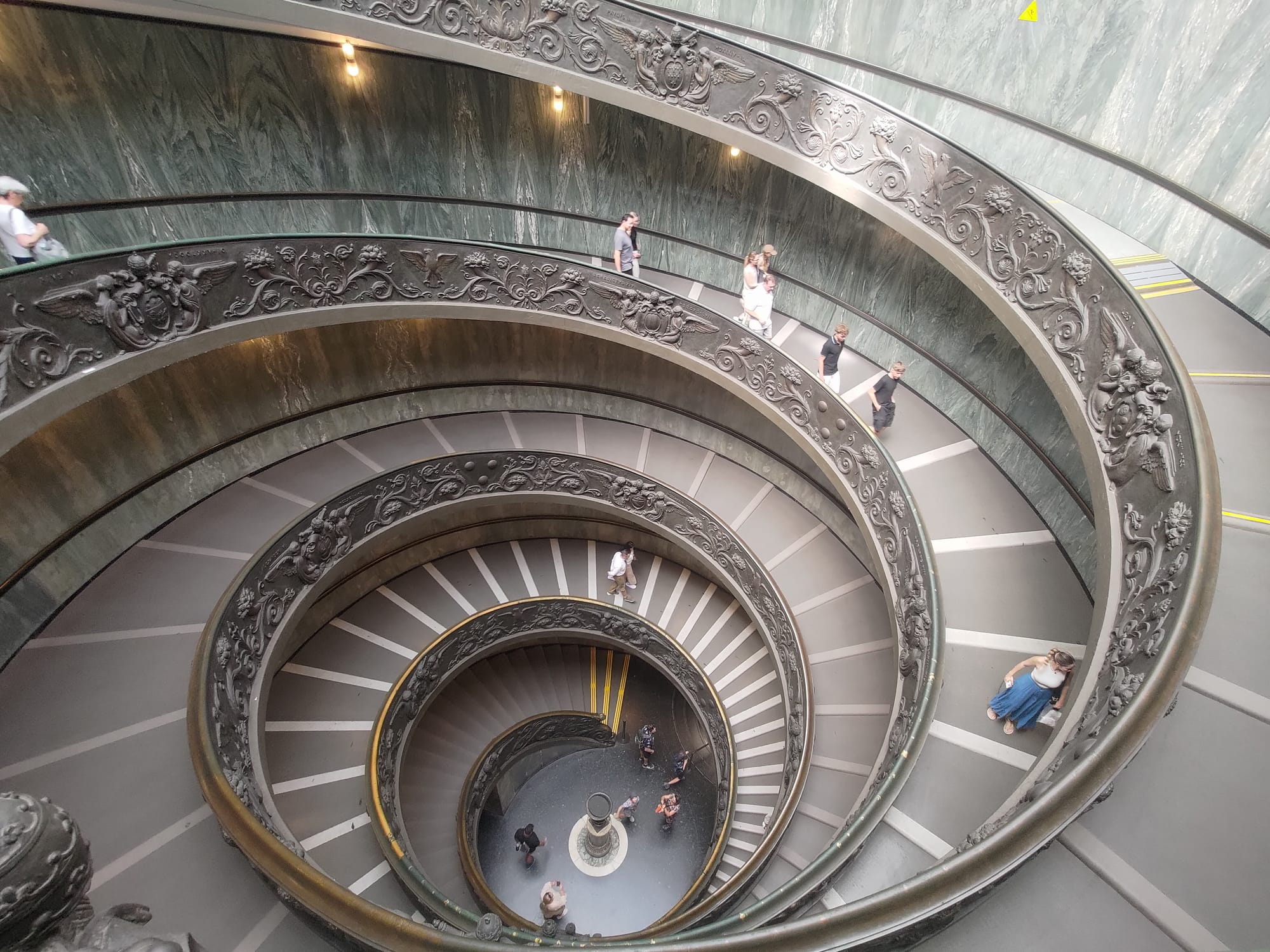
Walking through Rome
These are some of the pictures I took while walking around Rome that didn't fit into a particular destination.
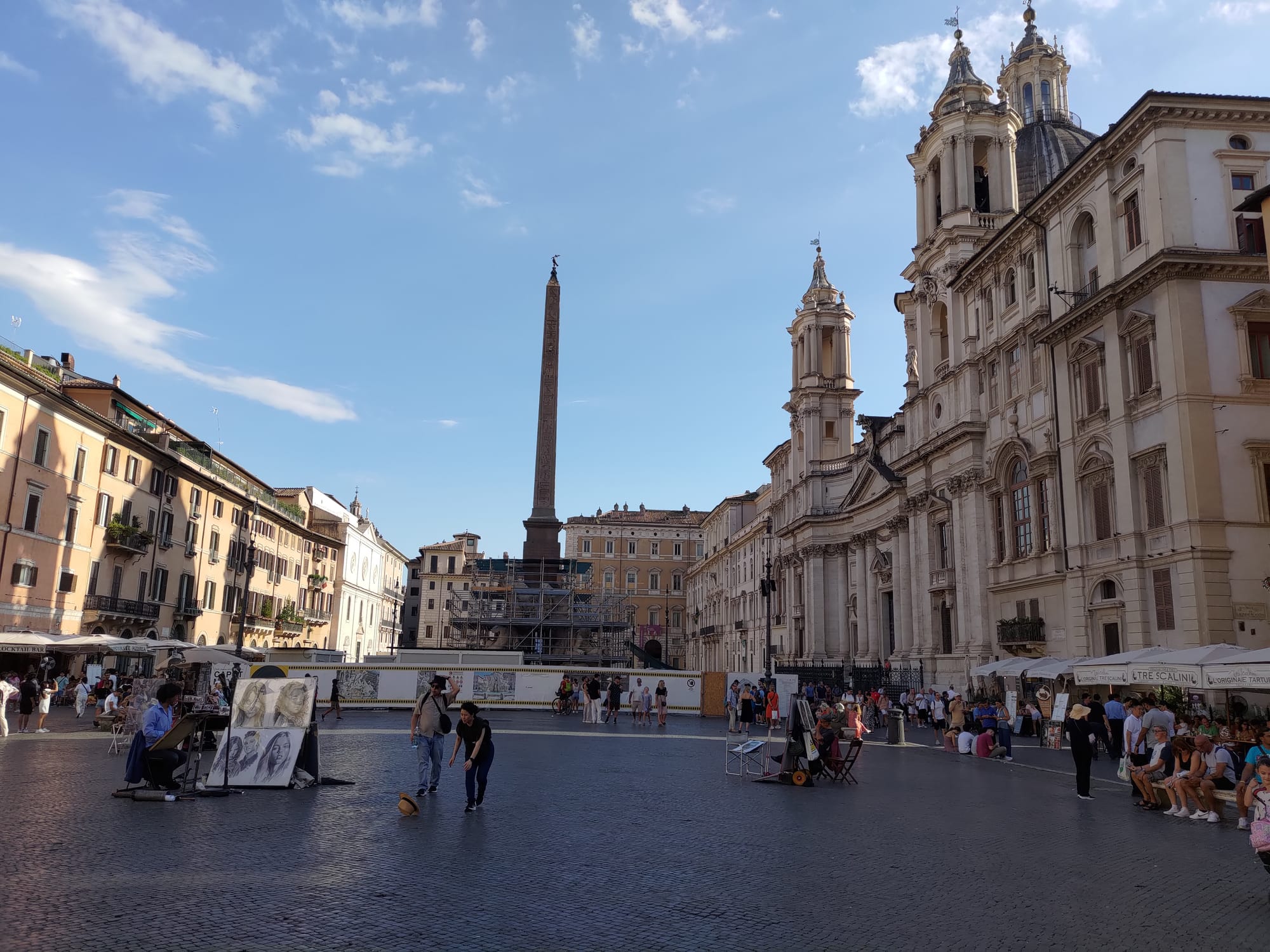

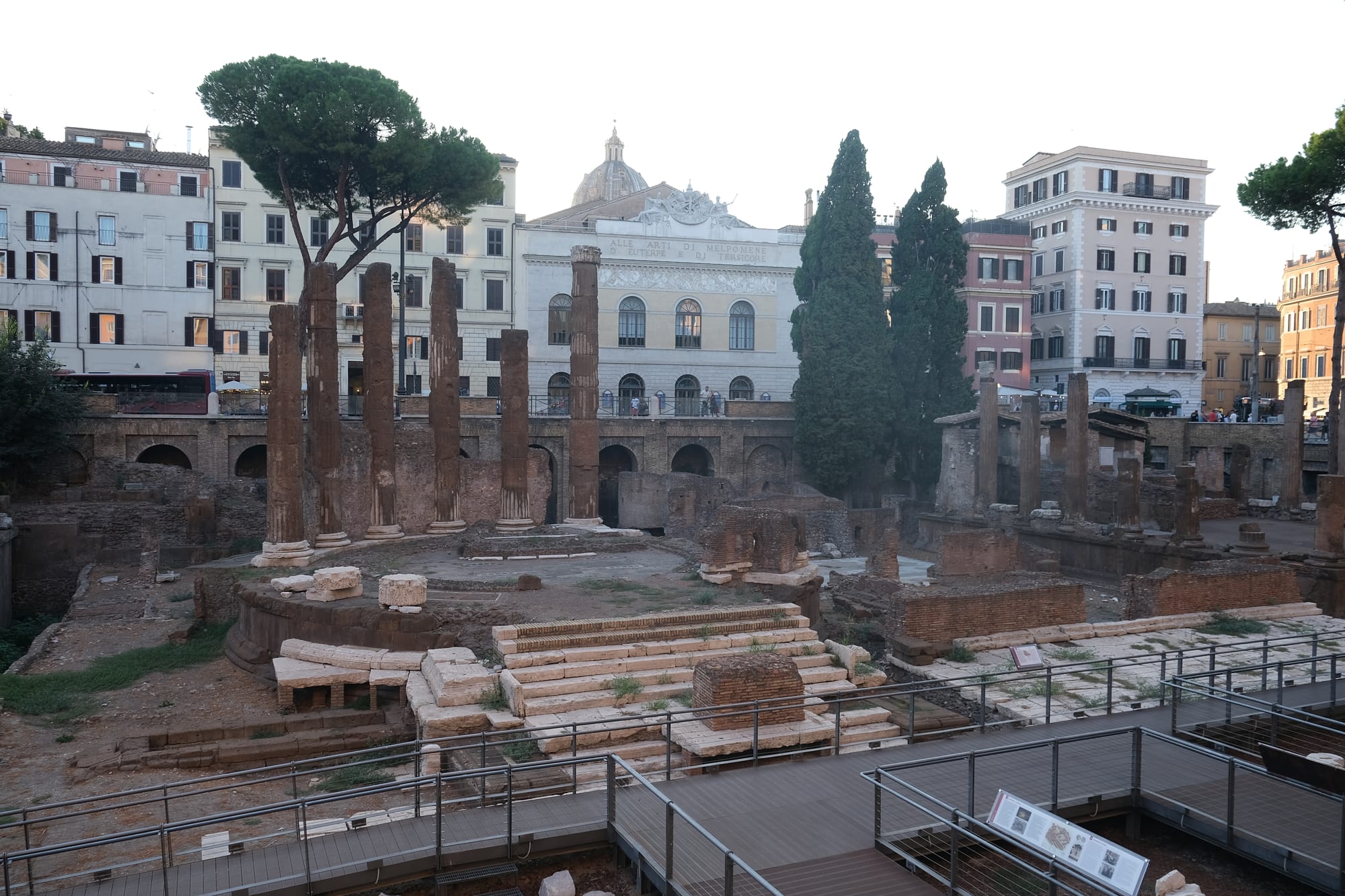
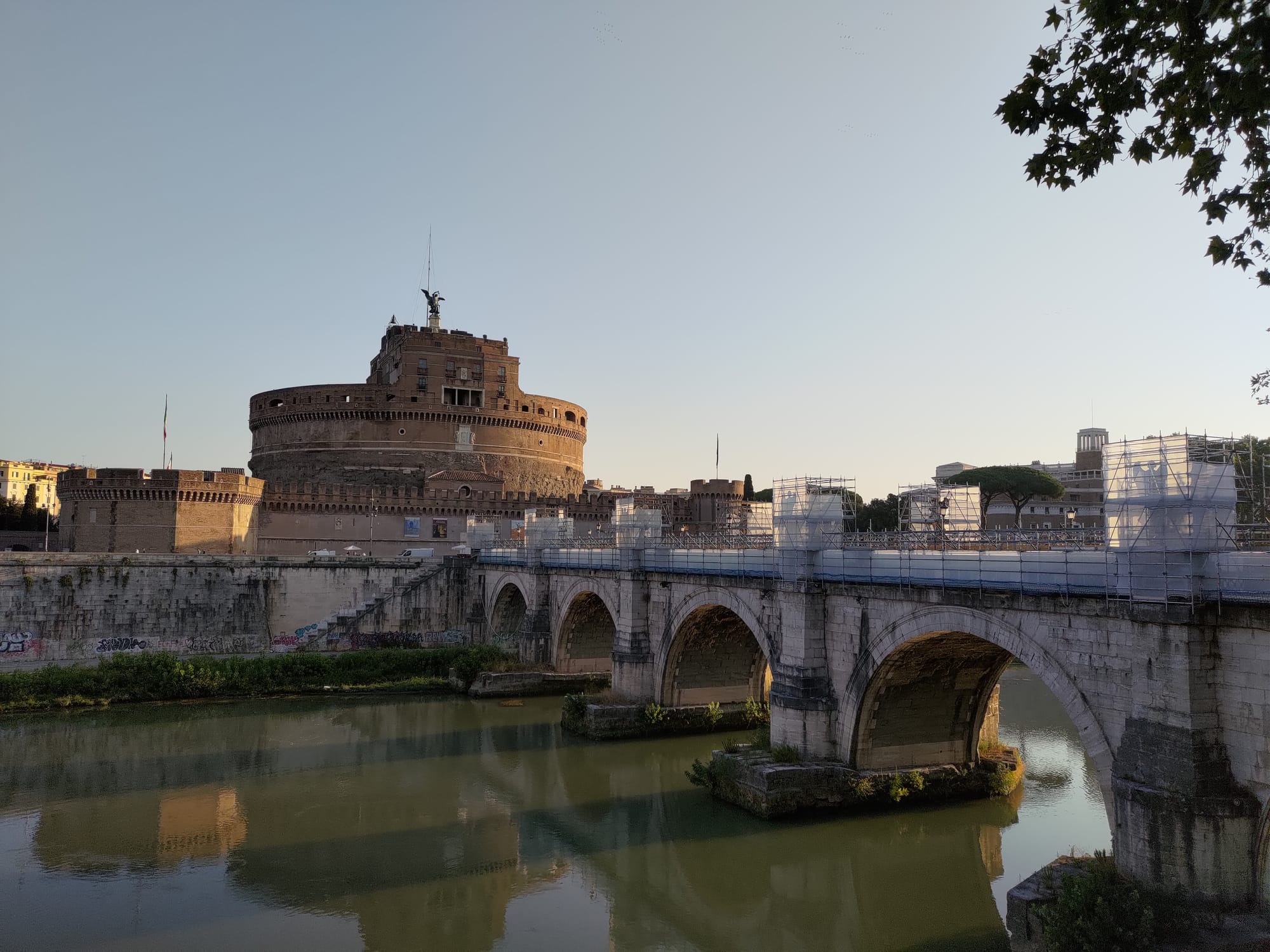
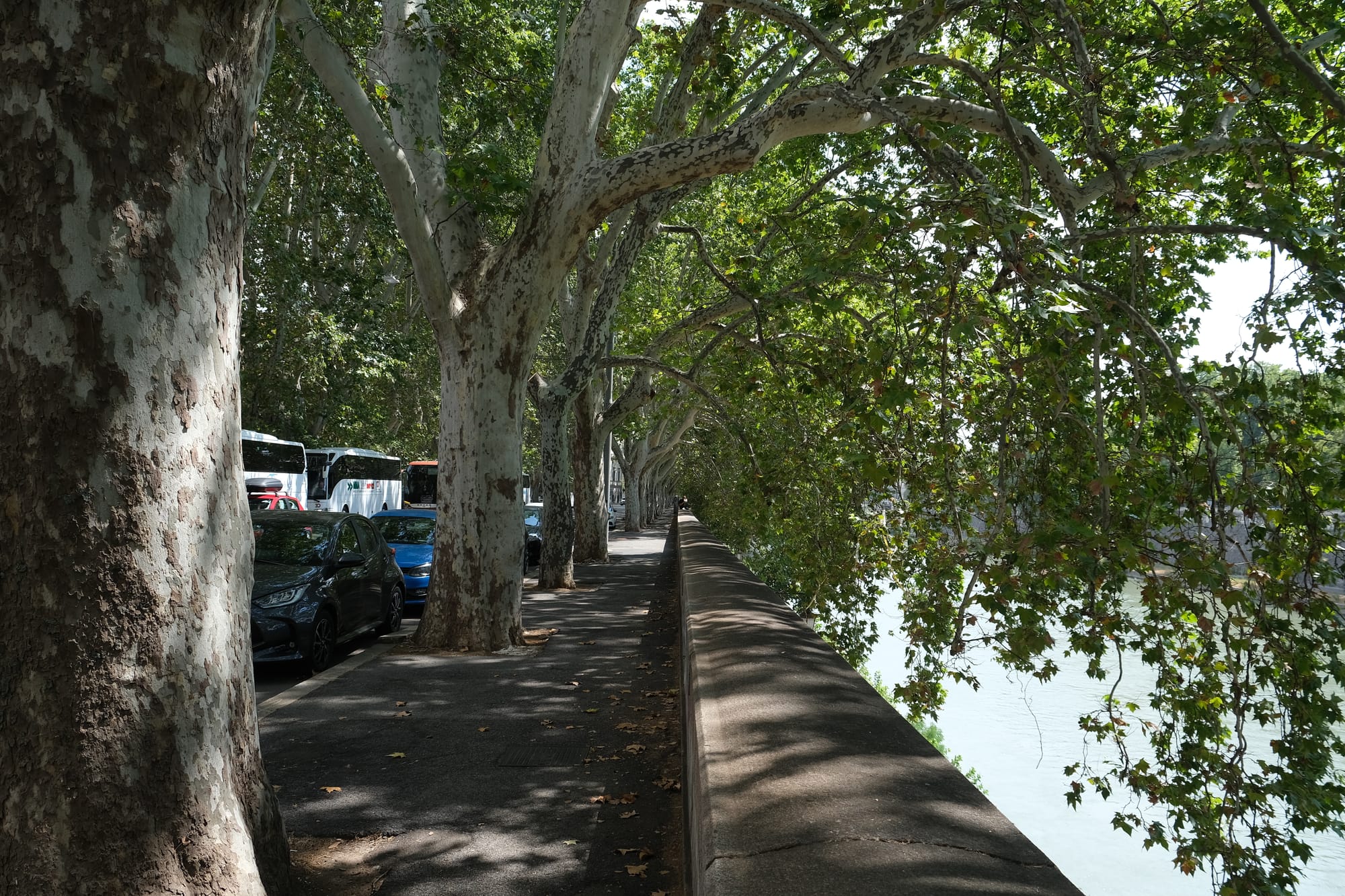
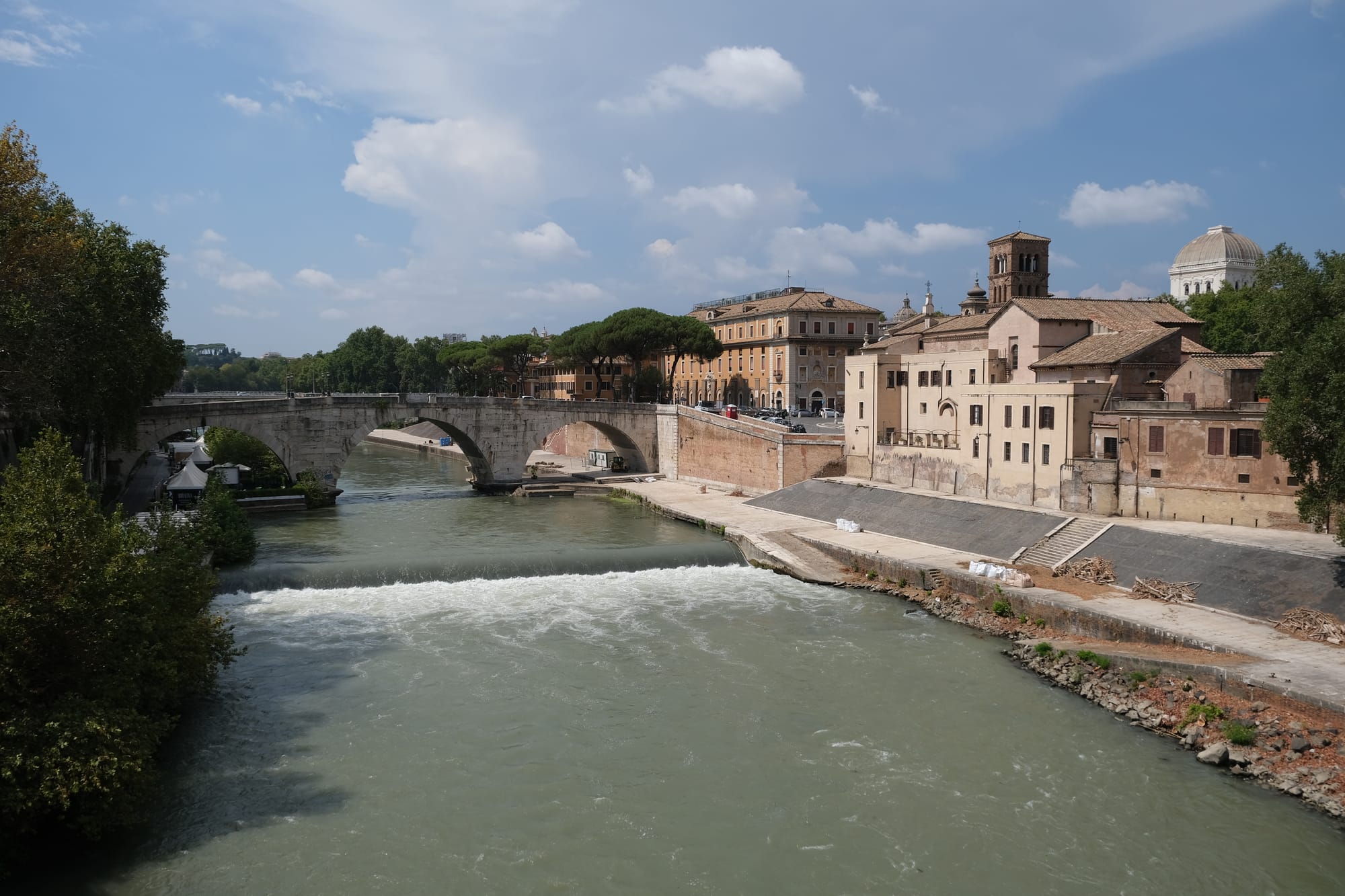
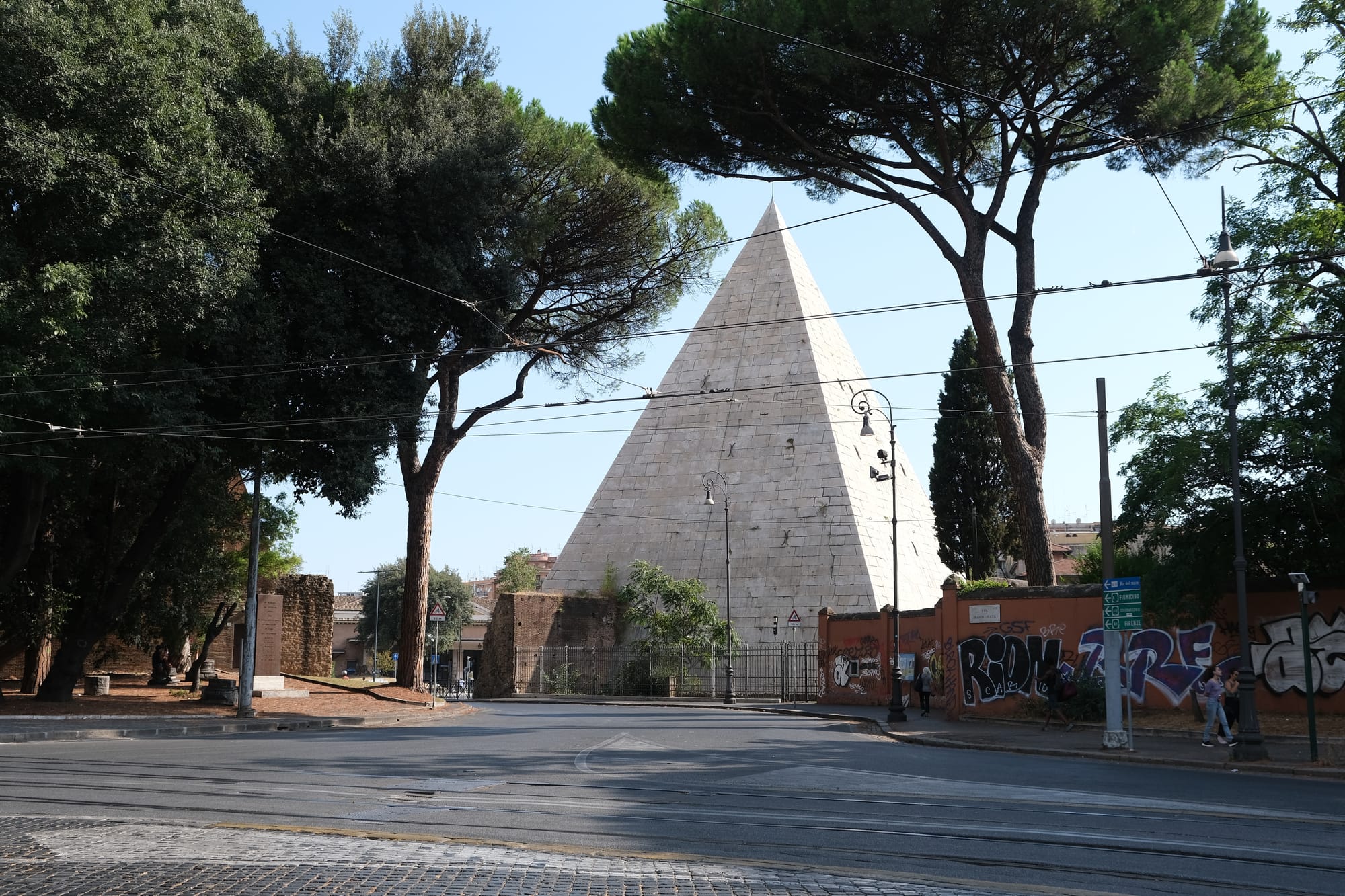
Theatre of Marcellus
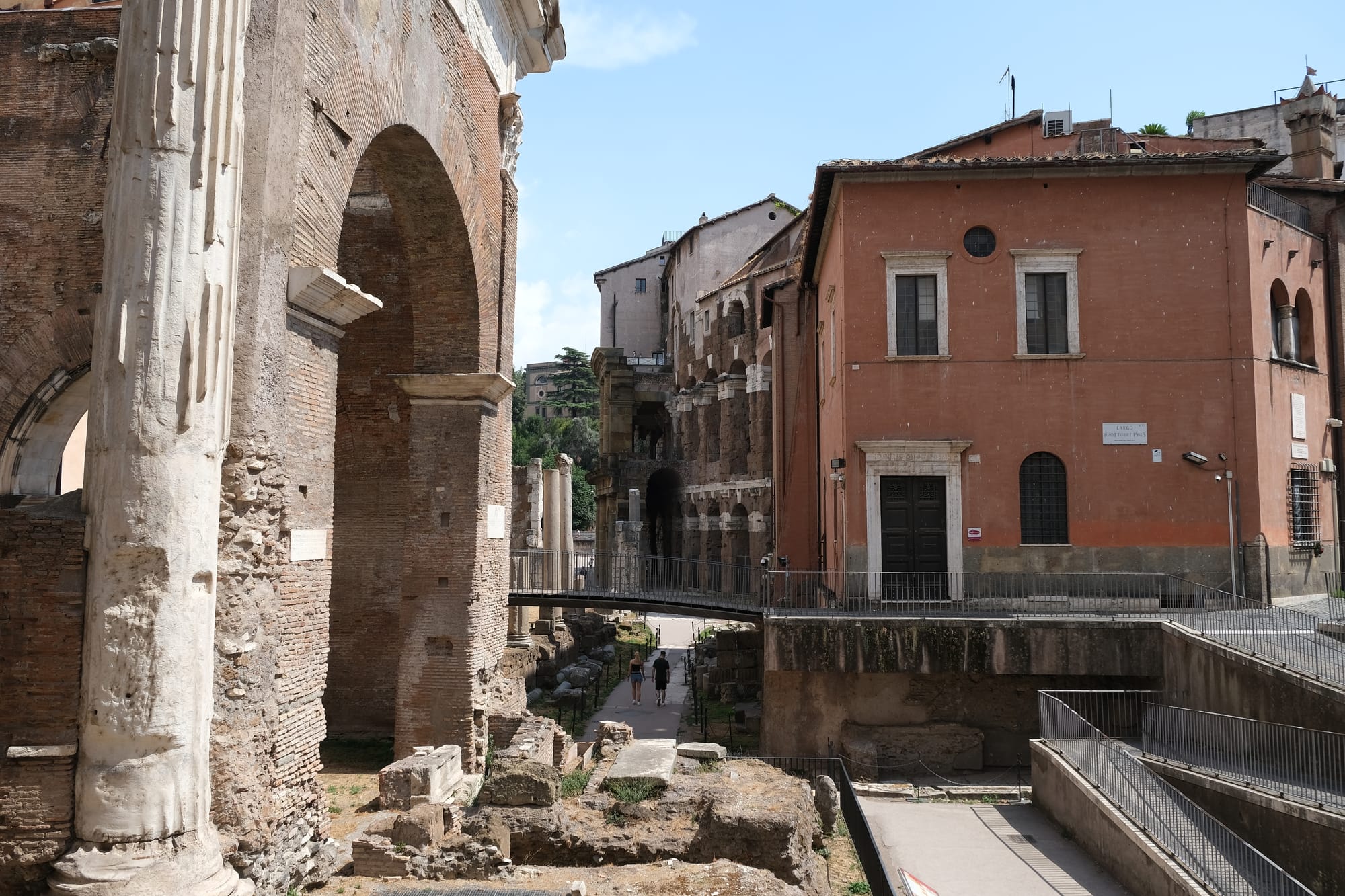

This was an old Roman open air theatre built at the end of the republic. I was fascinated by how this building was reused and repurposed through the centuries. It was a fortress at one point and later became residential buildings using the Roman ruins as a foundation. It now makes for a fascinating building to look upon, with the more modern houses situated atop ancient Roman arches, still conforming to the semi-circular shape of the original theatre.
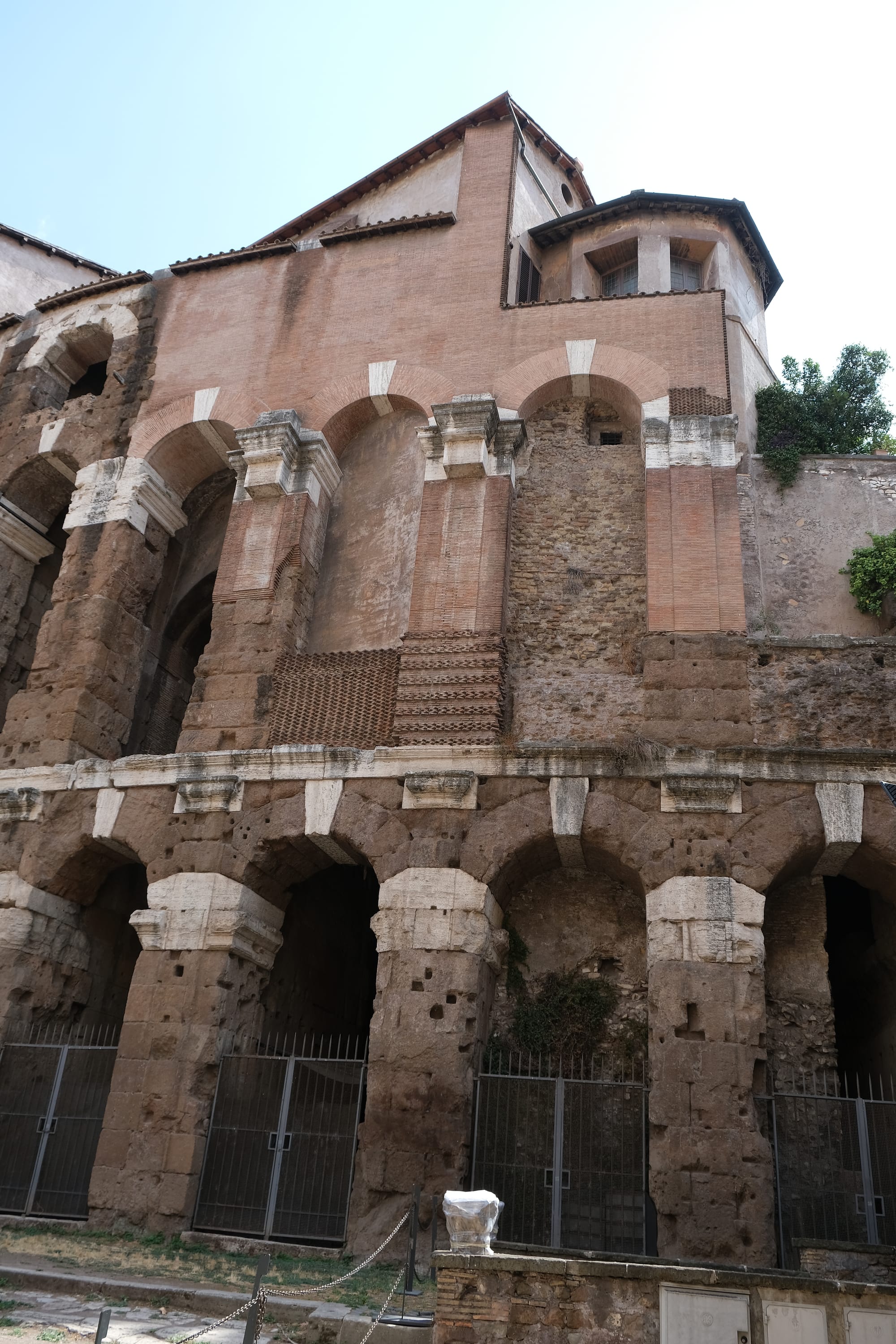
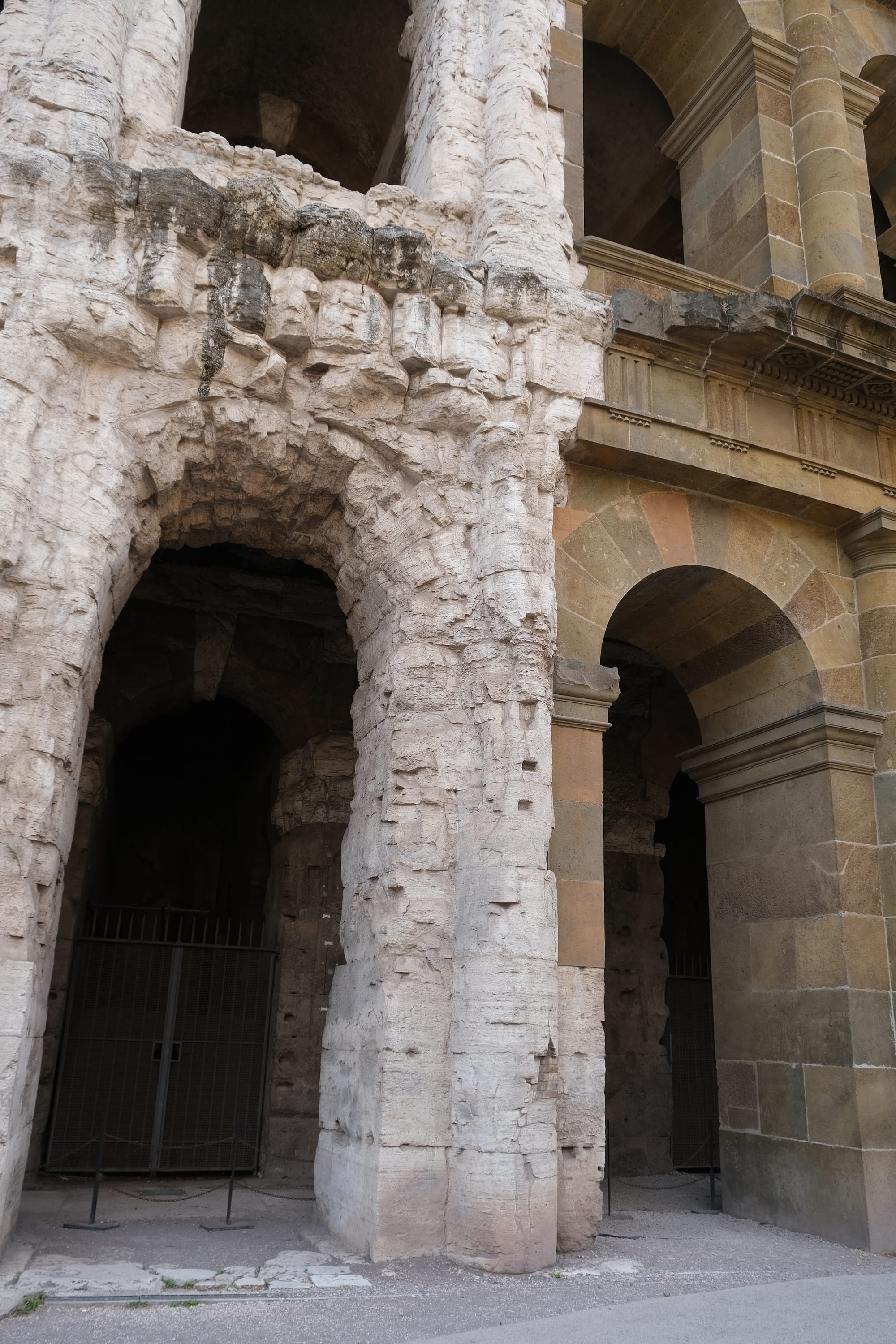
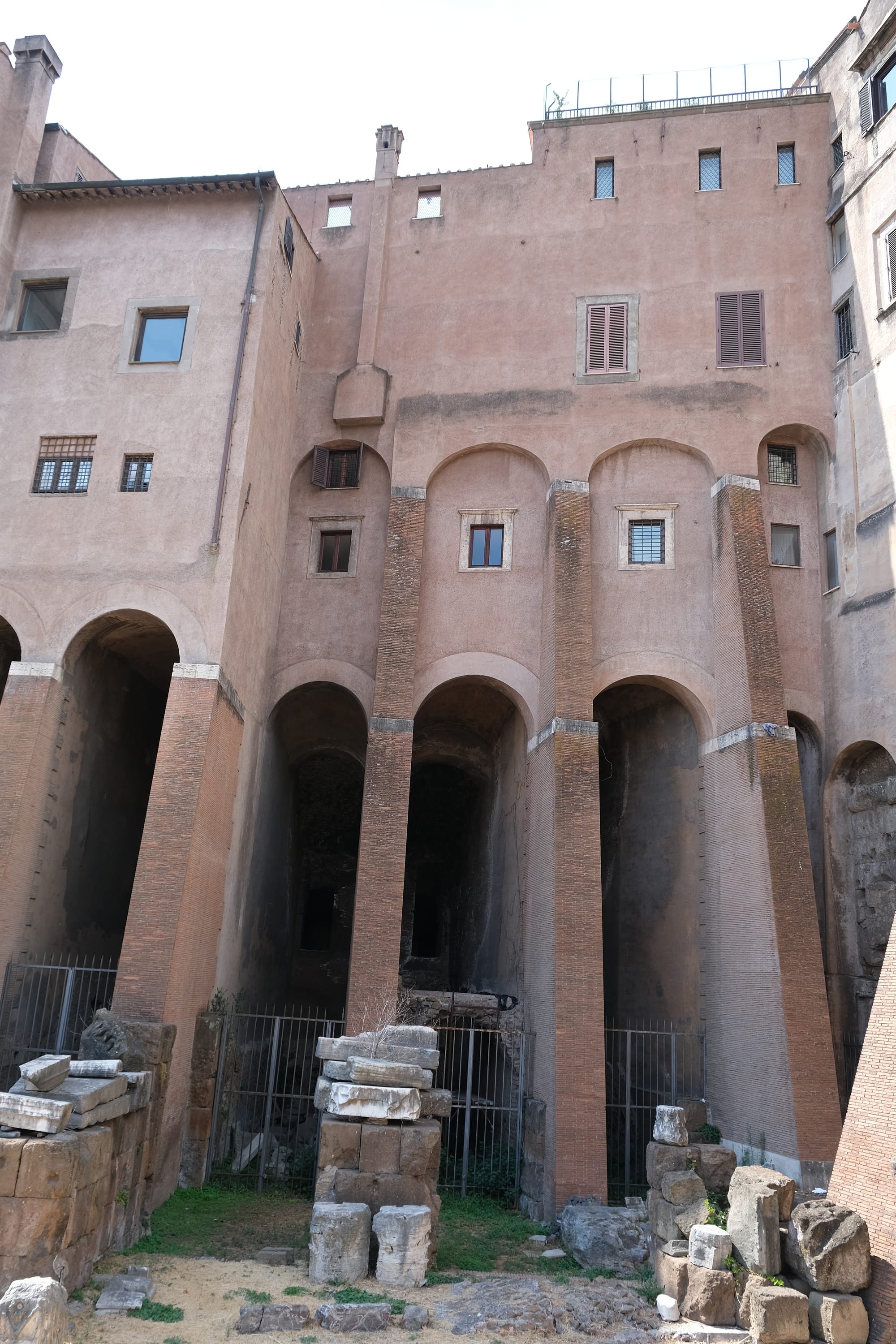
A comparison of the old arches with the newly built ones, and the supports built later to keep the old structure standing, but still conforming to the same form of an arch.
The Circus Maximus
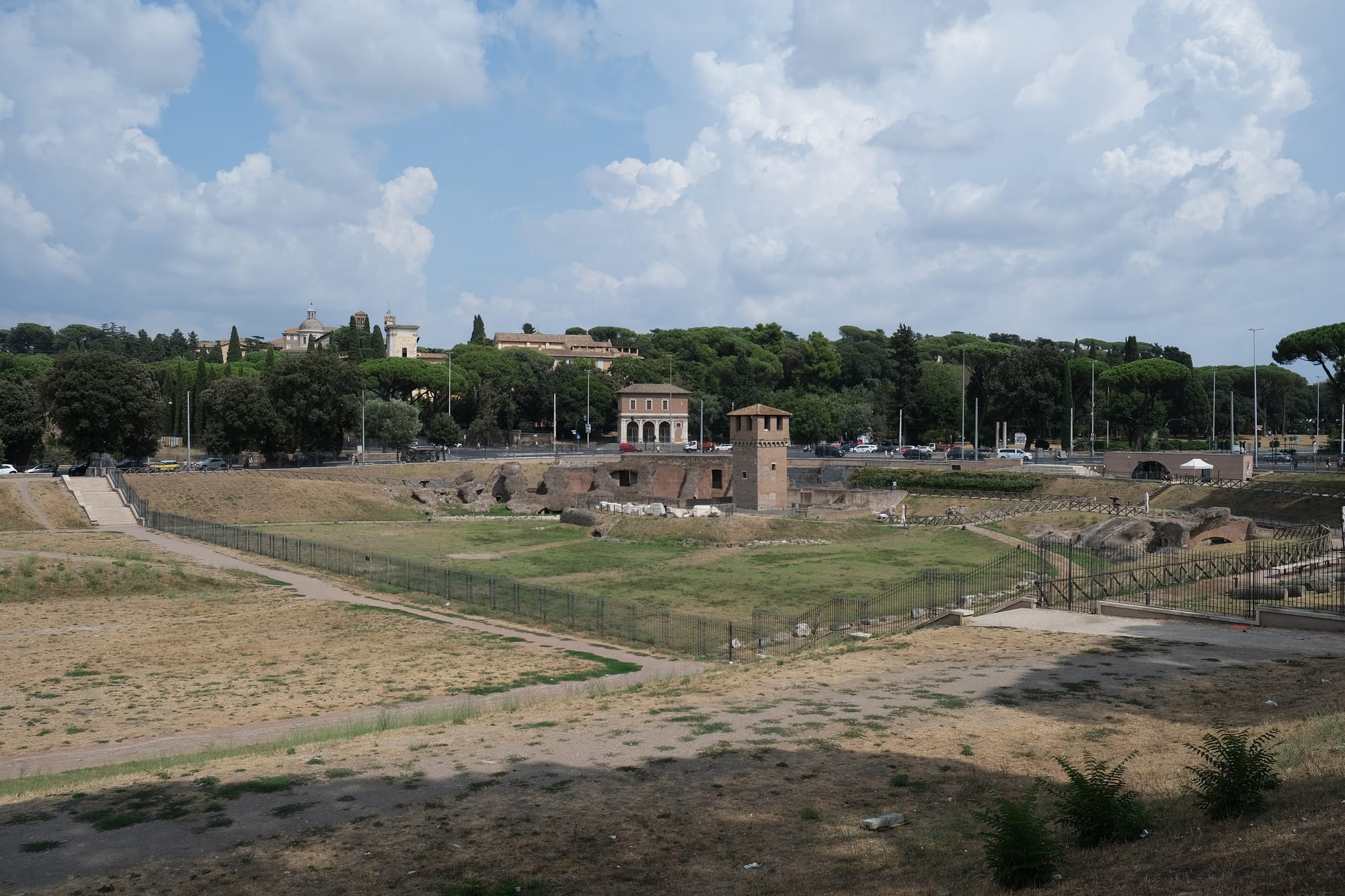
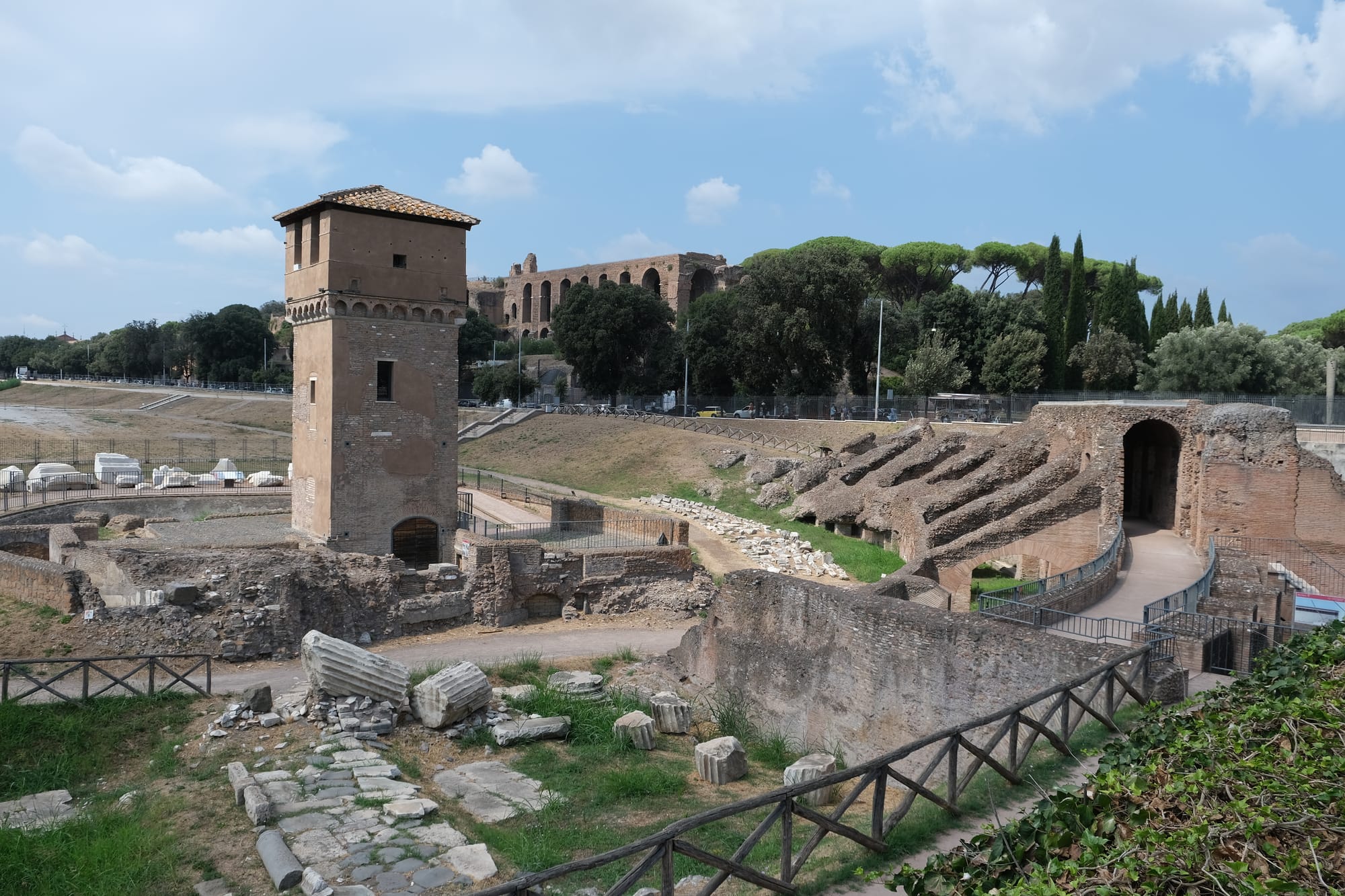
This large green field was once the Circus Maximus, at one point in its history it became a garden and a medieval tower was built here to protect it.
The Orange Tree Garden
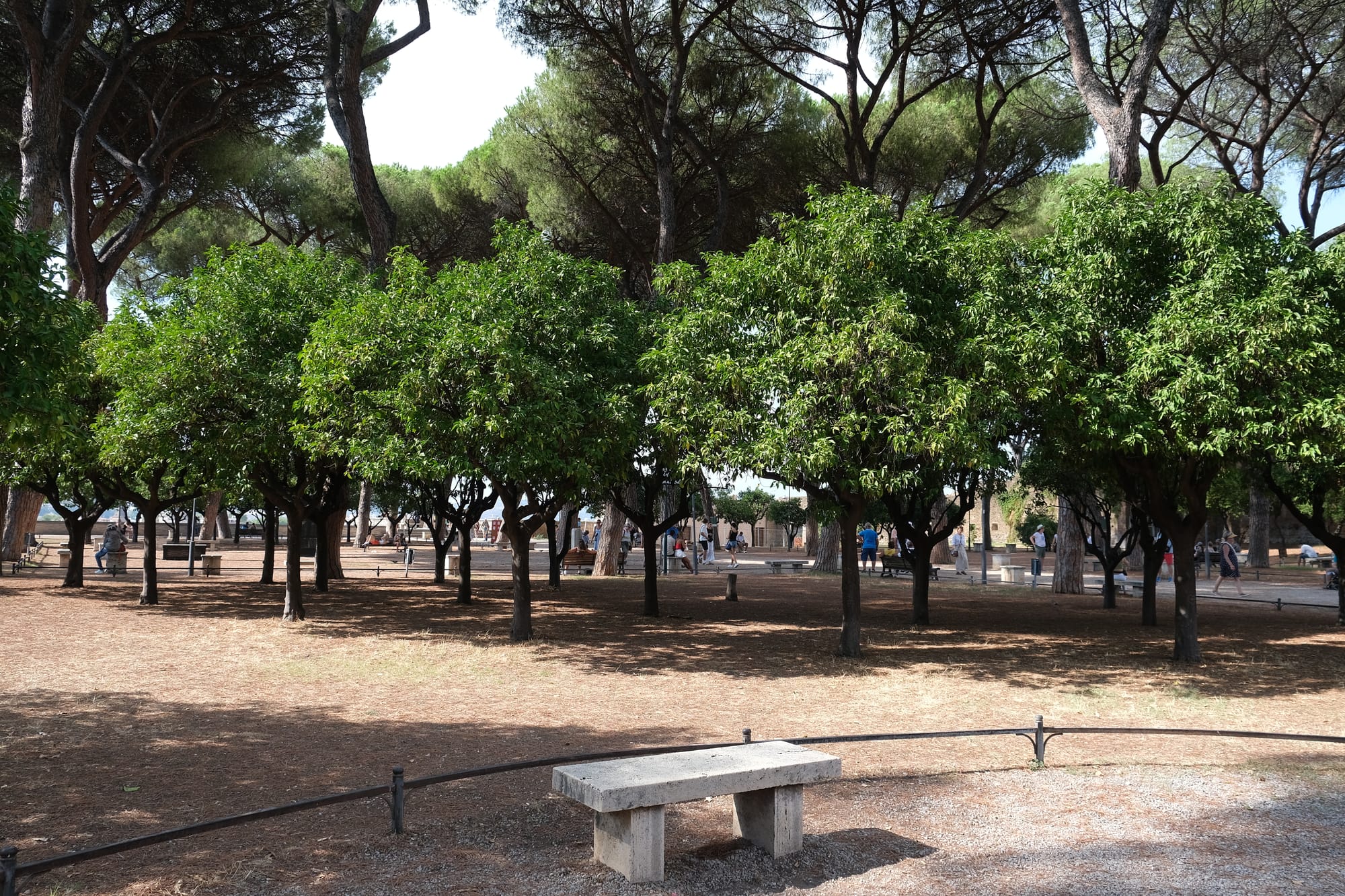
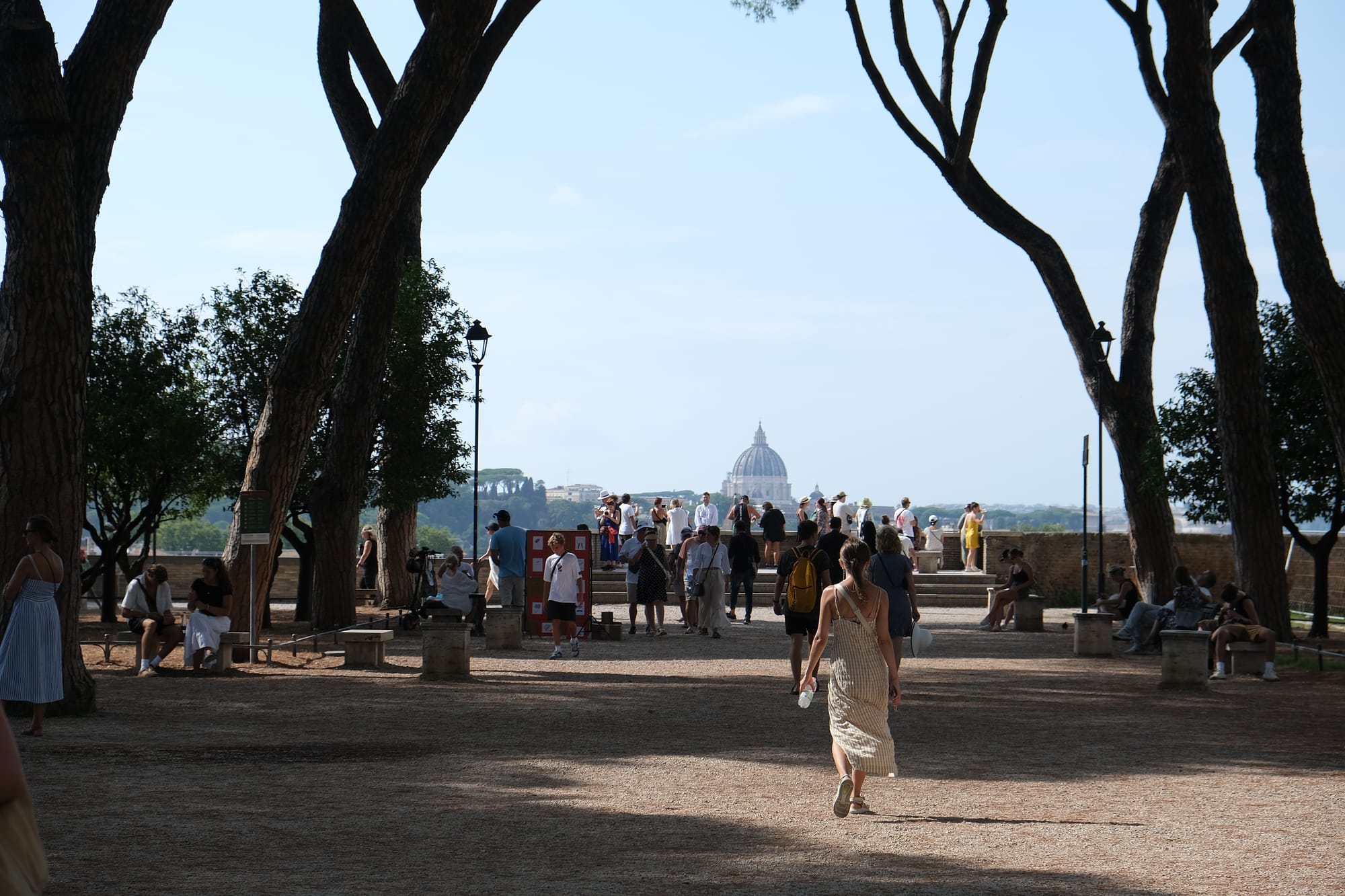
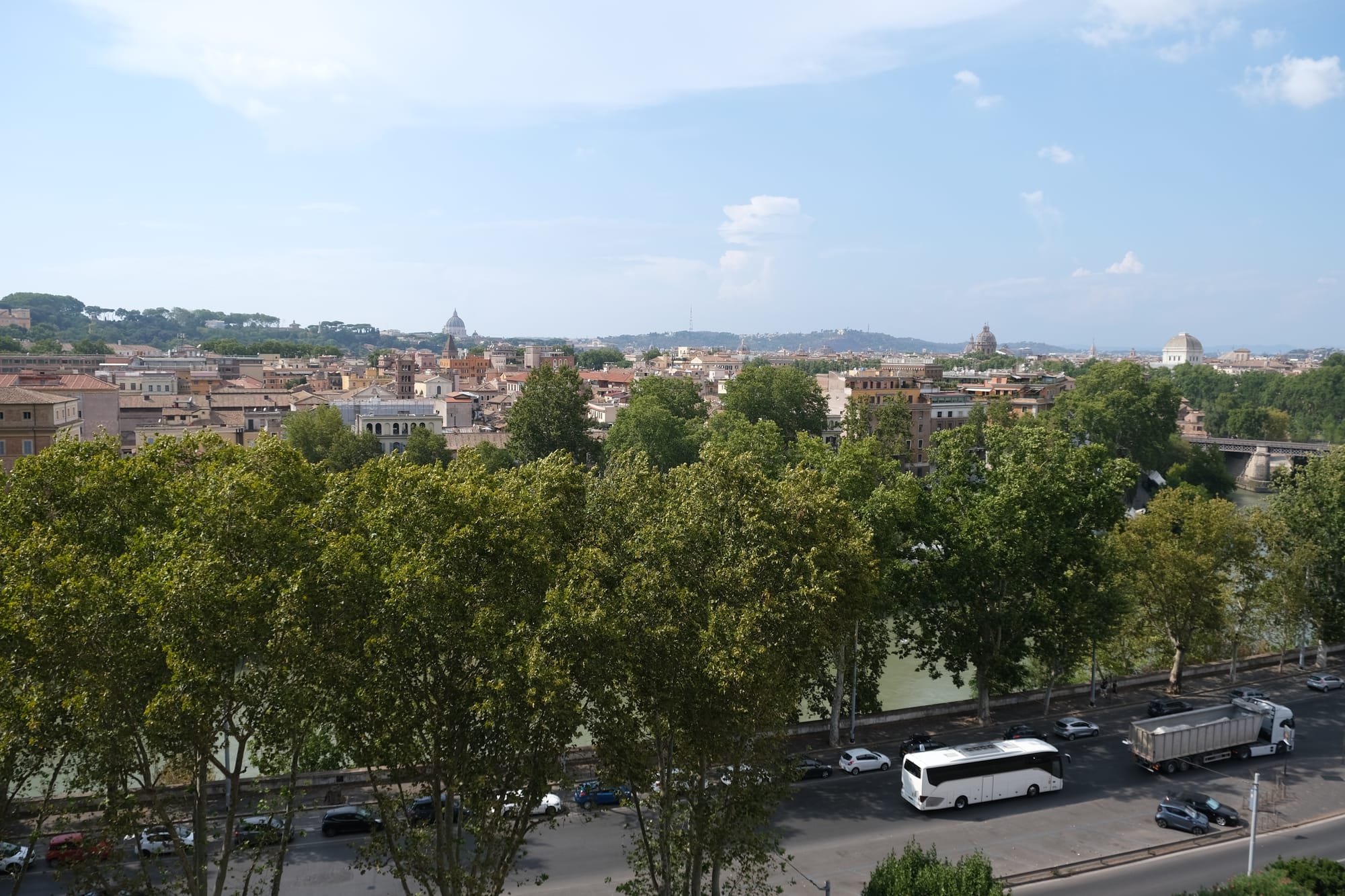
The Orange Tree Garden is a lovely shady spot, perfect to stop by on a hot summer day, with a wonderful view of Rome and the Vatican.
The Aurelian Walls
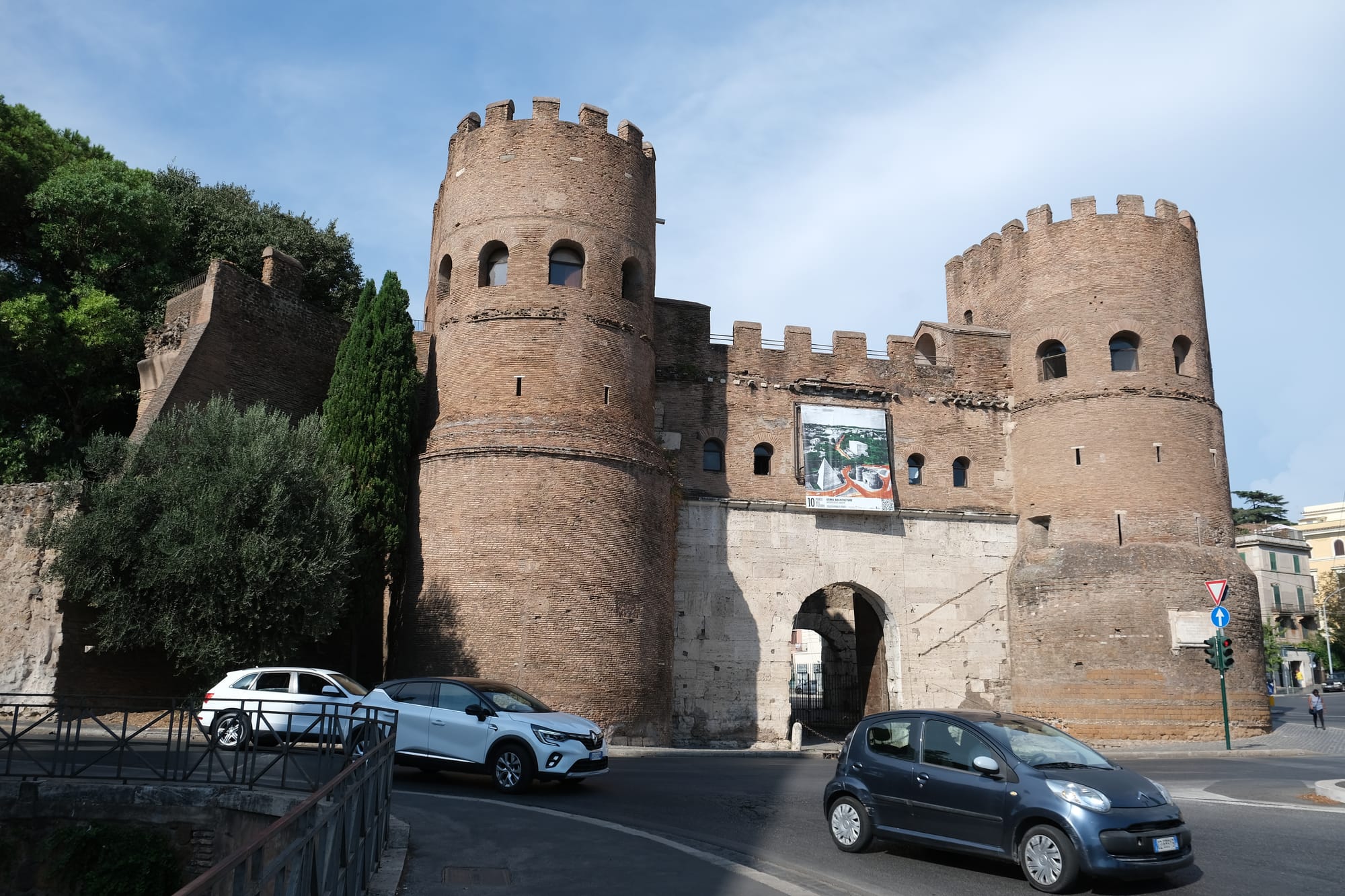
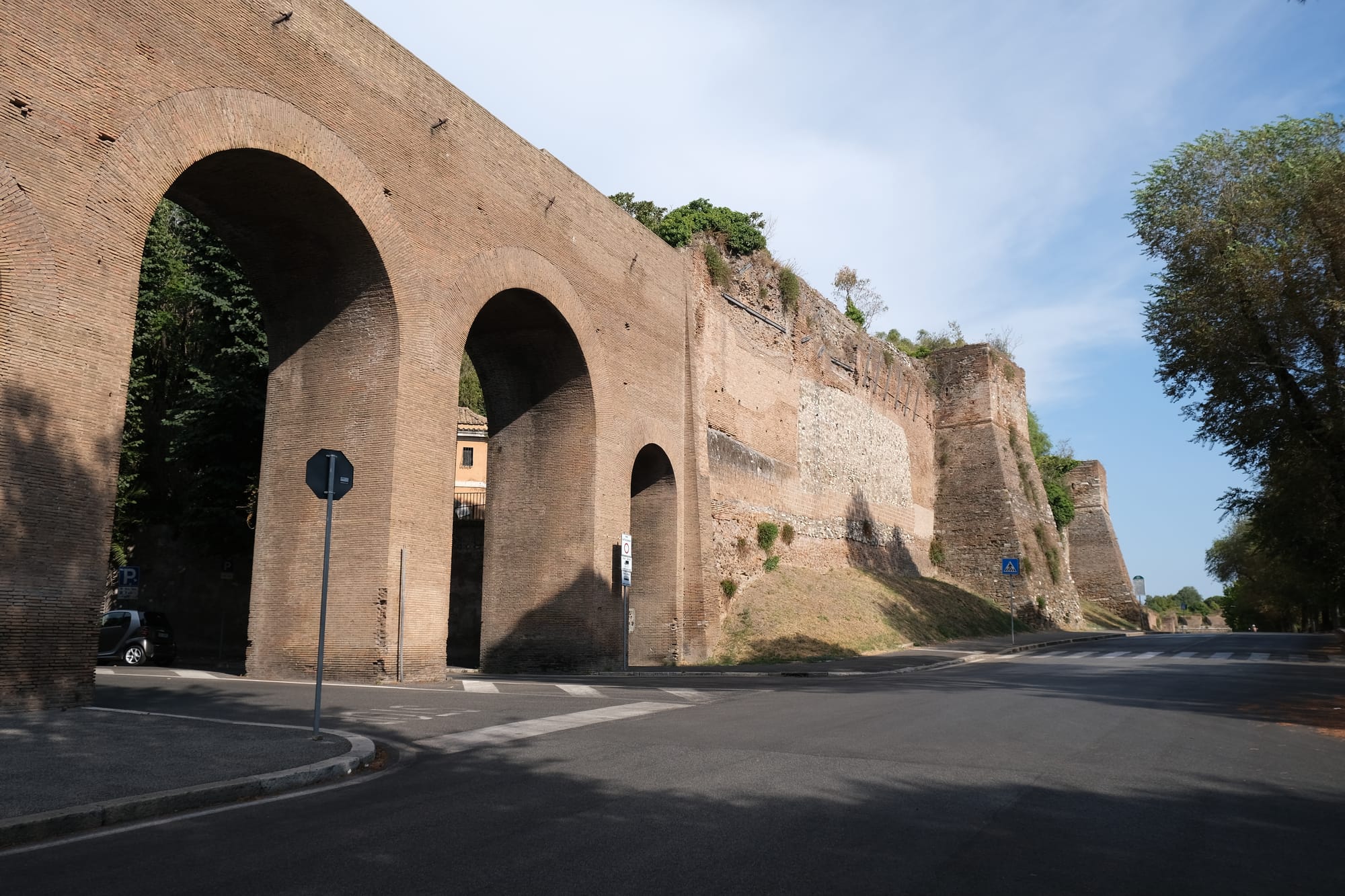
The outer walls of the ancient city of Rome.
Baths of Caracalla
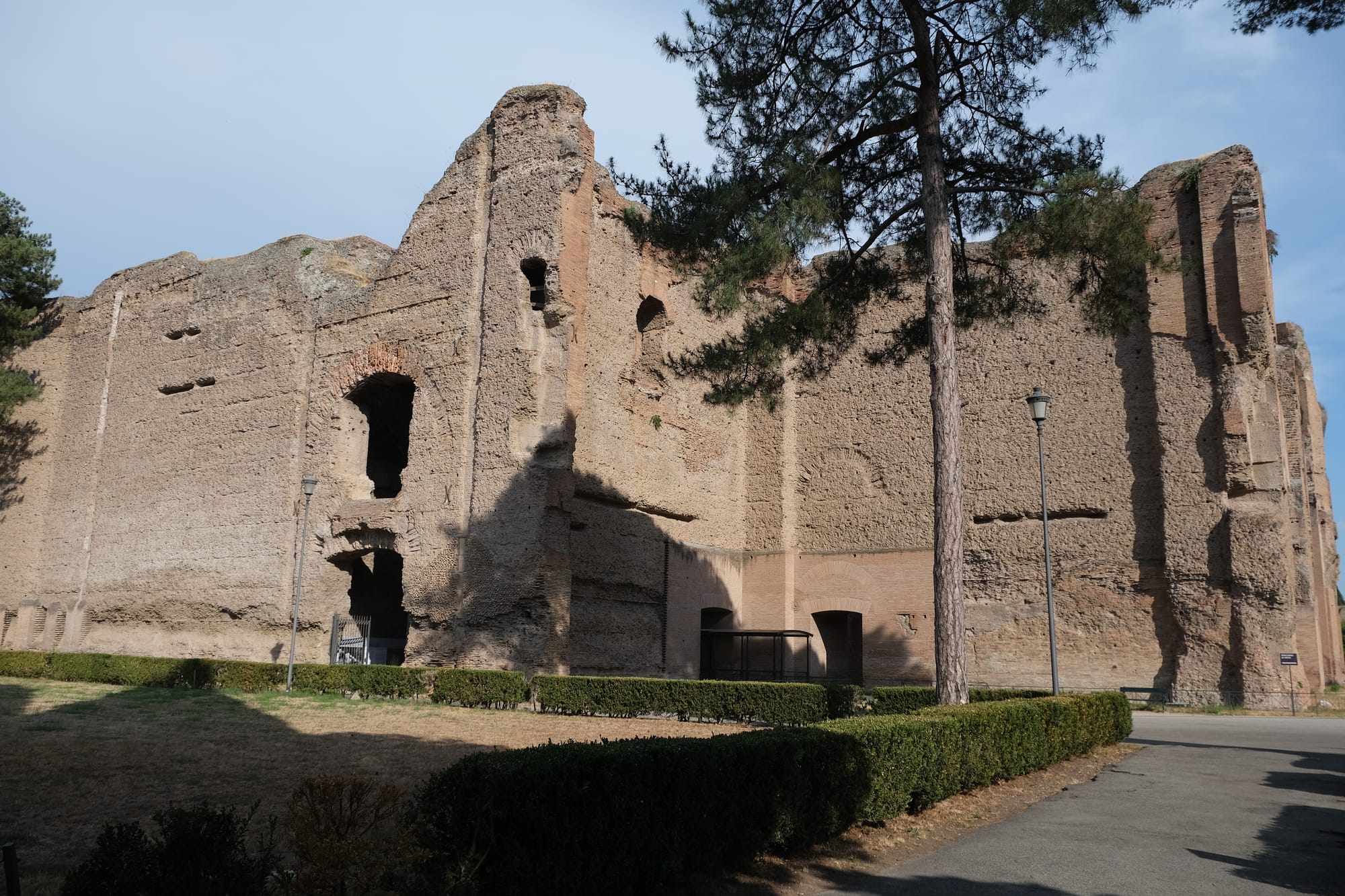
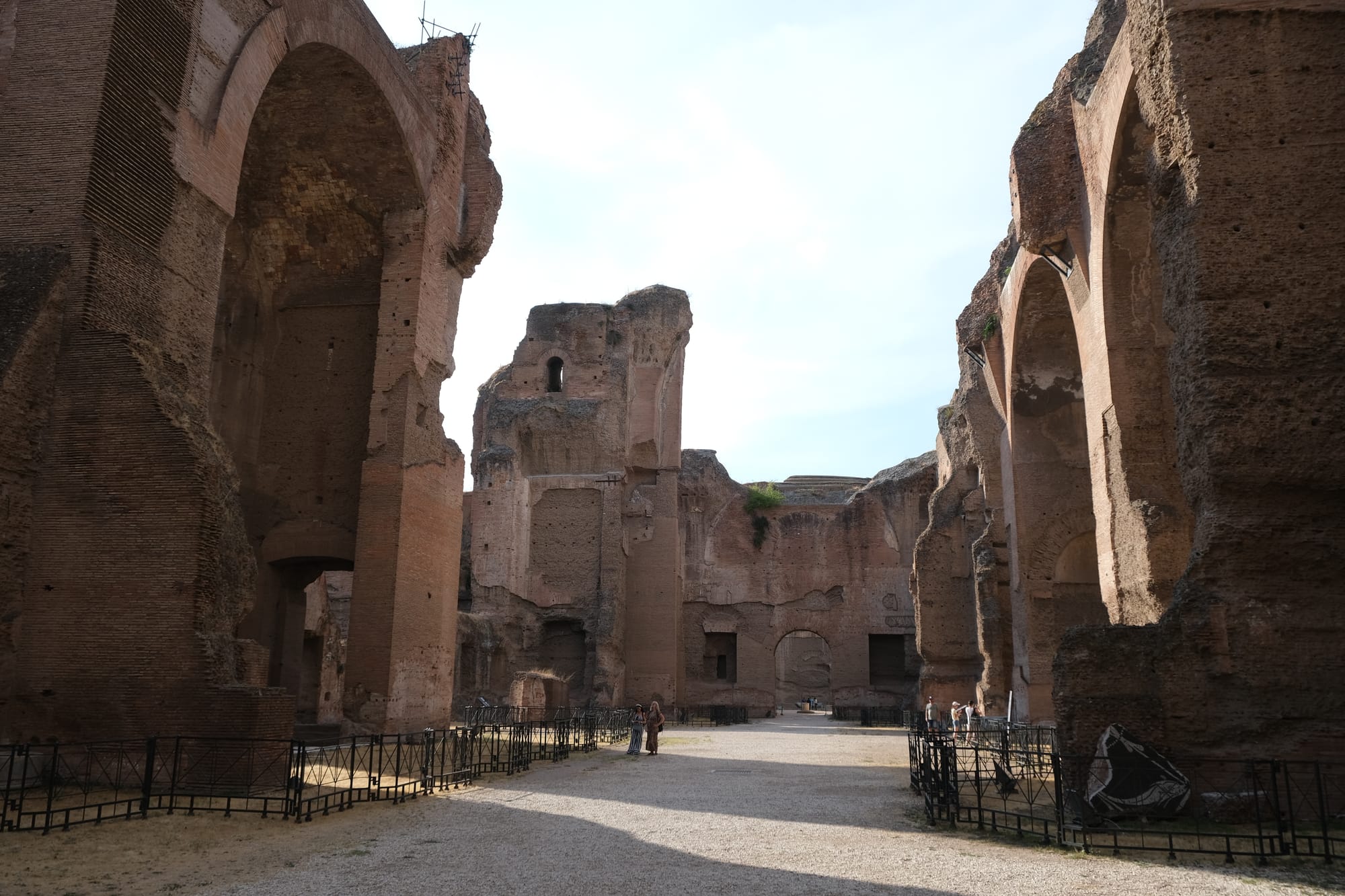
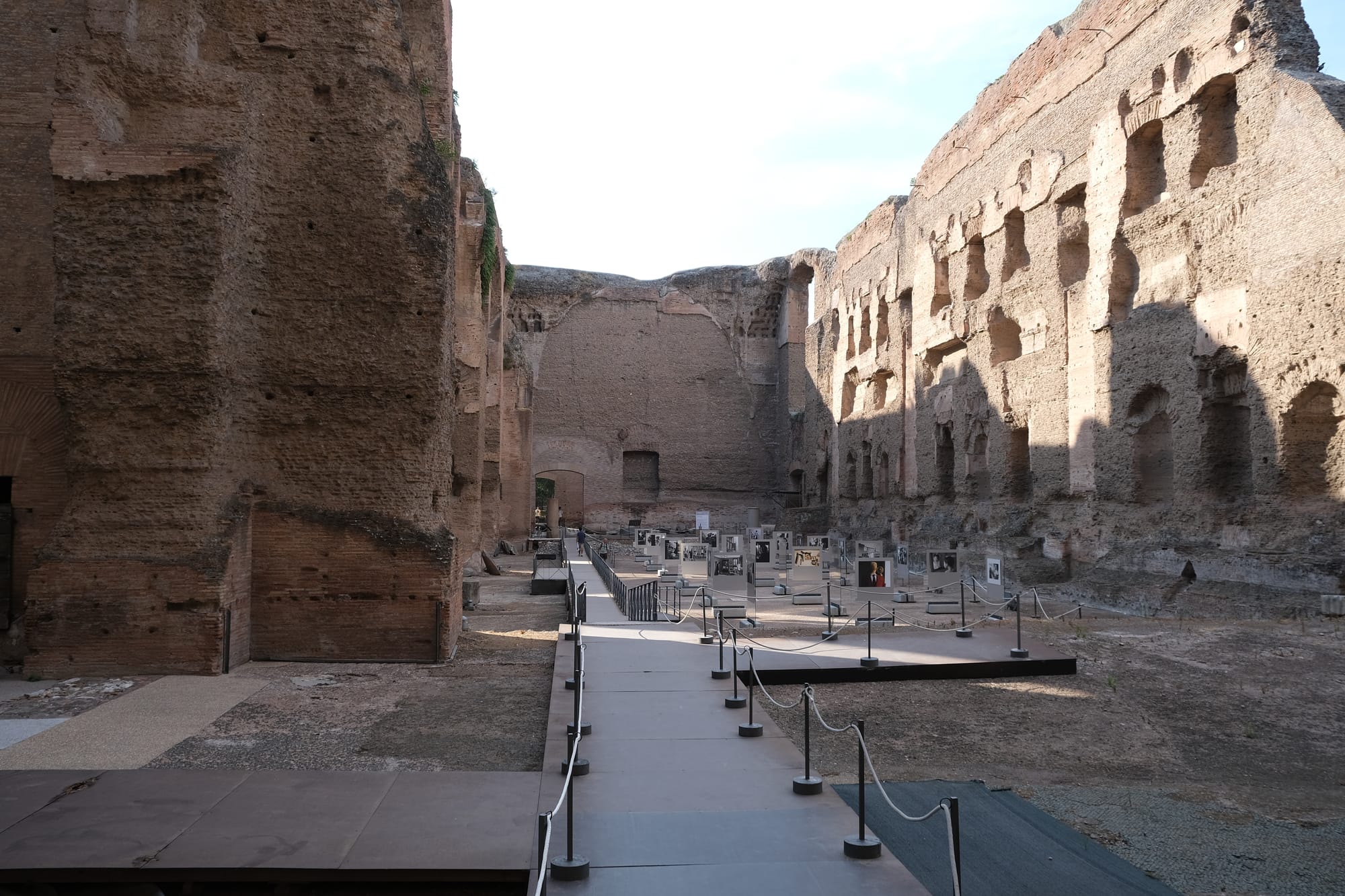
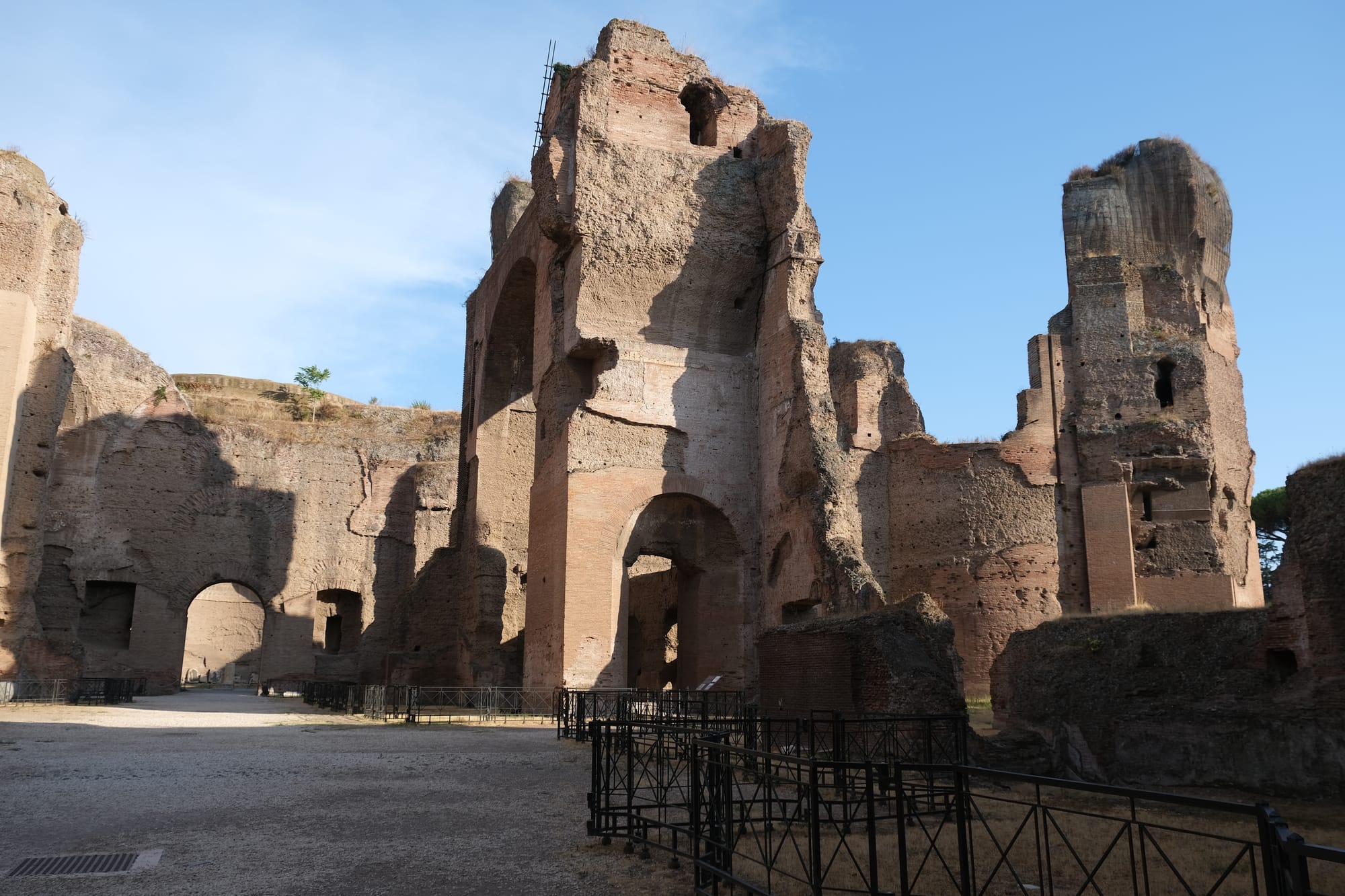
The ruins of a large Roman bath house.
For me, these ruins were the ones that most vividly conveyed the grandeur of the Roman Empire. Even in ruins this building was incredibly impressive and huge, and yet it was just a bath house. How much more amazing would more important Roman buildings have been?
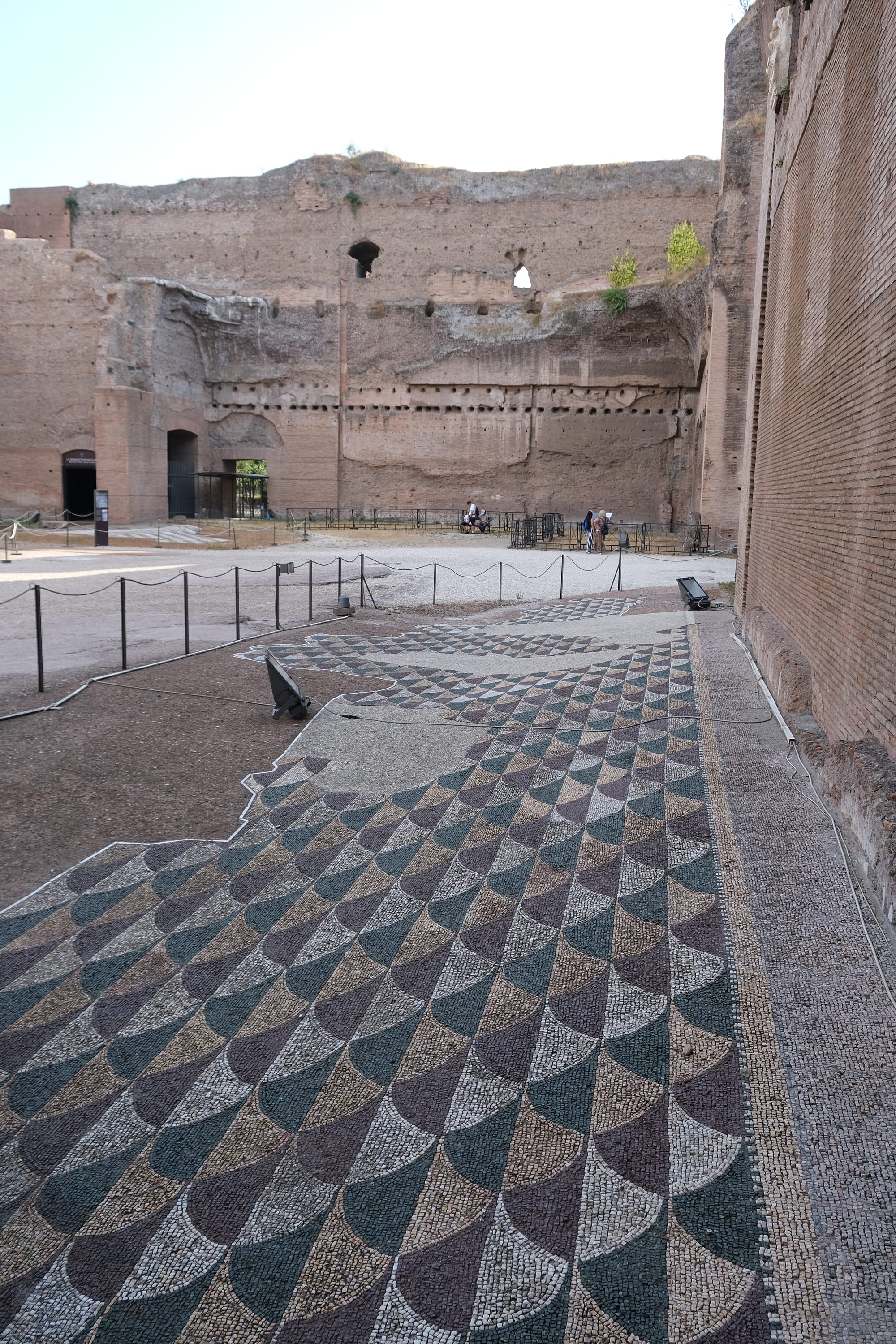
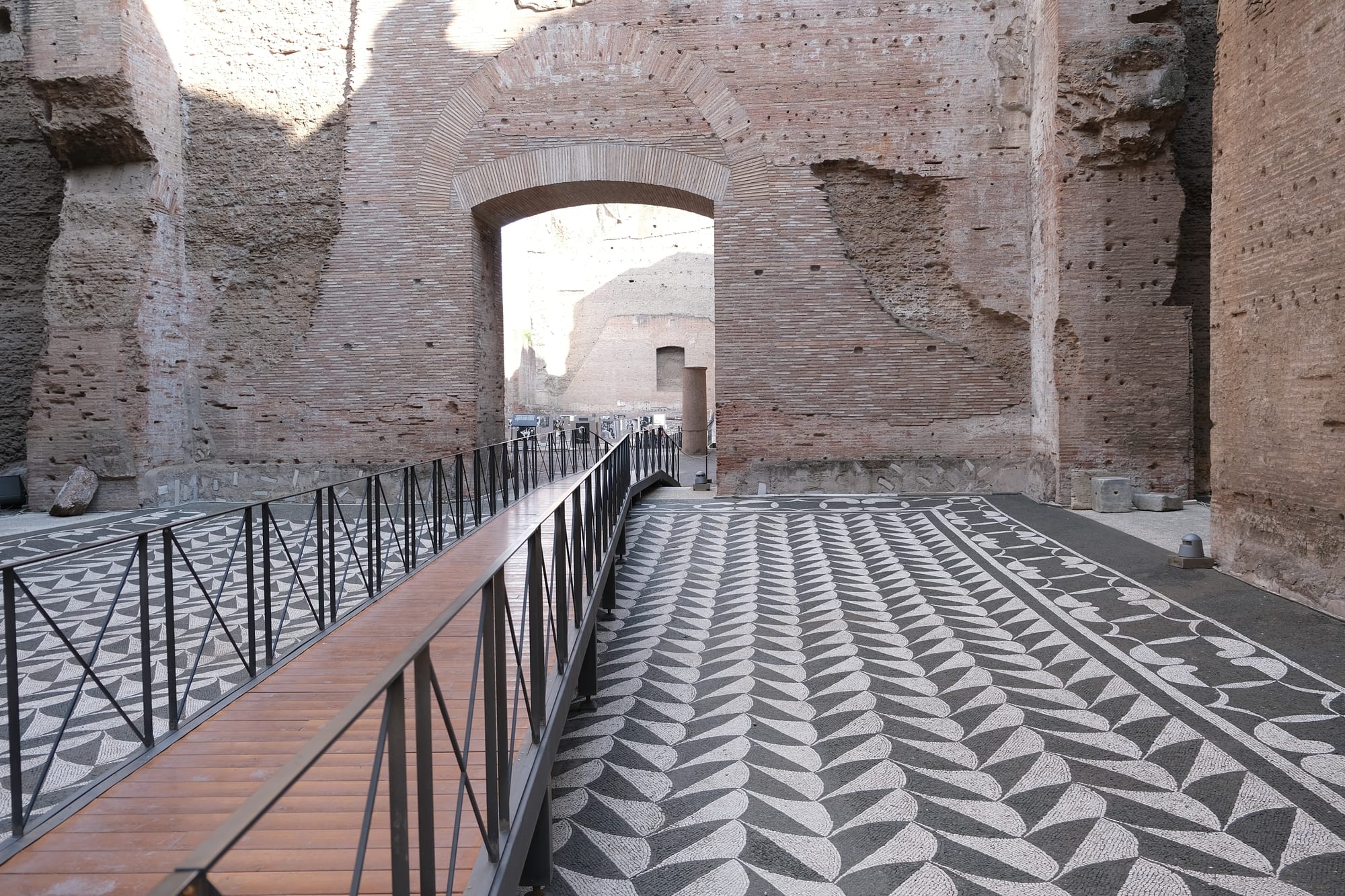
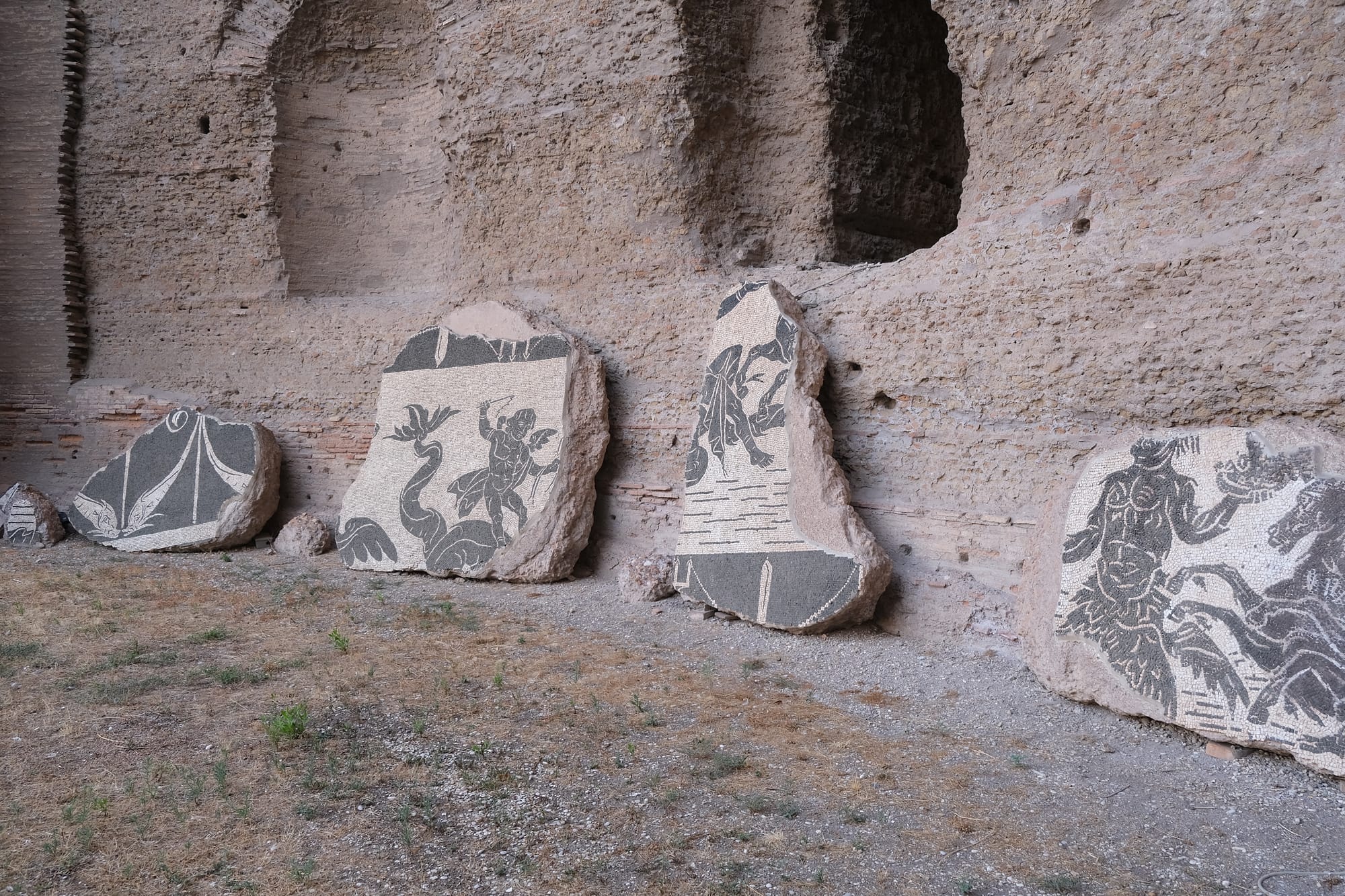
Some of the original mosaic floors of the bath house that survived through the centuries.
For me, Rome was an impressive city for its archaeological significance. I was glad to visit it with my brother; I am very thankful for him as he took the lead in organising many of the tours and figuring out all the good places to visit. In just two and a half days, I felt like I saw all the key attractions. Standing amongst the ruins of Rome helped me to better understand the history of this city in a way that can only be experienced in person. I am glad that these historical sites are open for visitors to see and I hope they will continue to be preserved for future generations.
Thanks for reading – Edward
Written 20th of November 2024